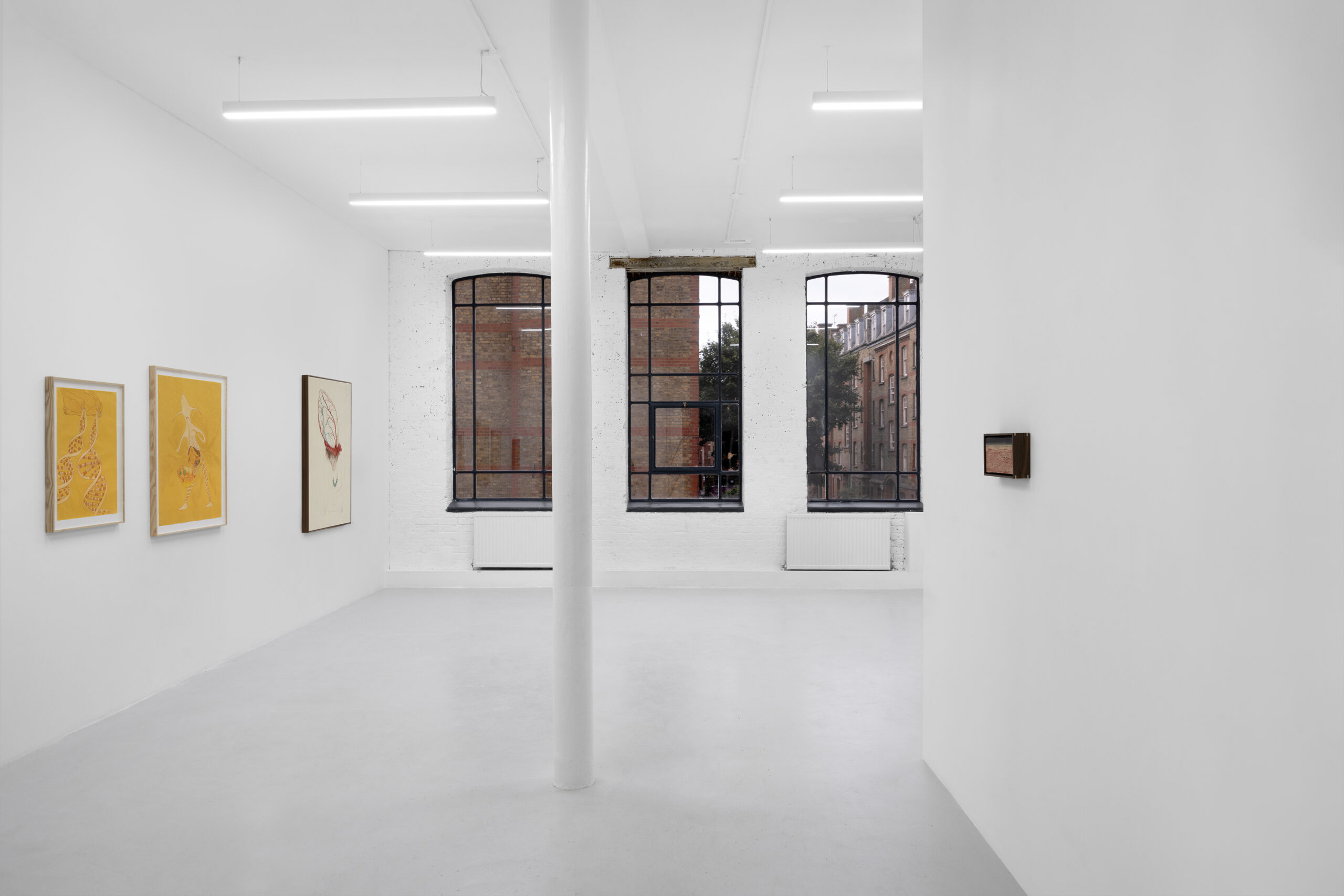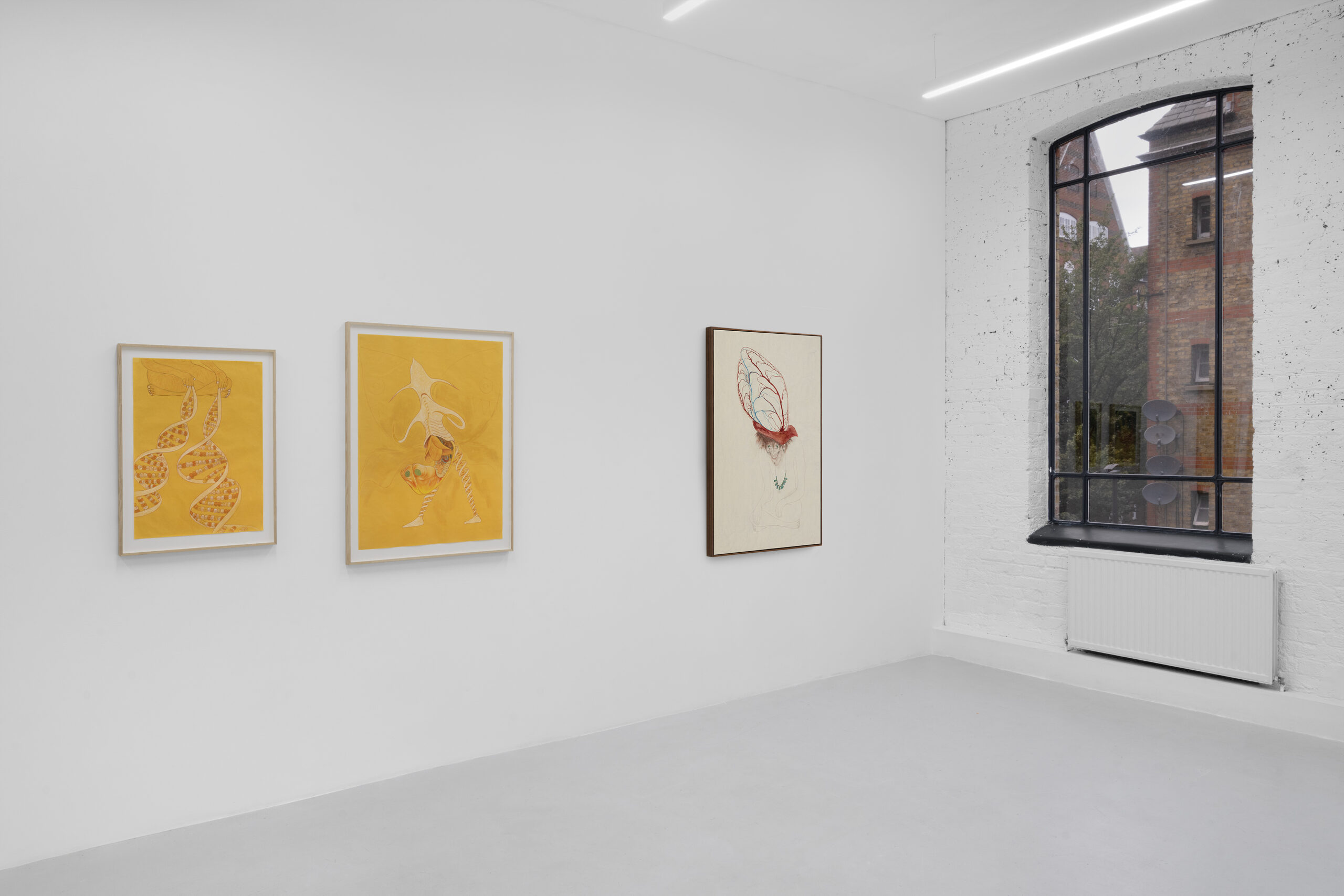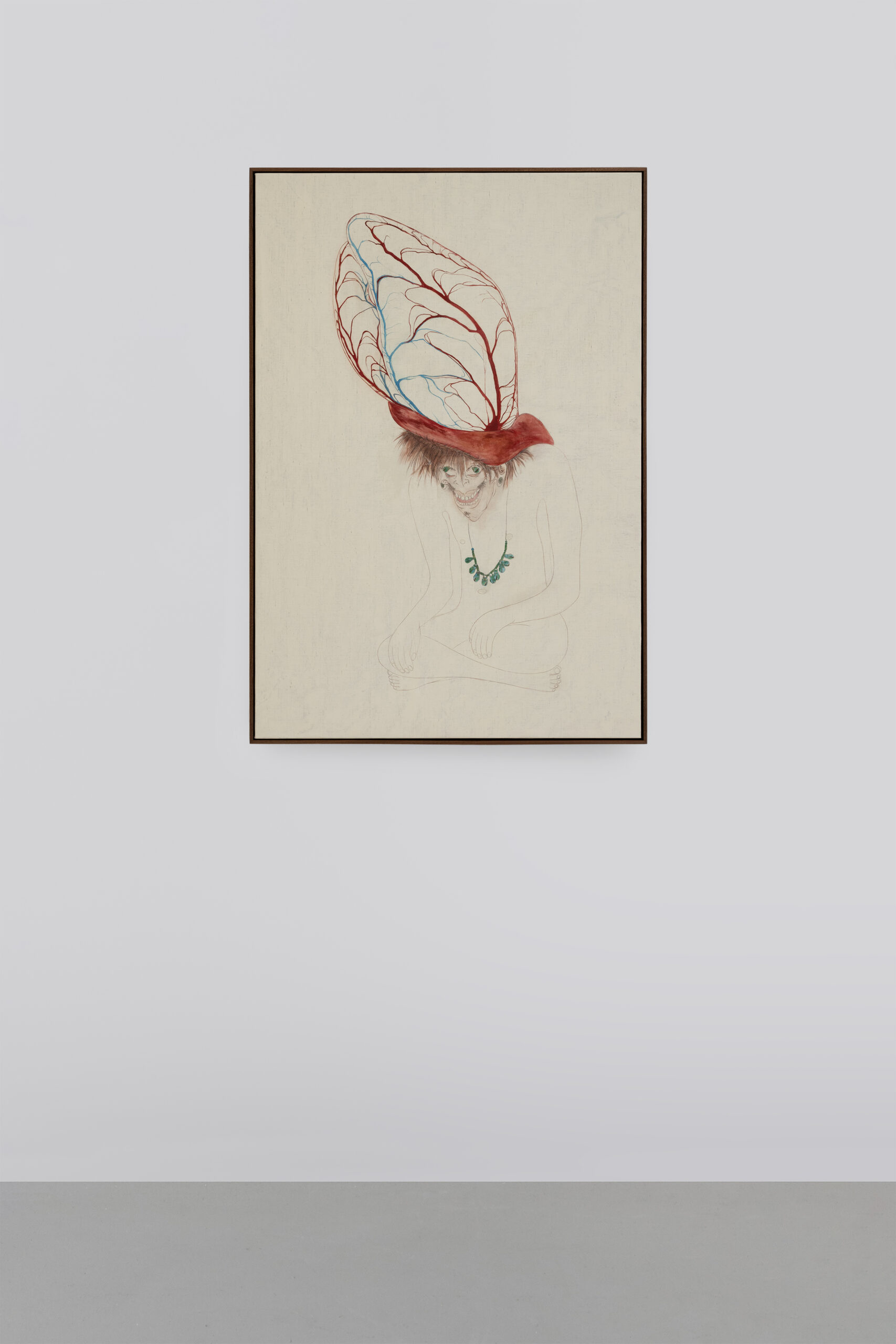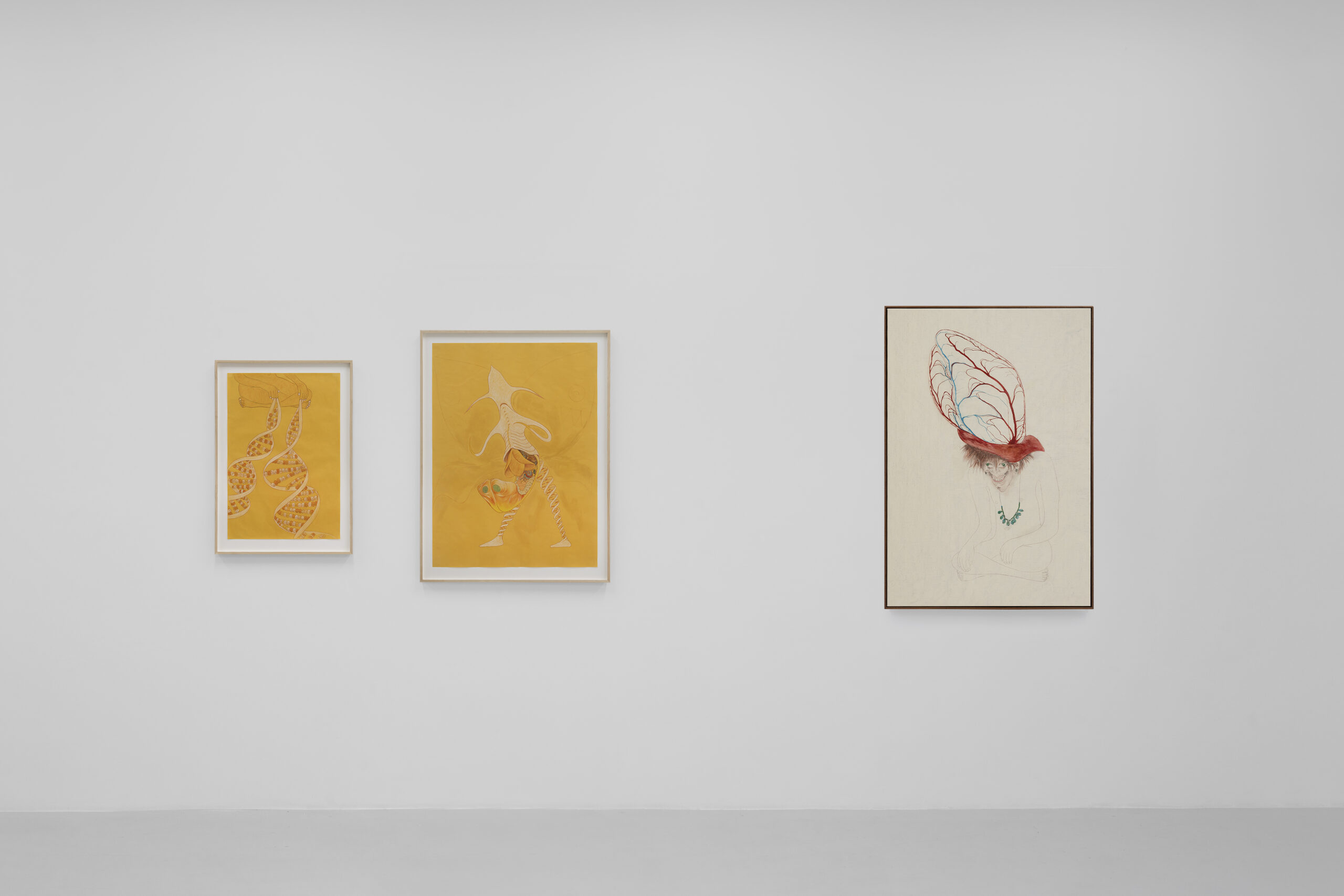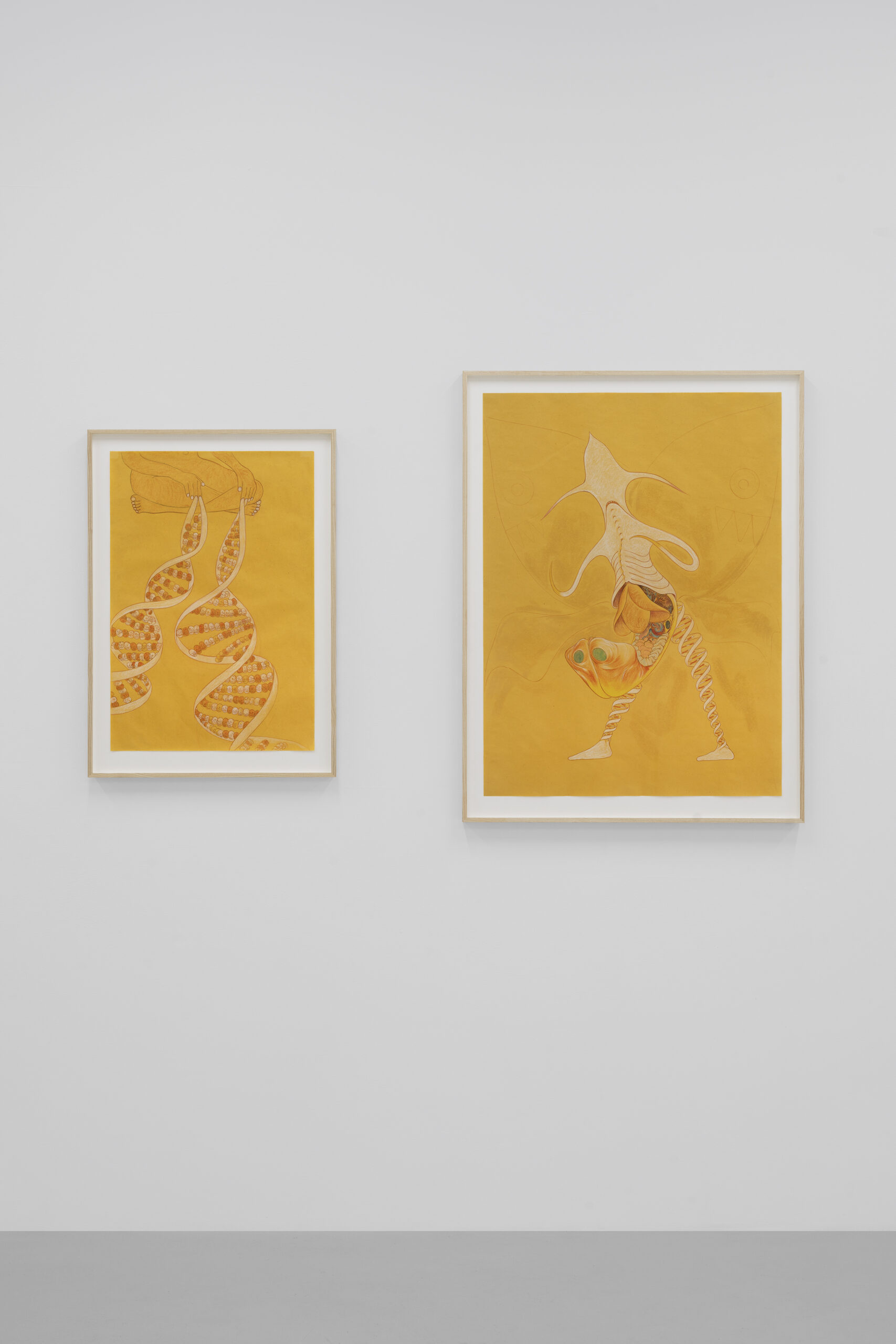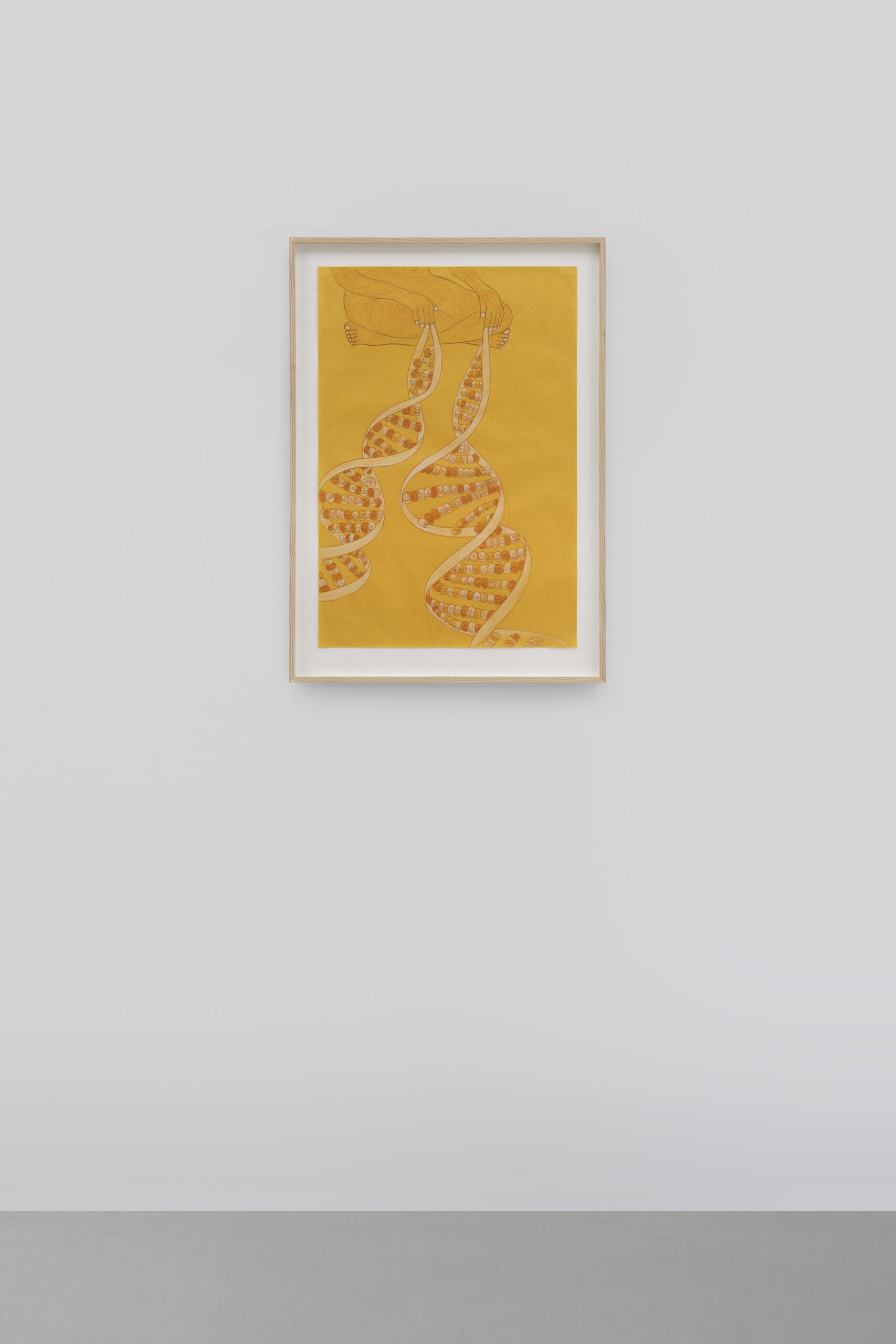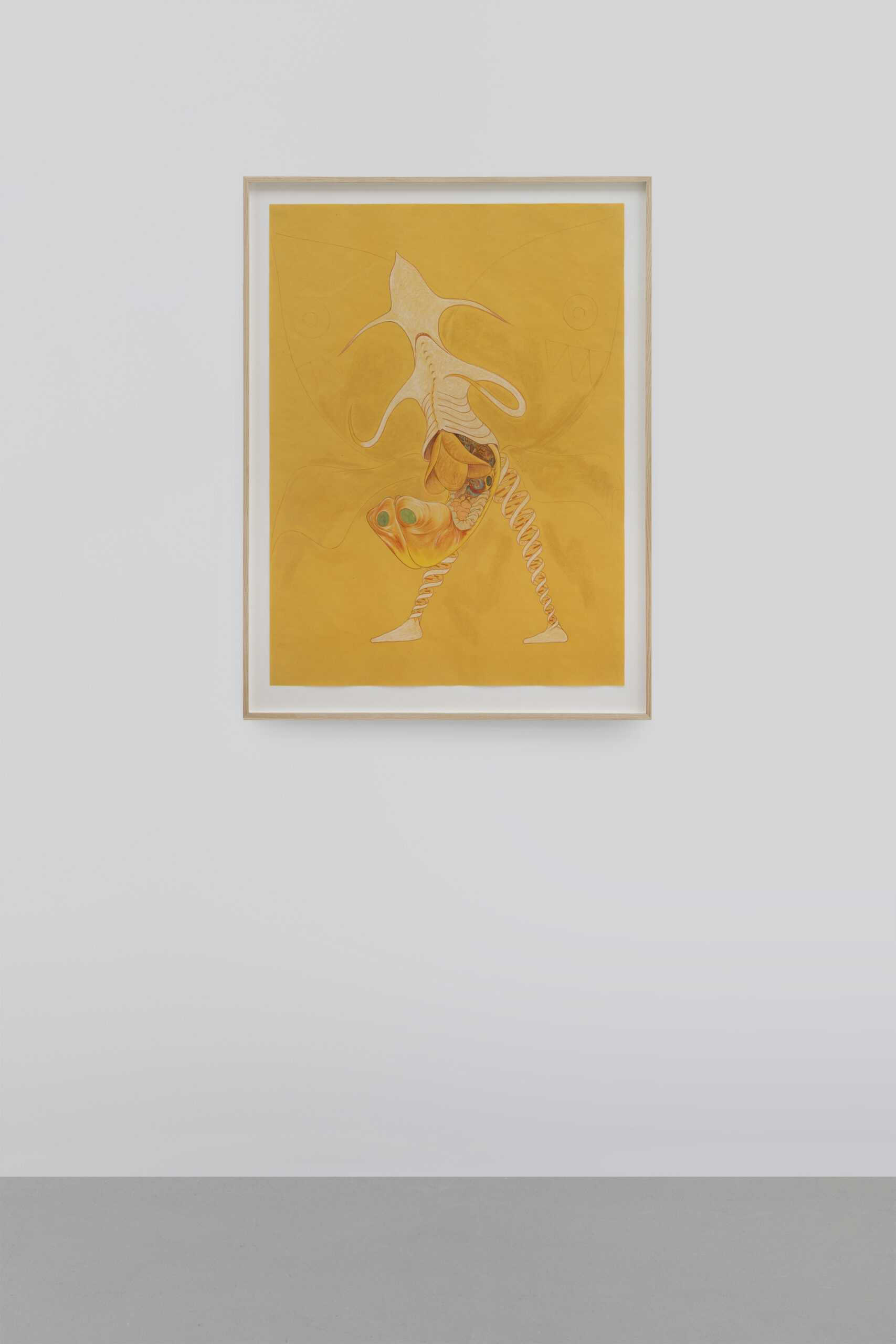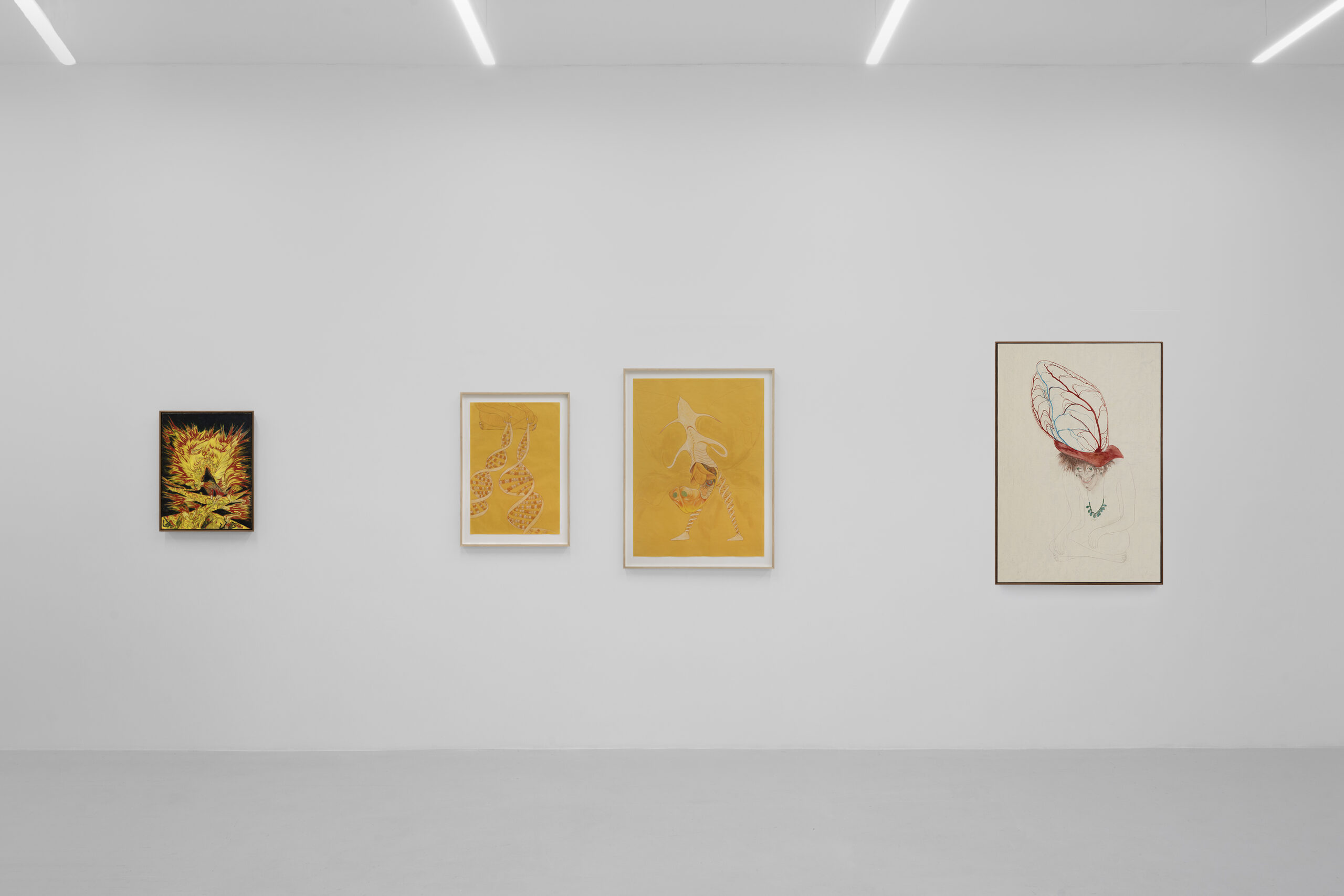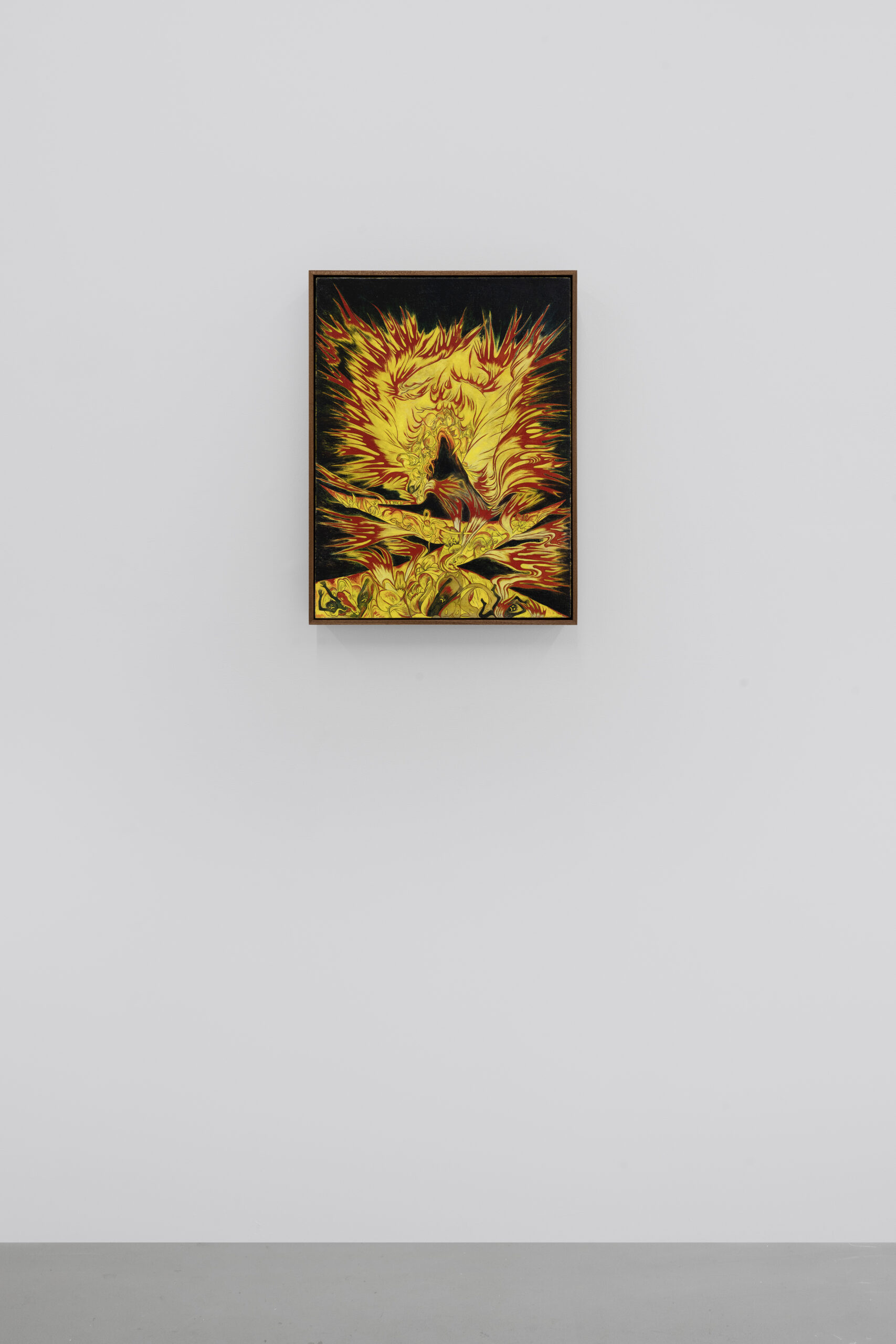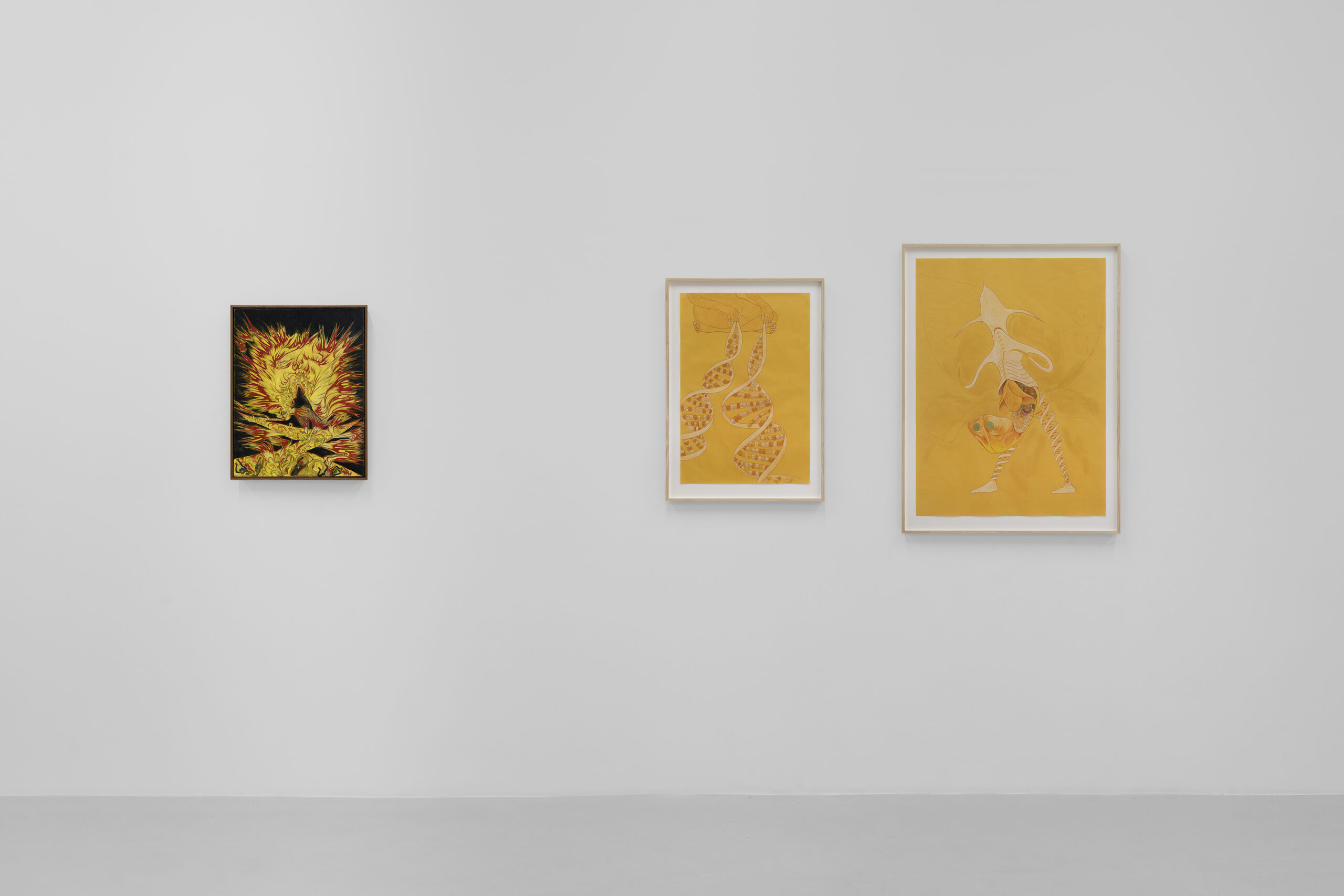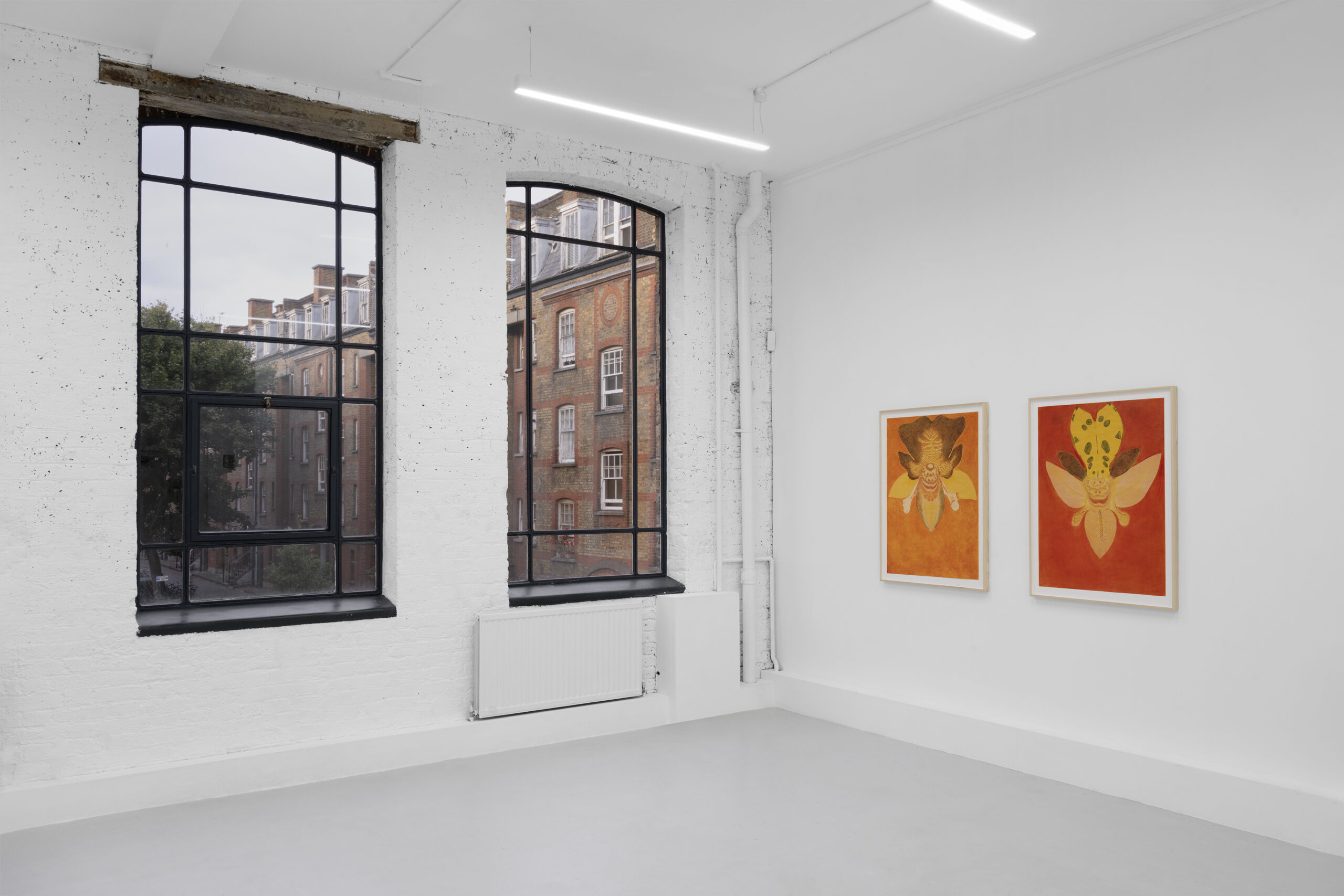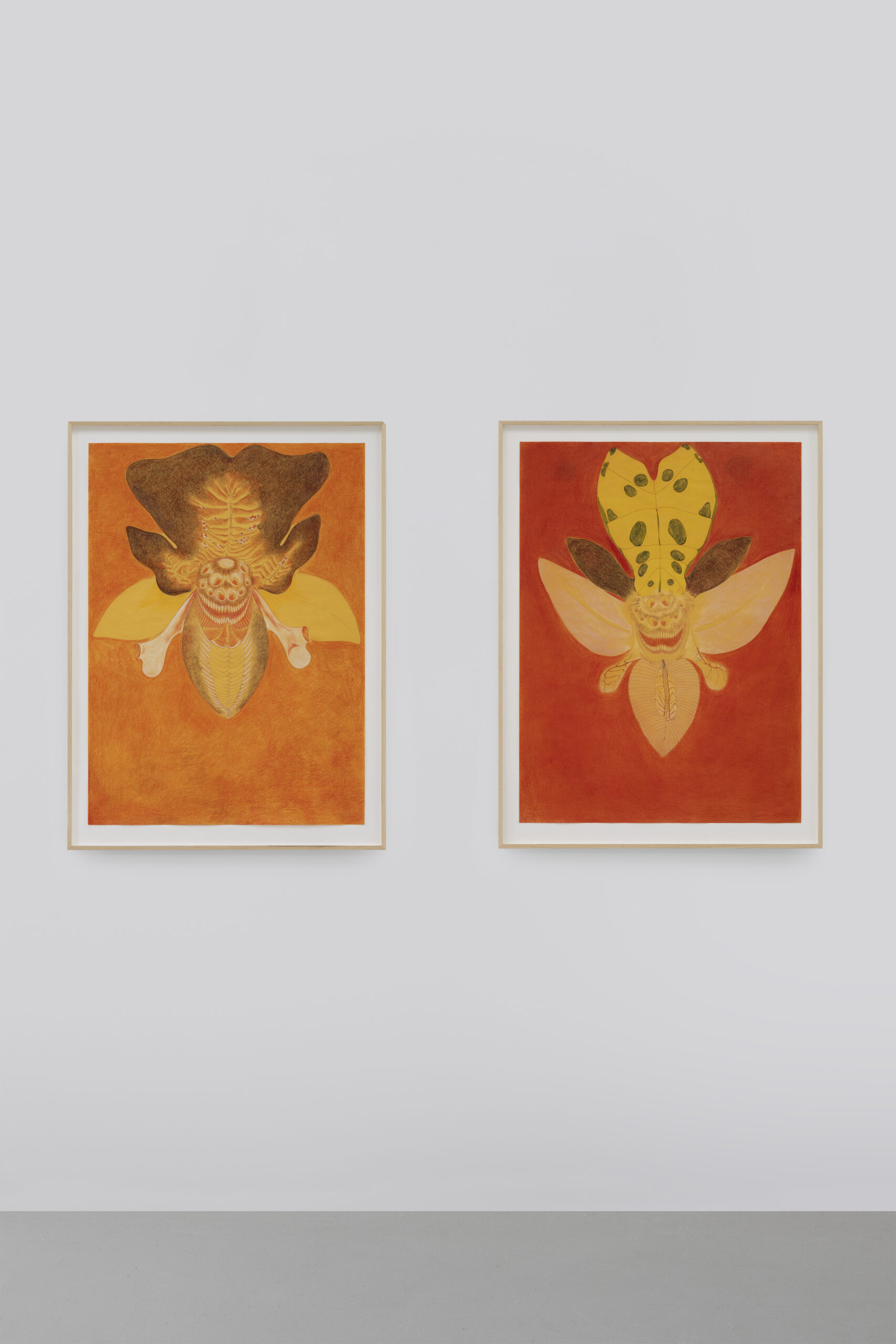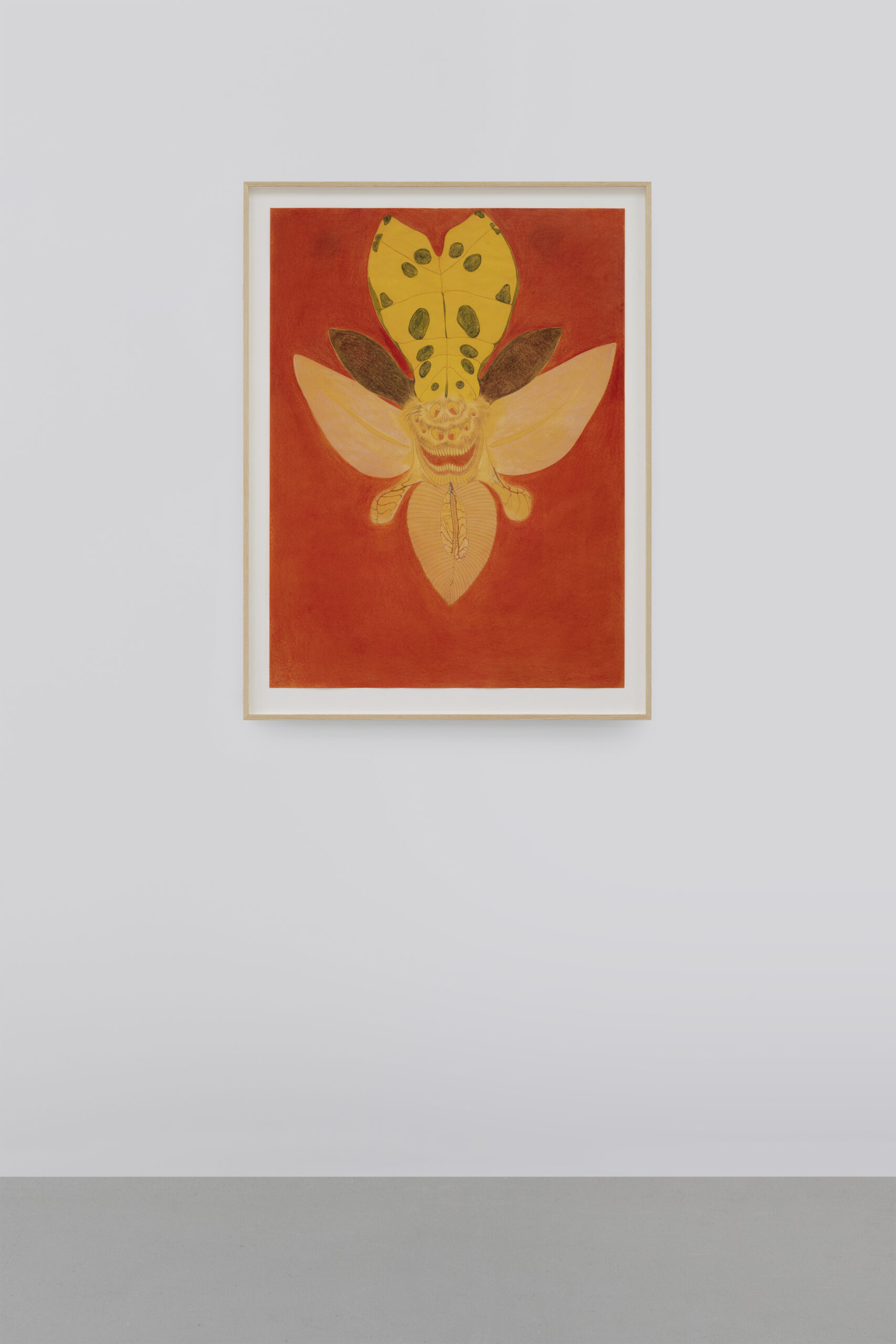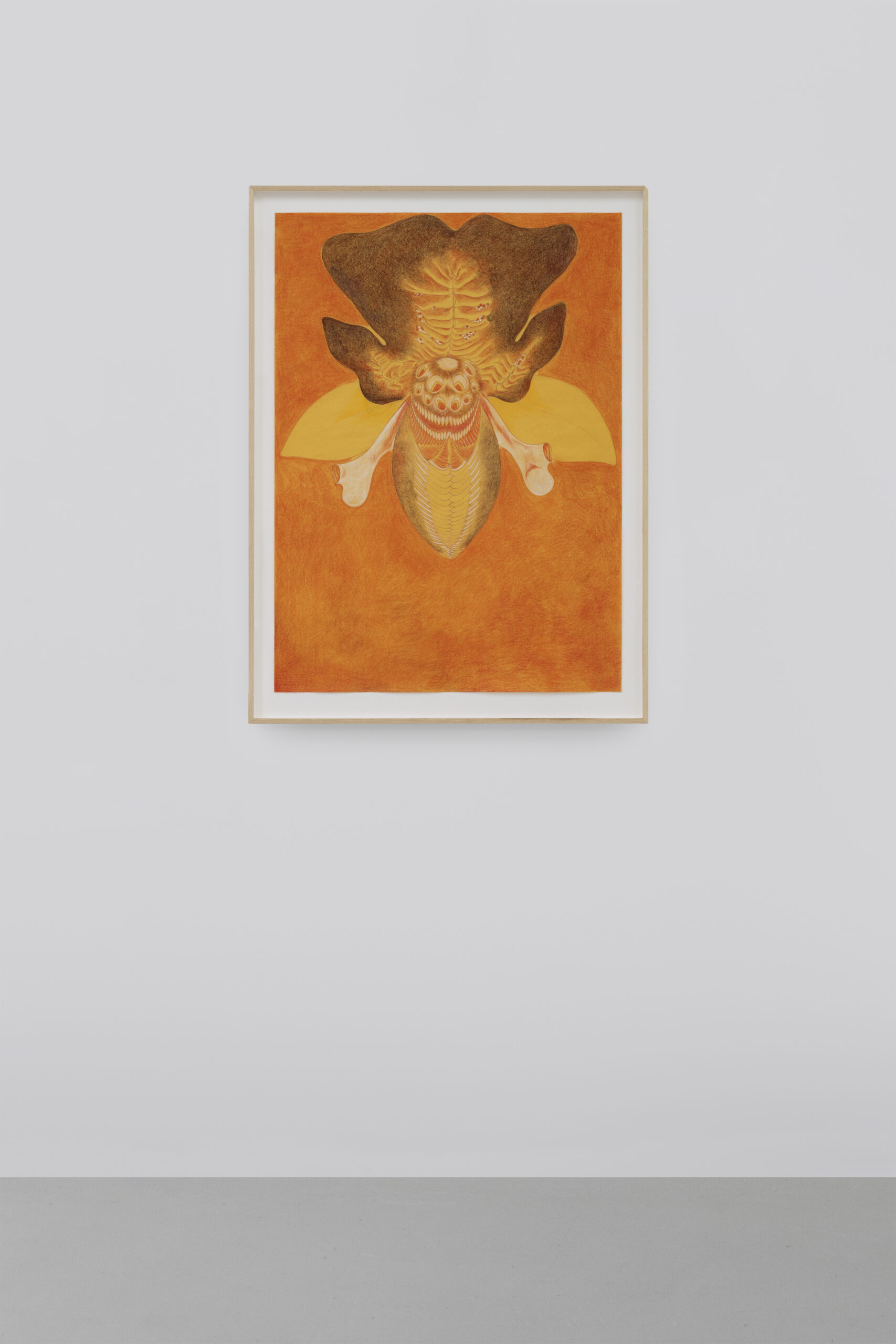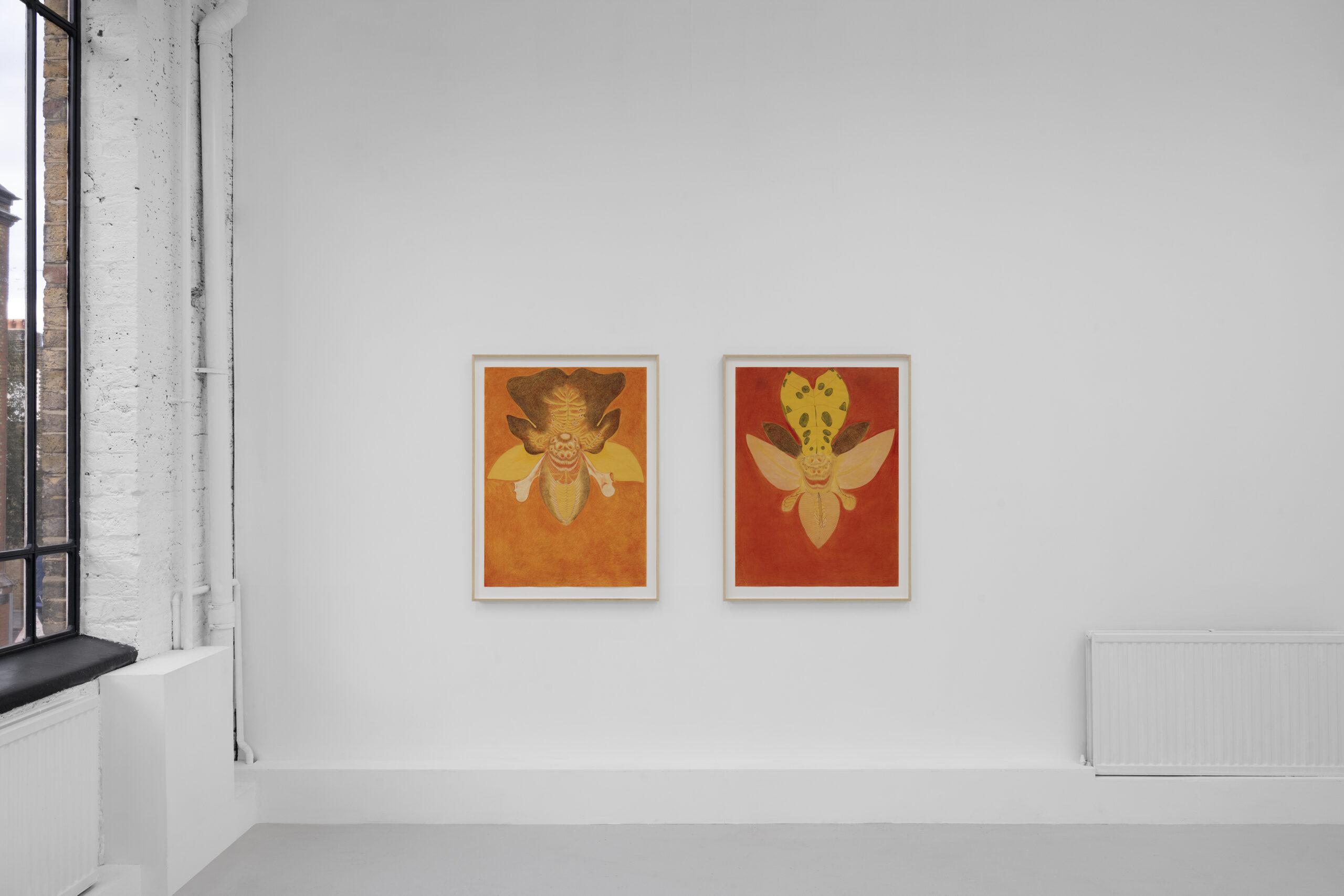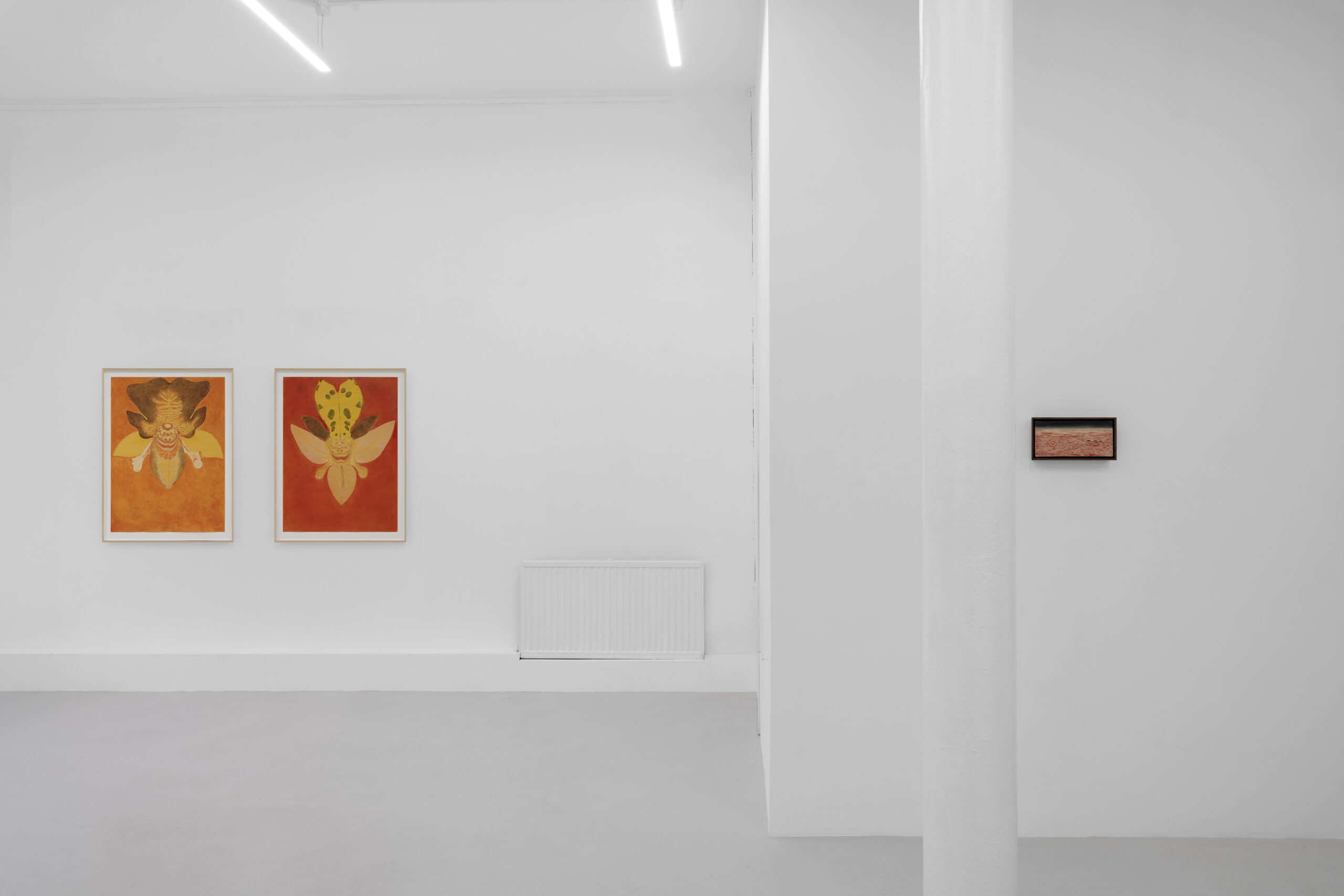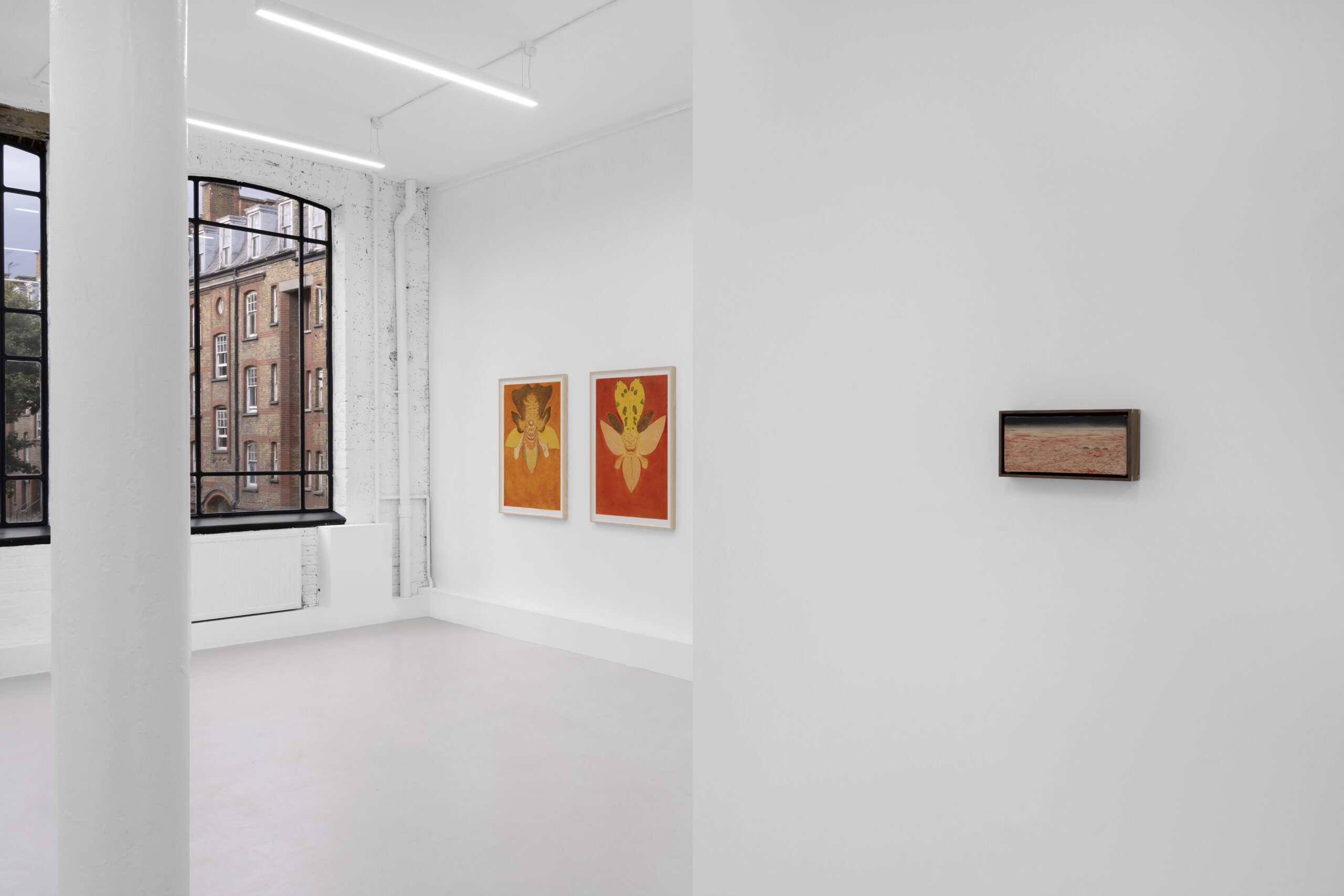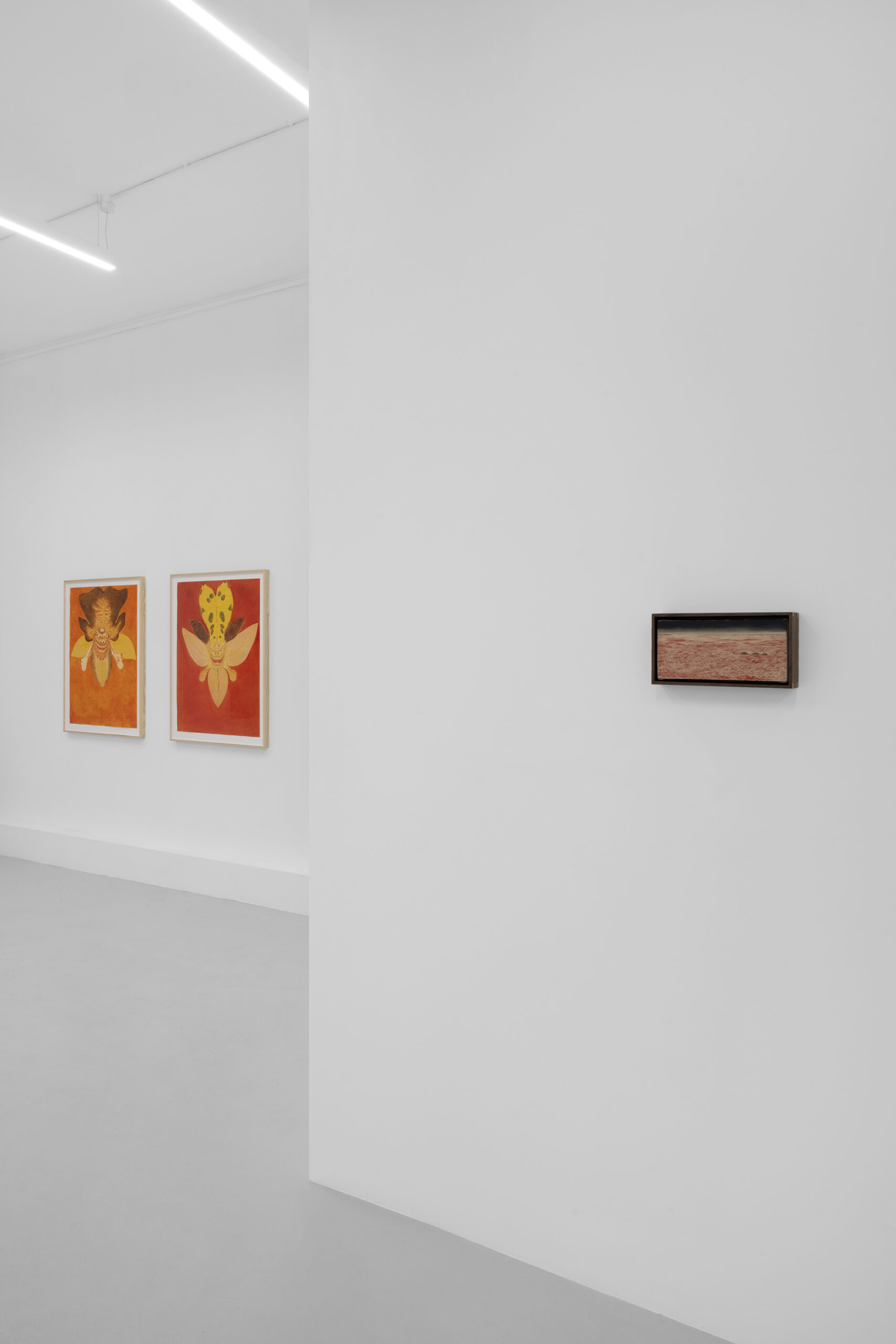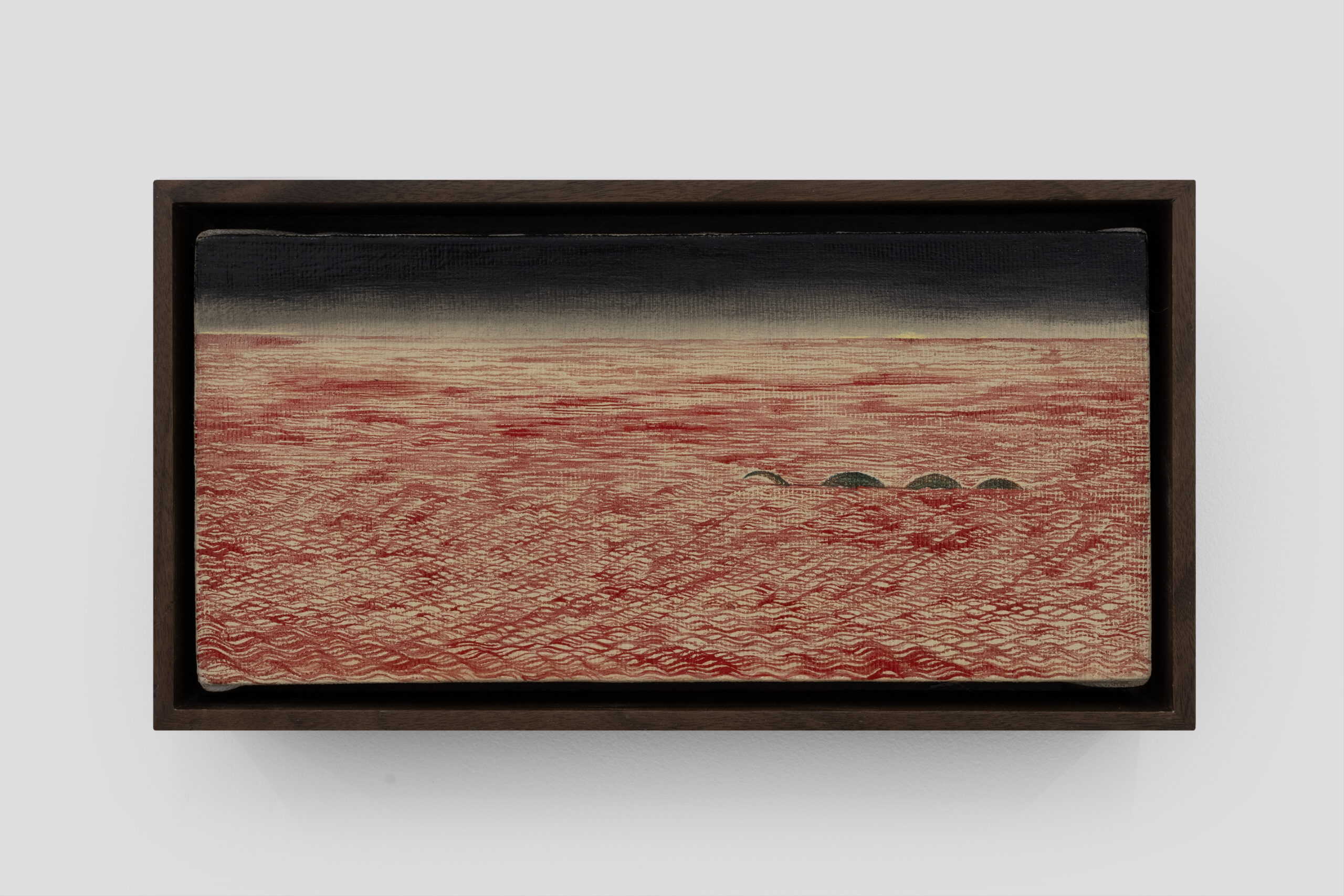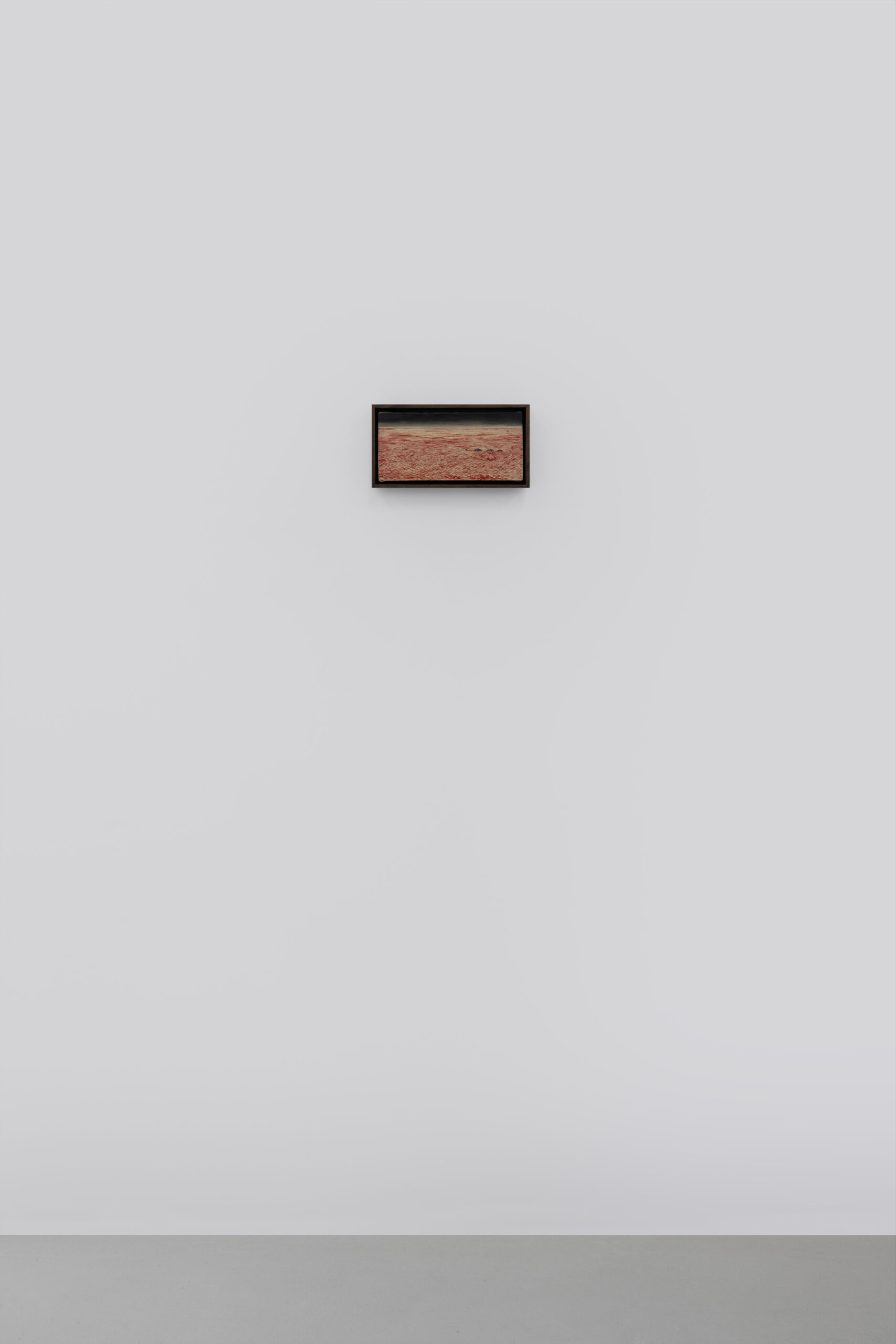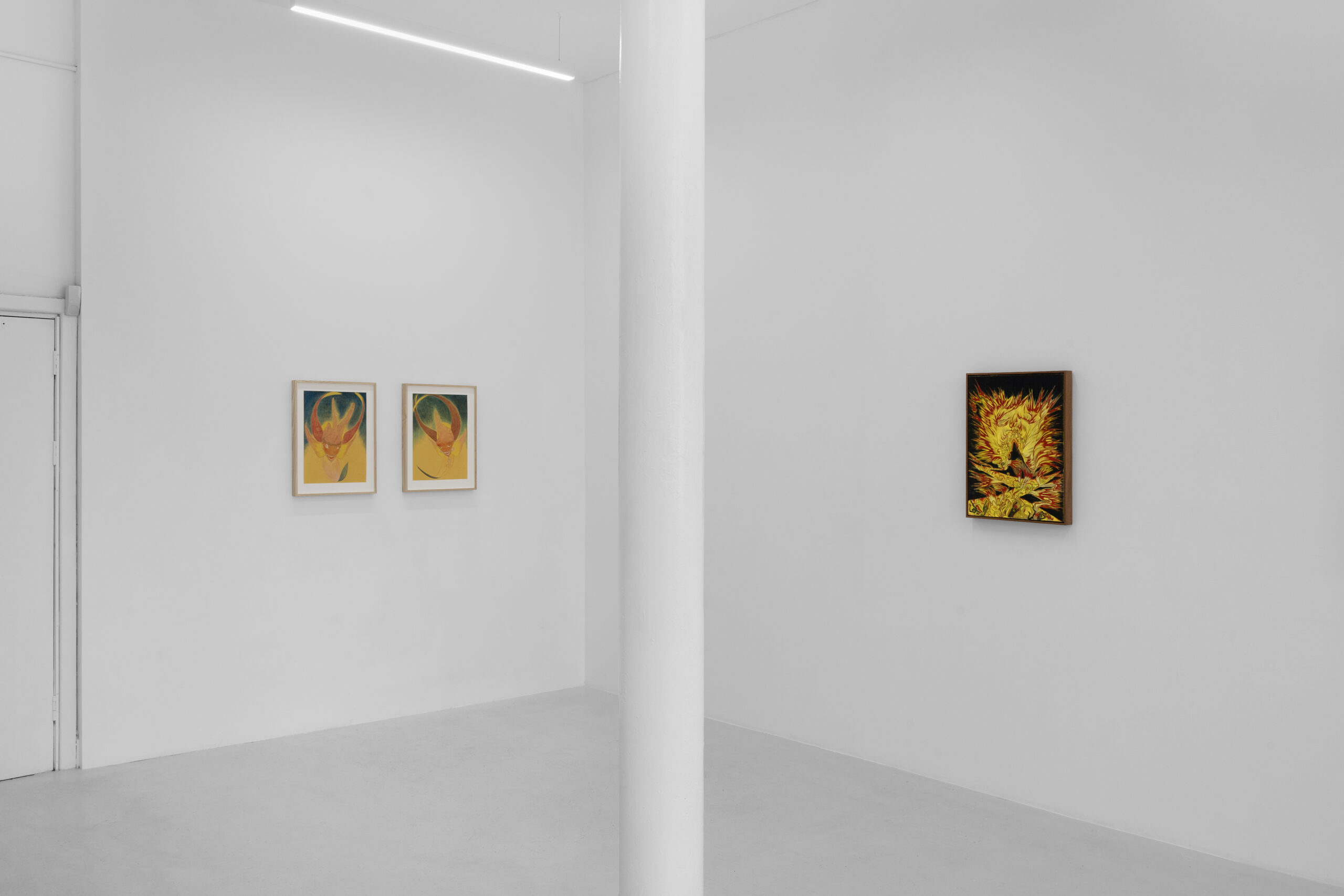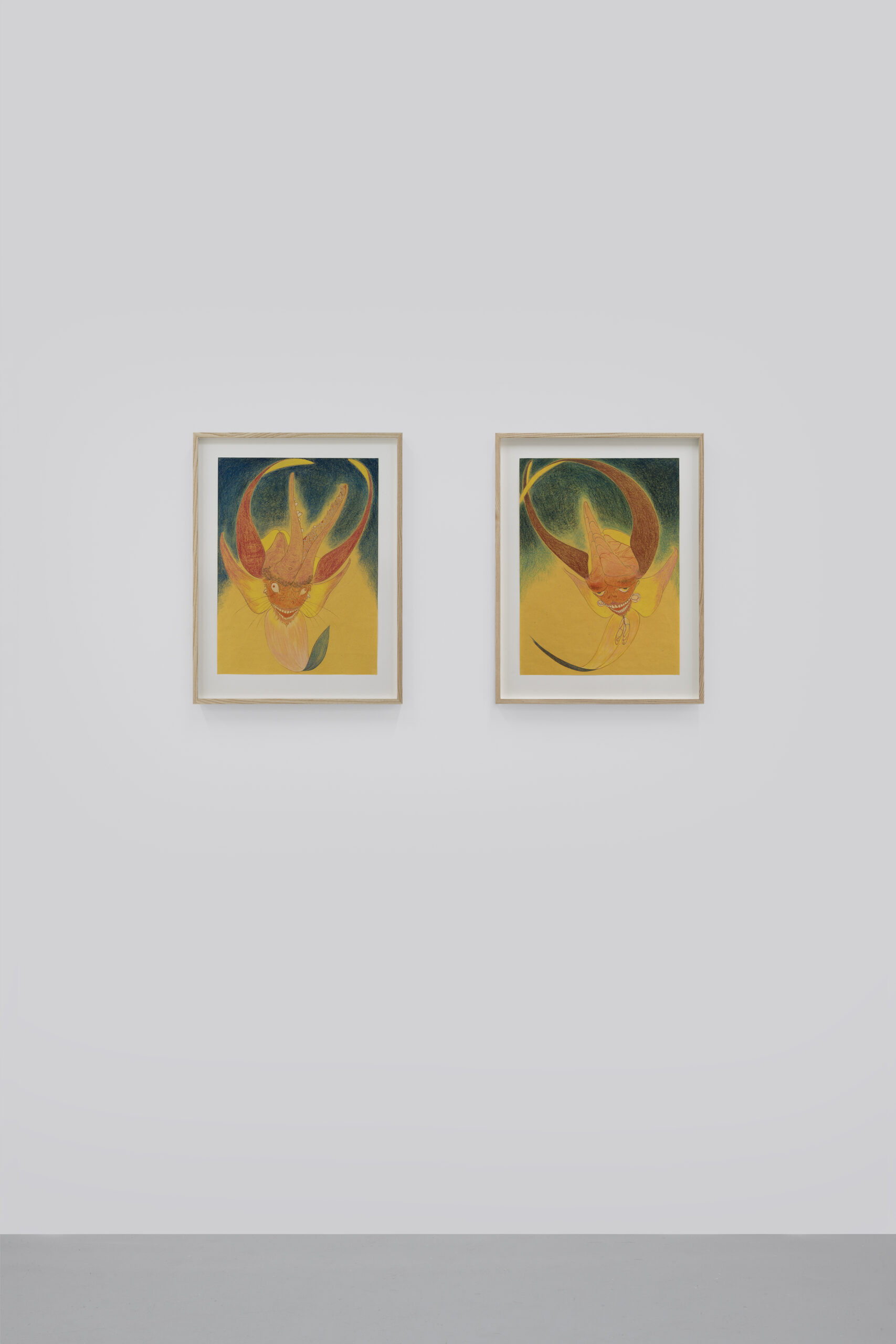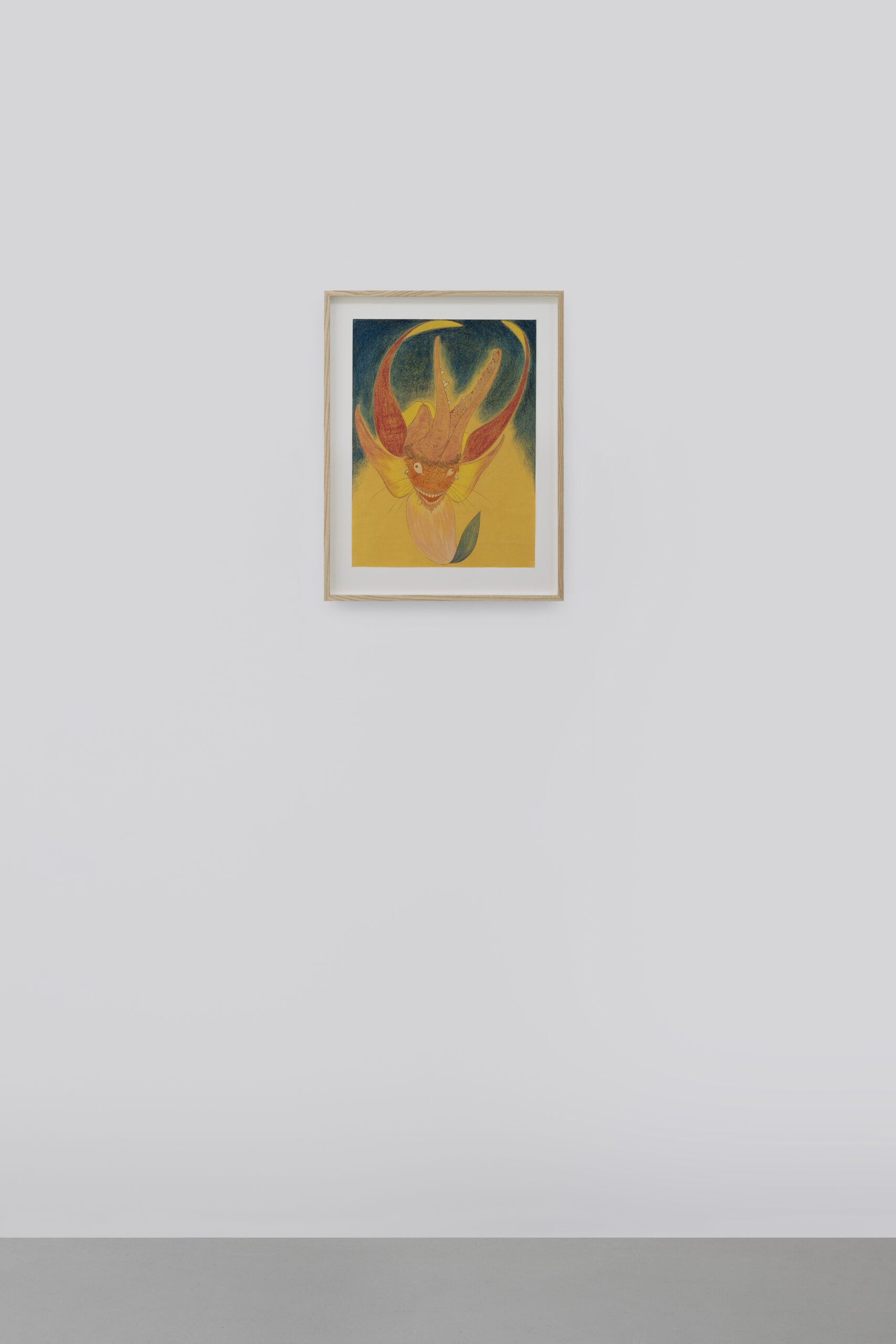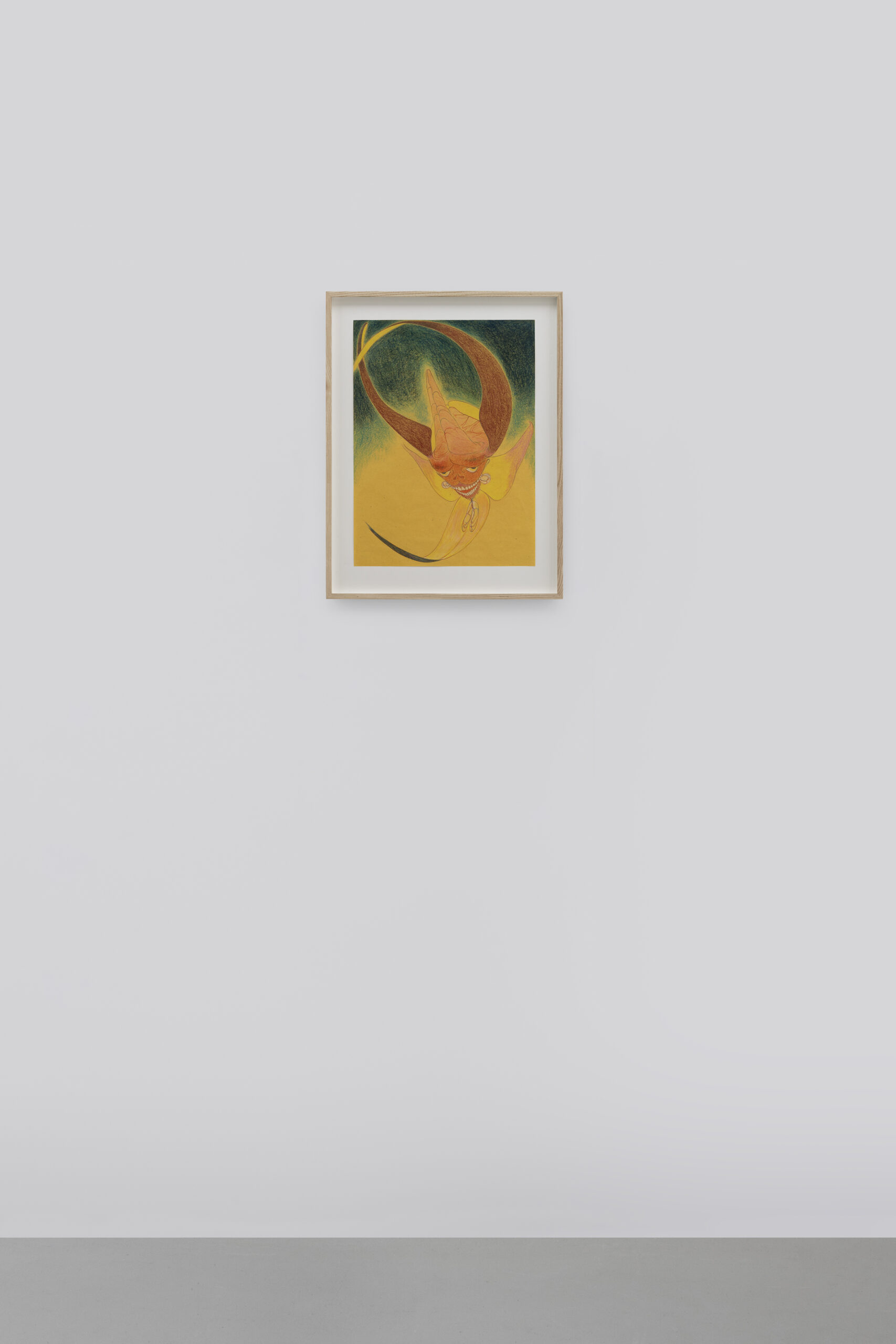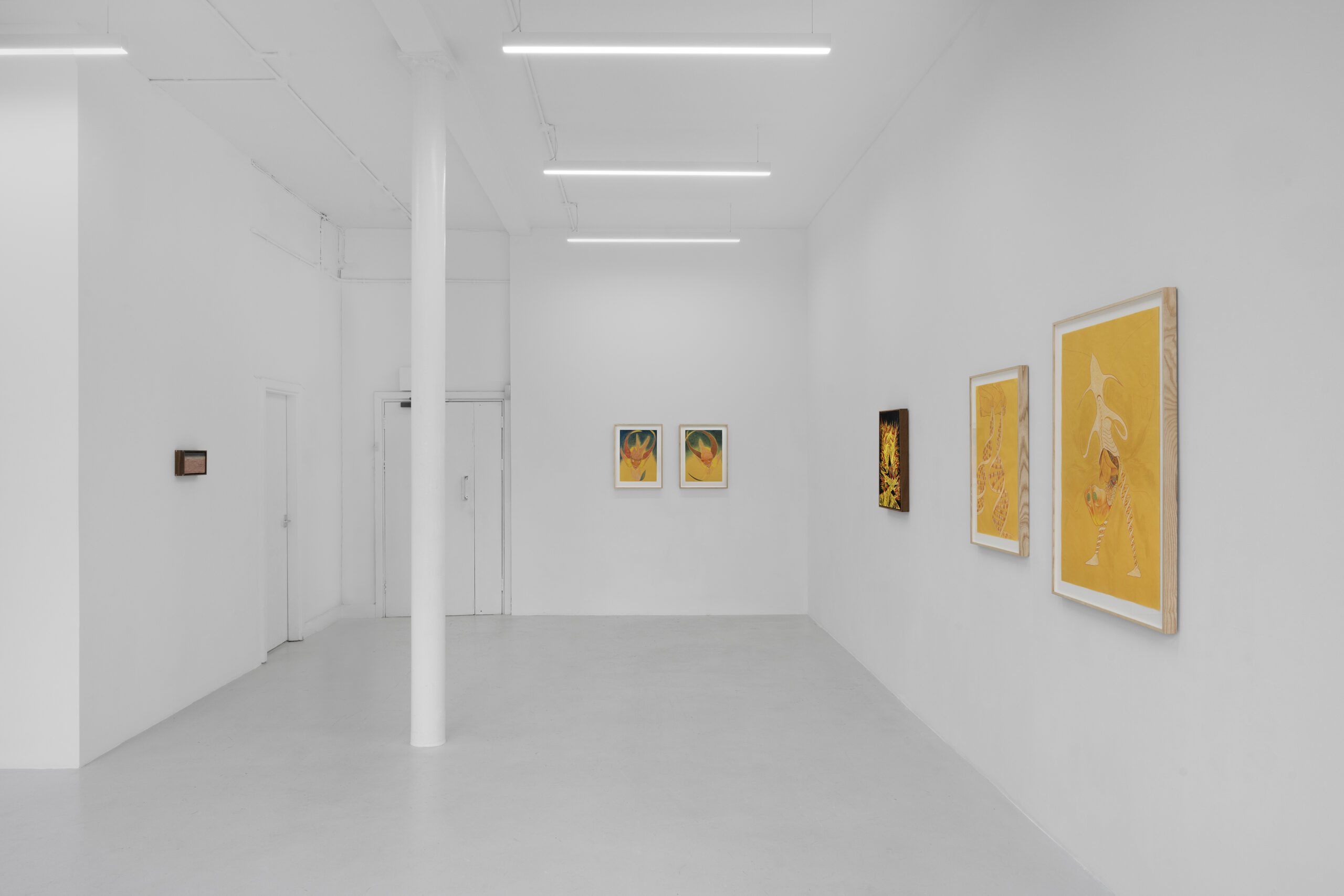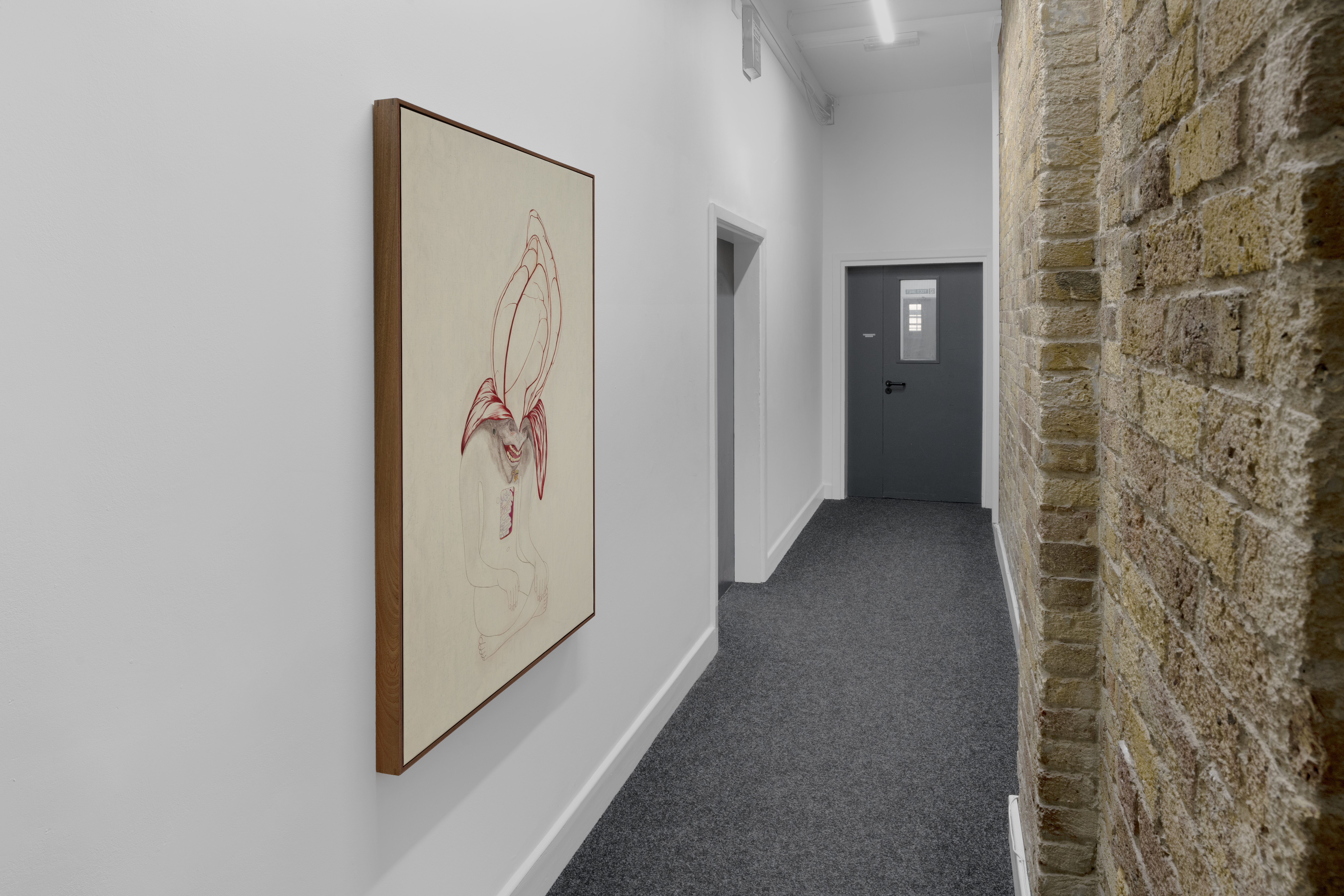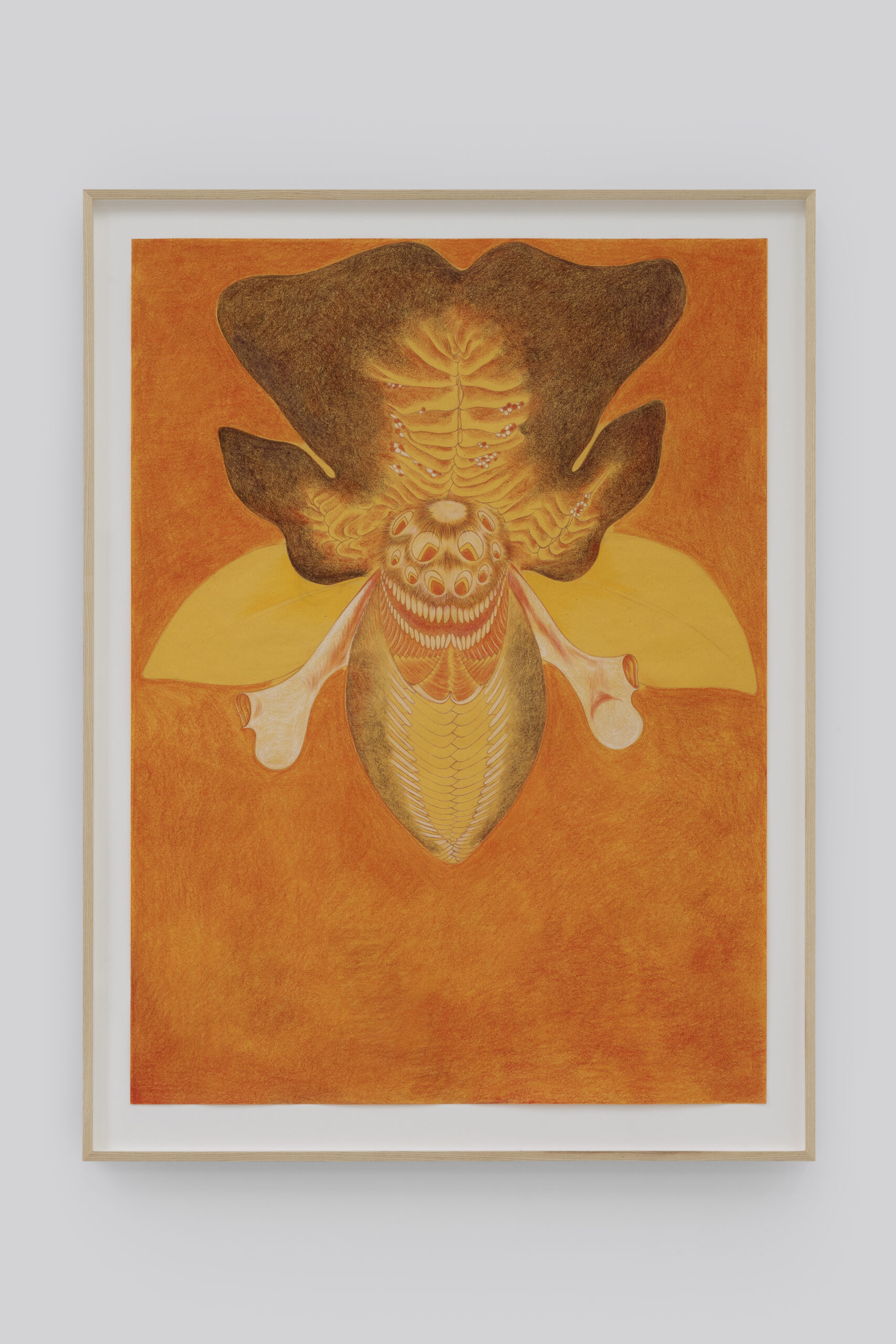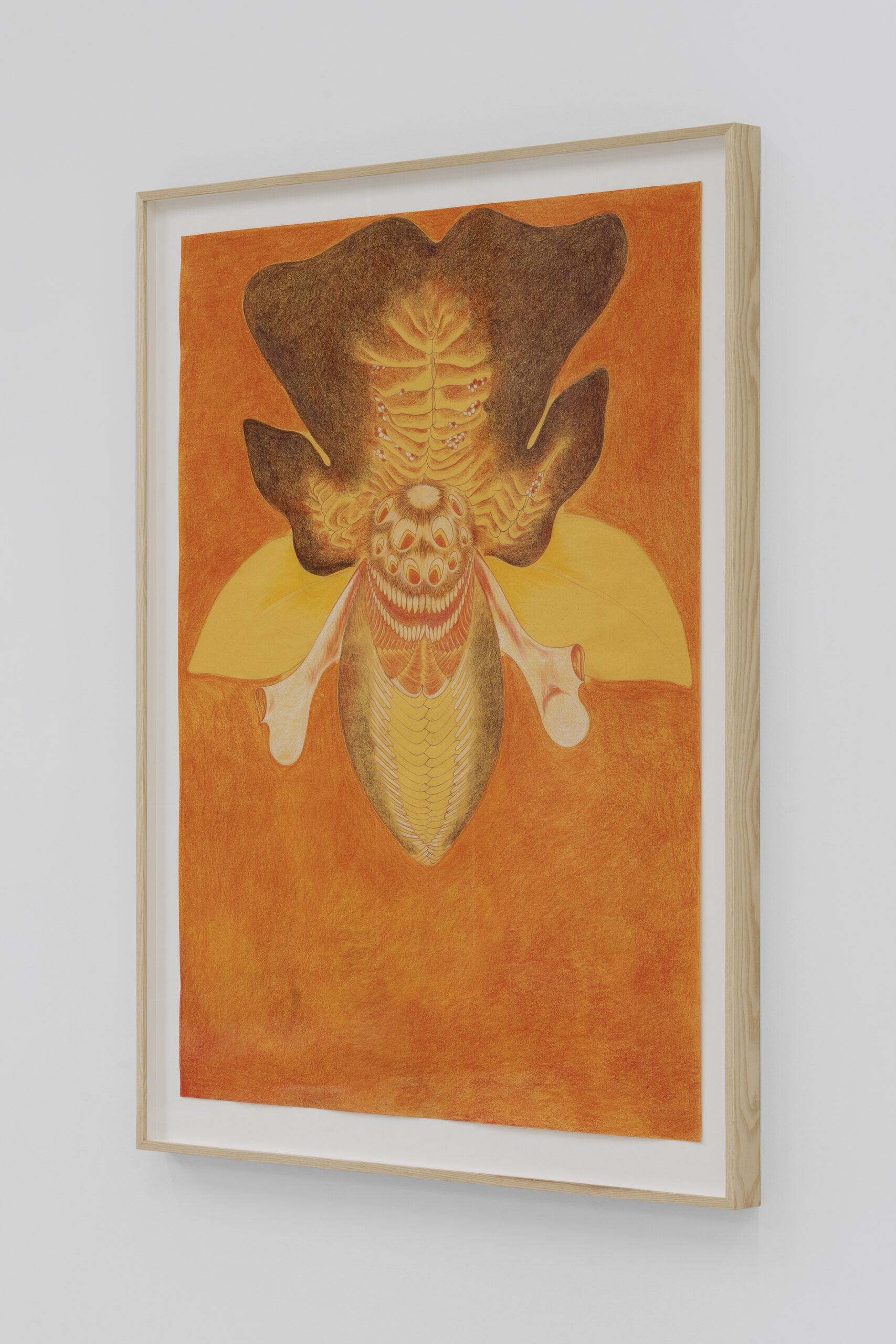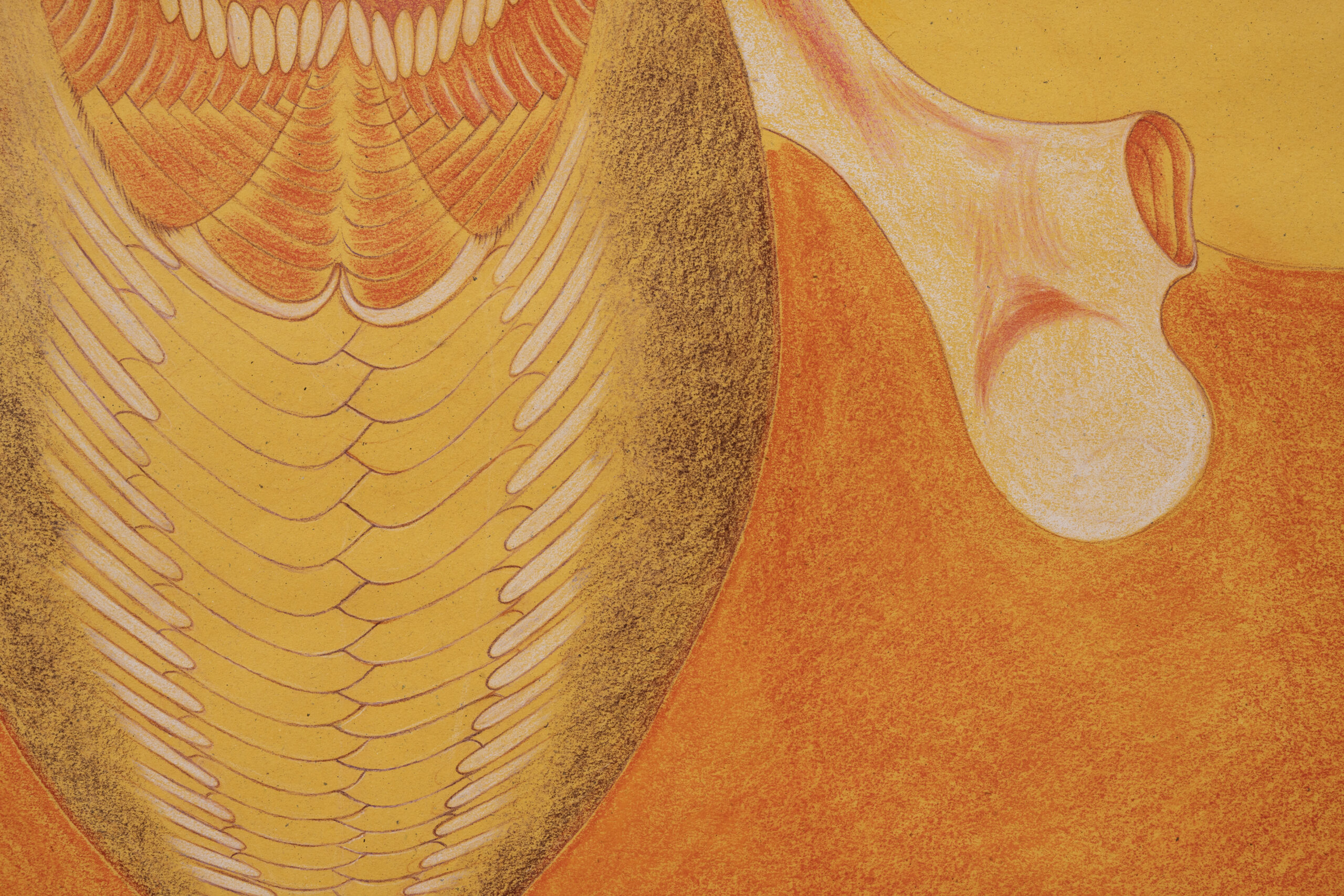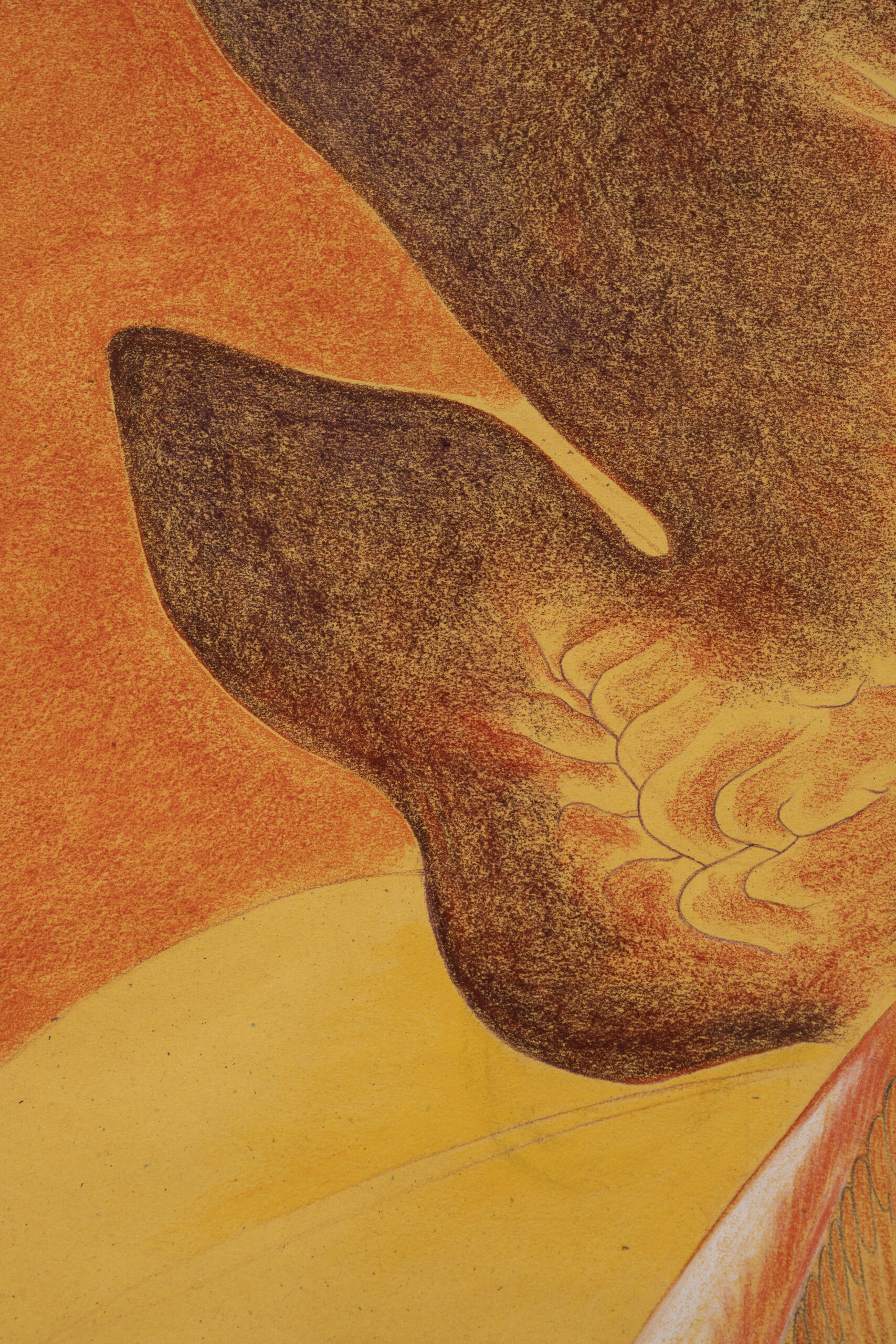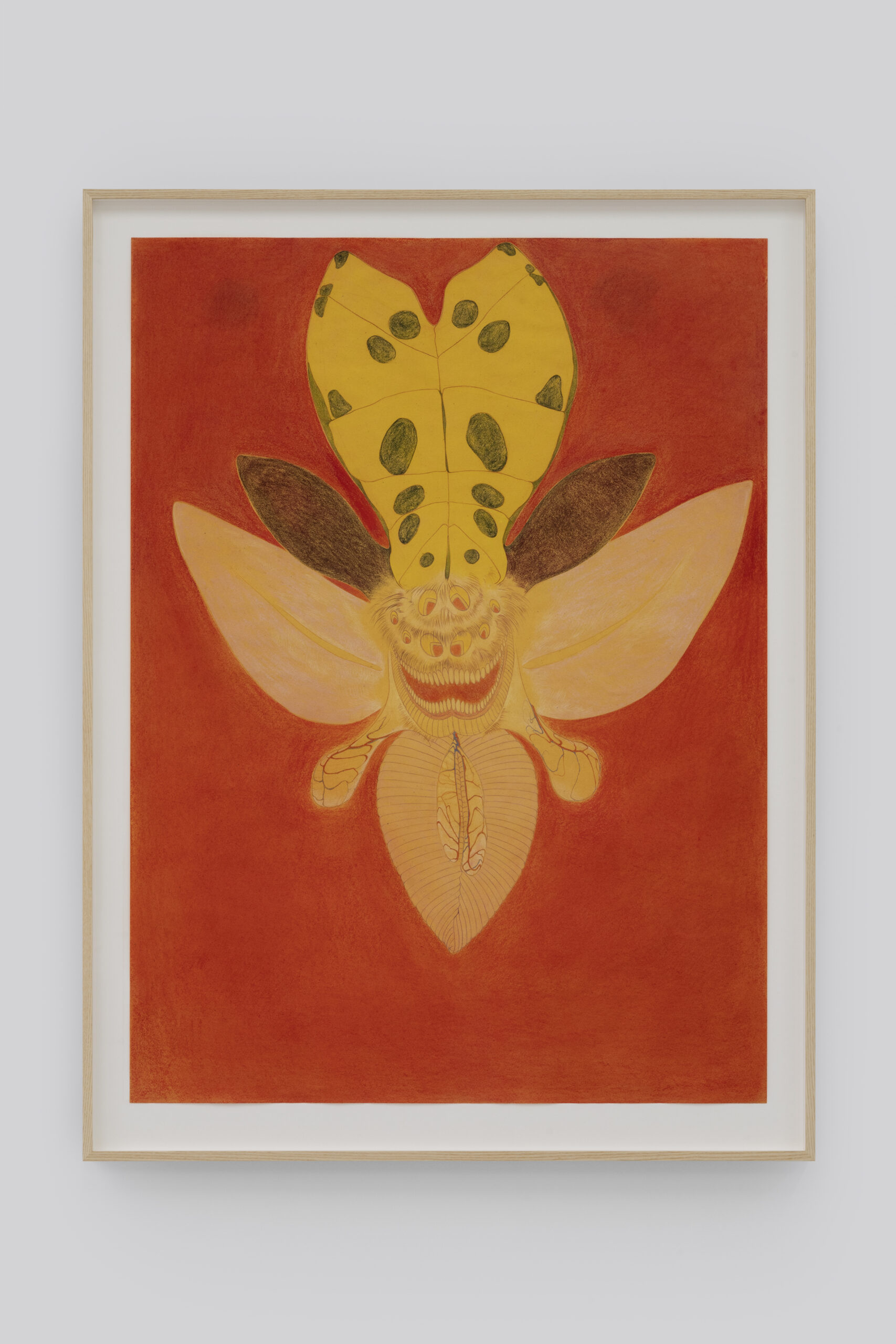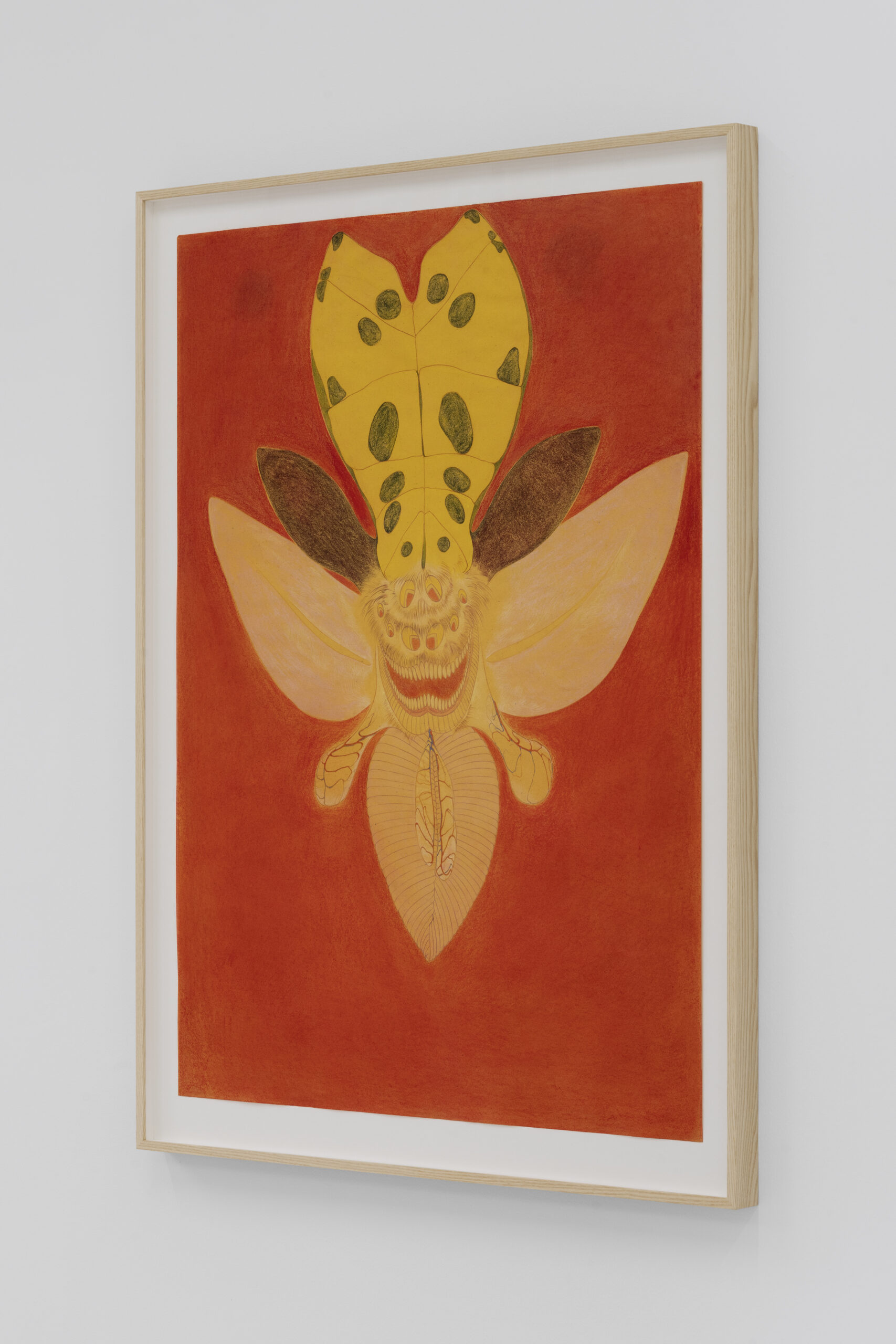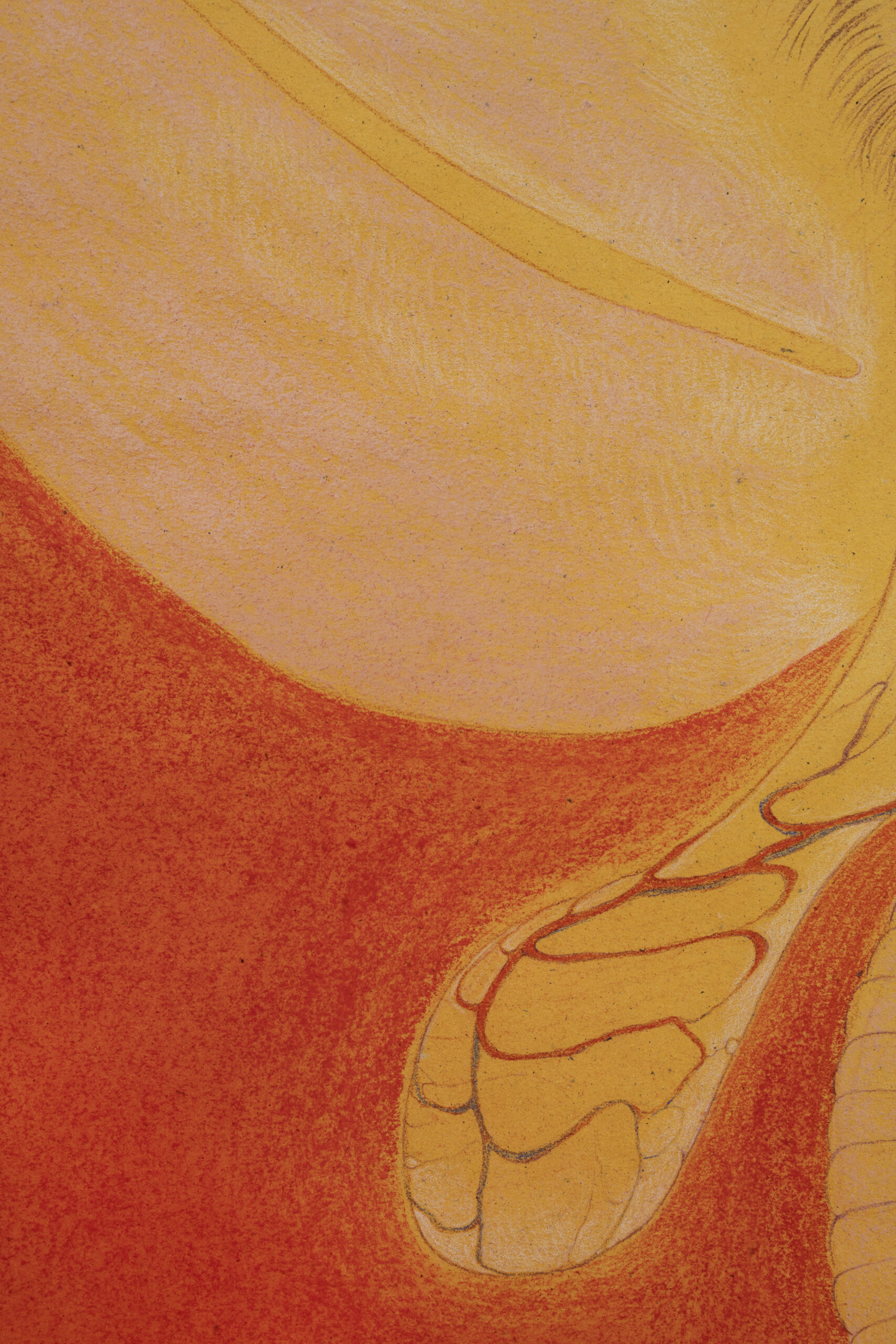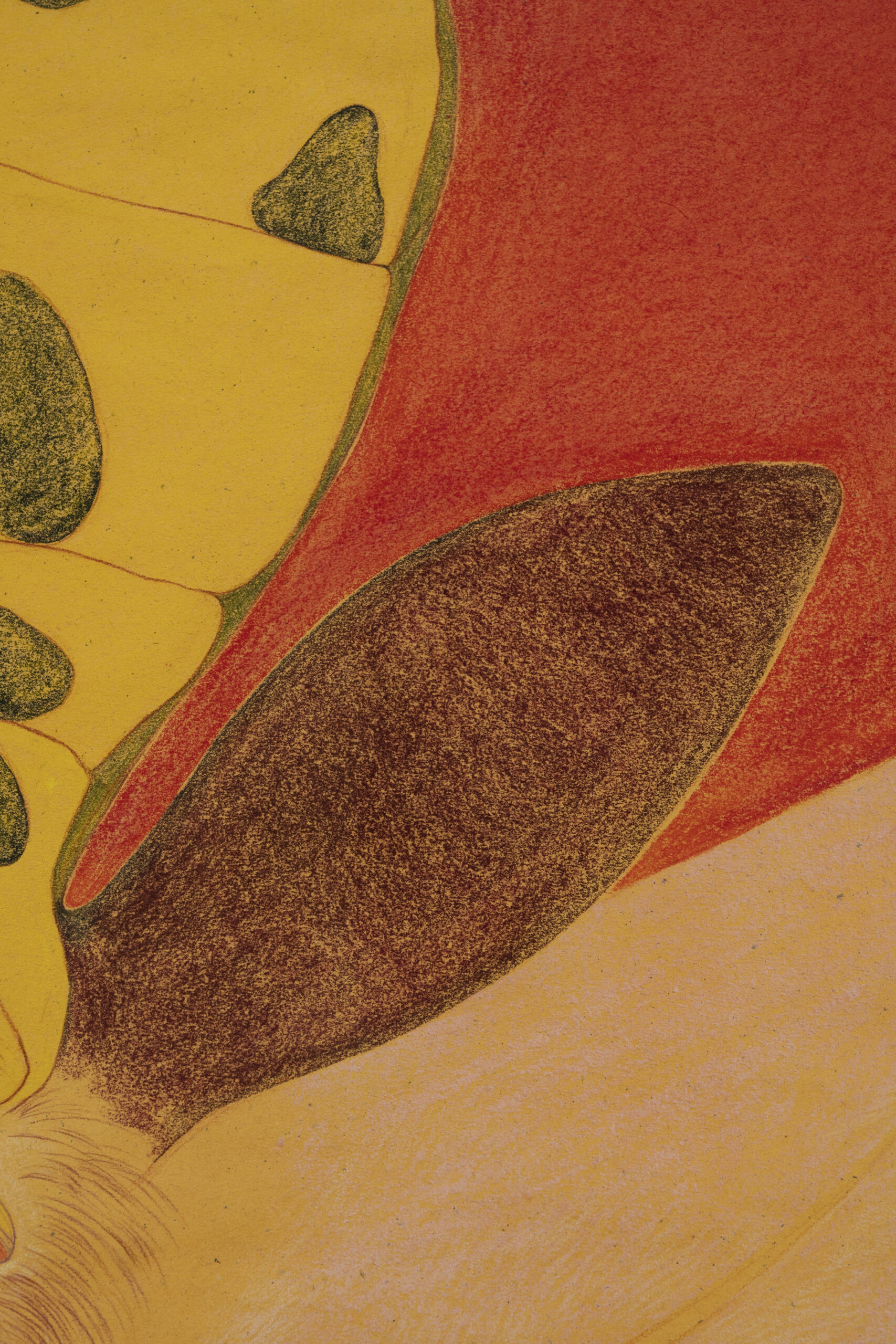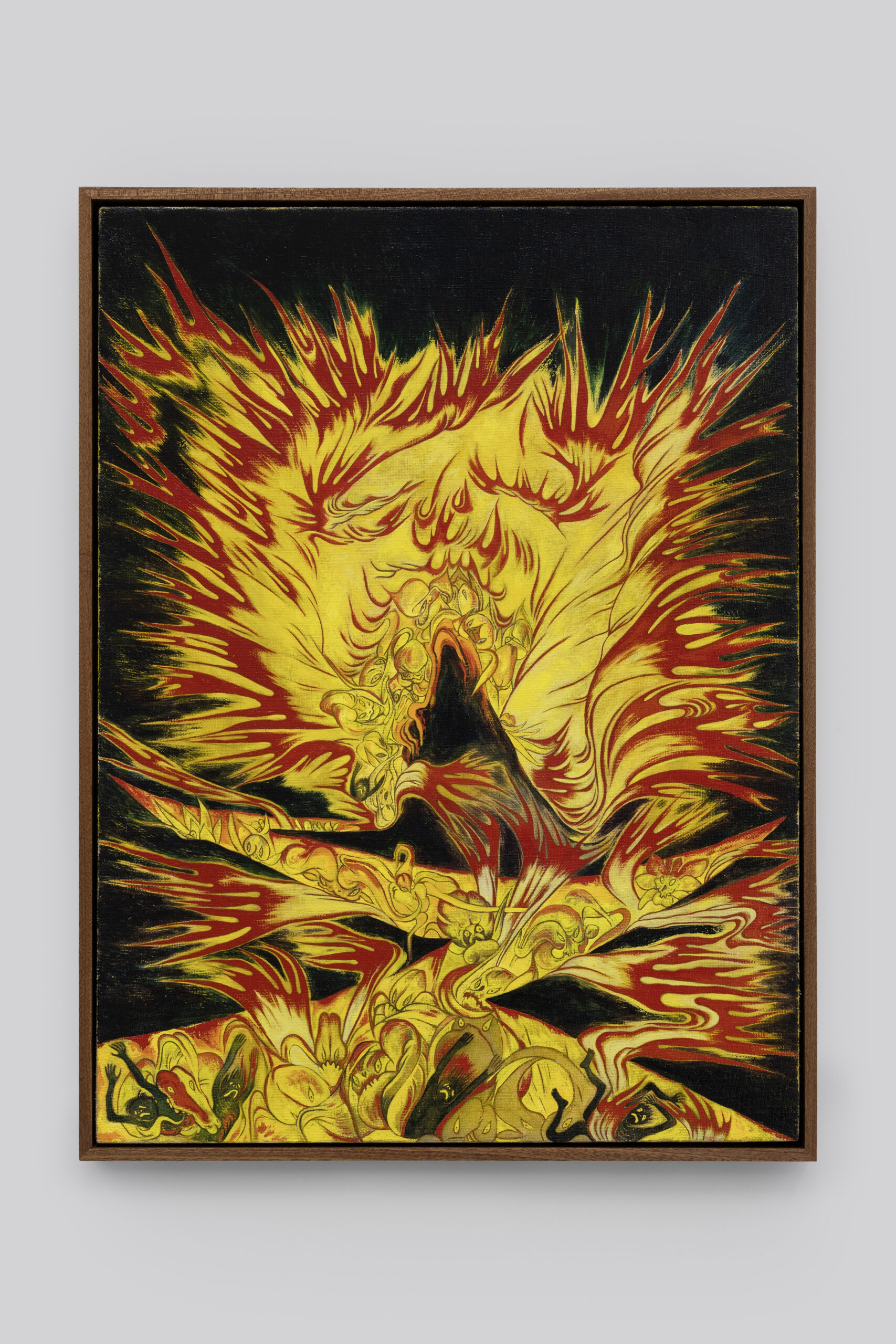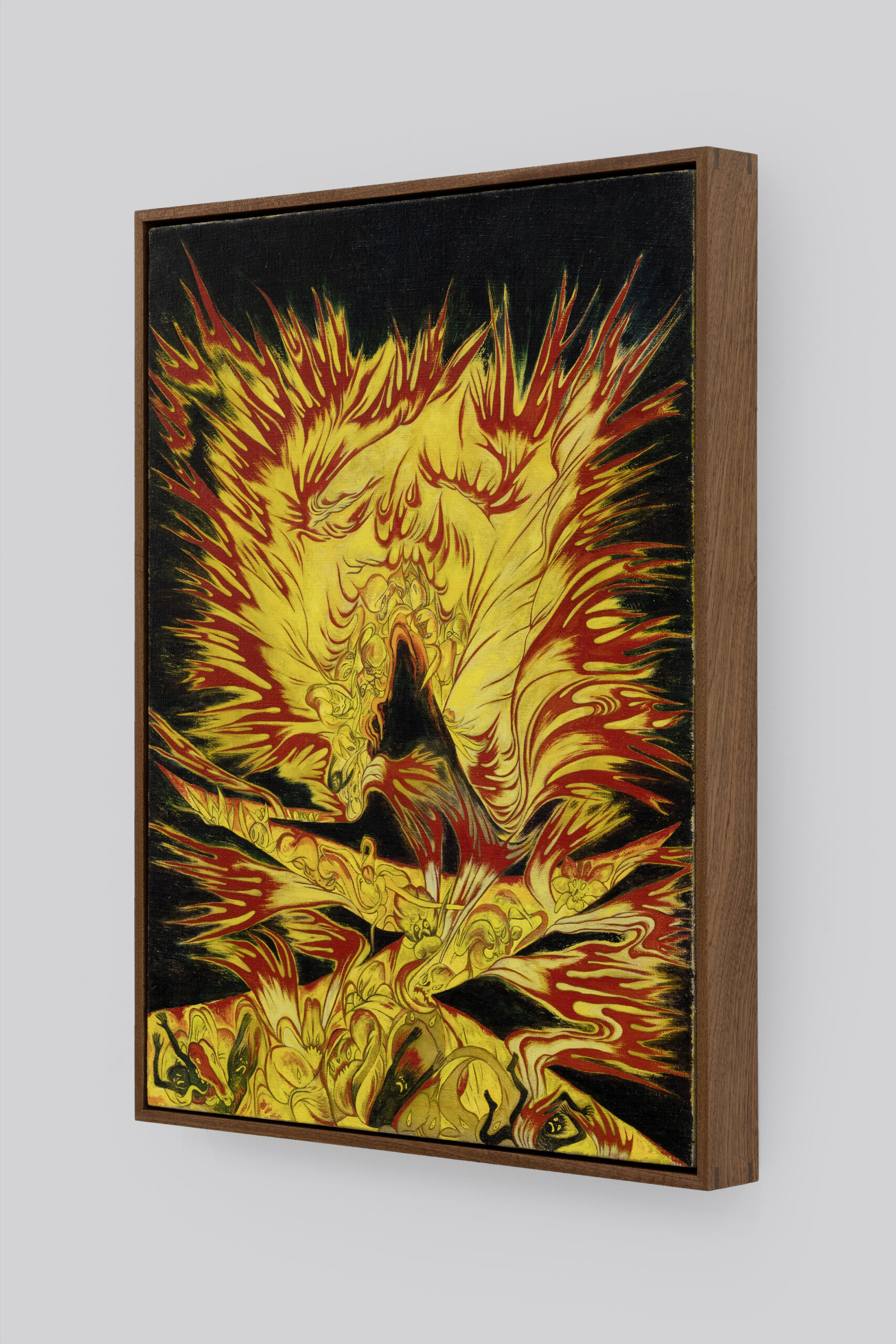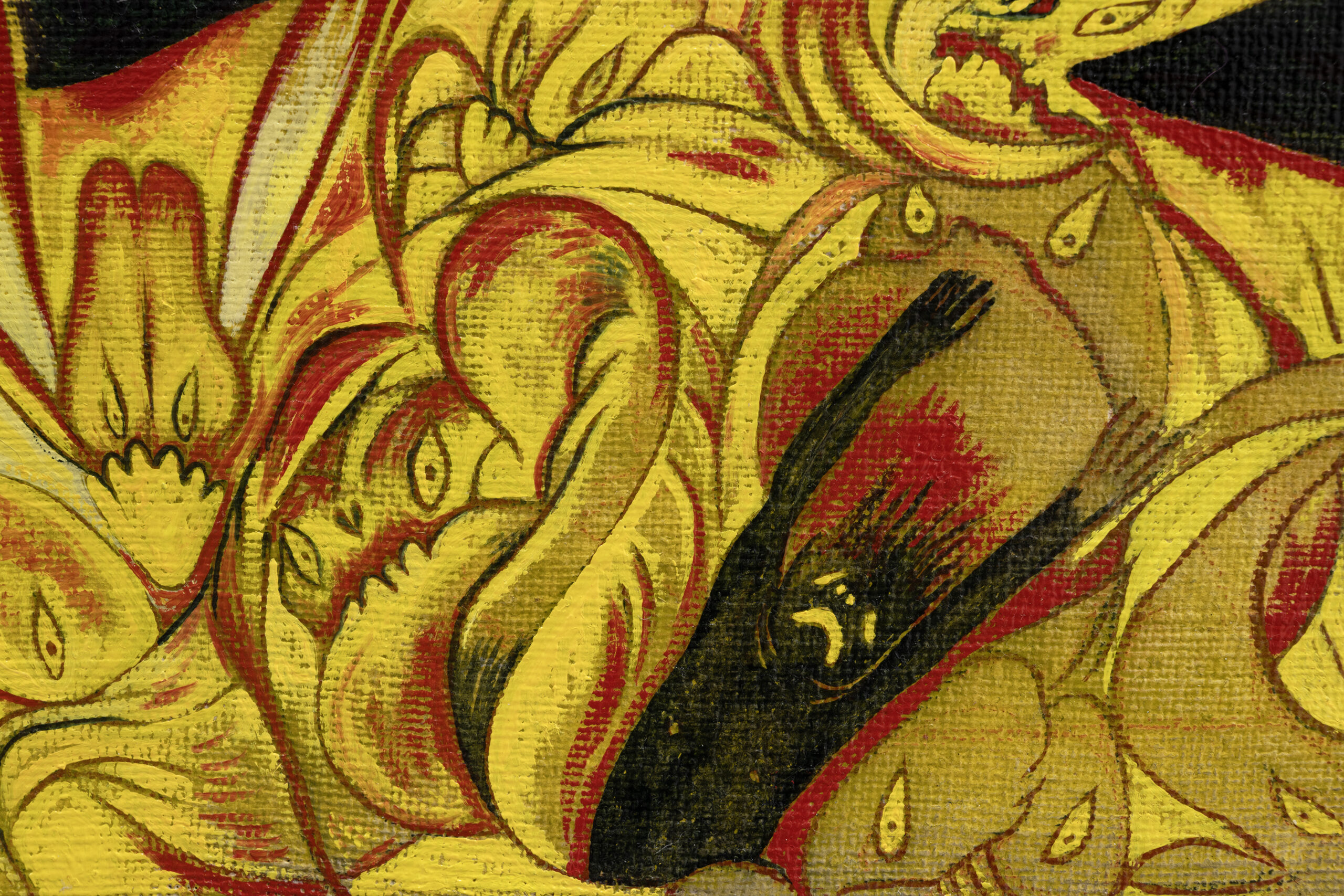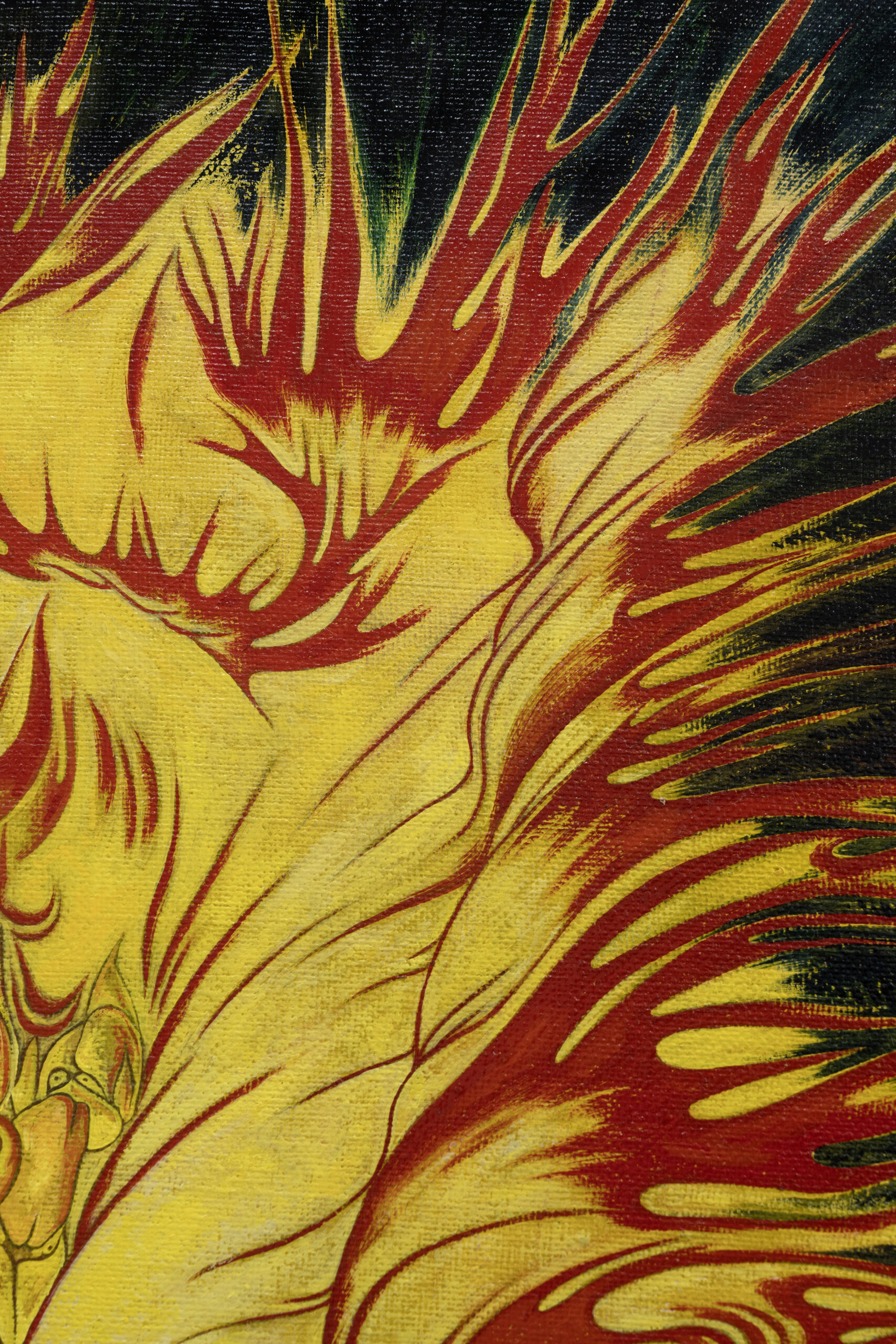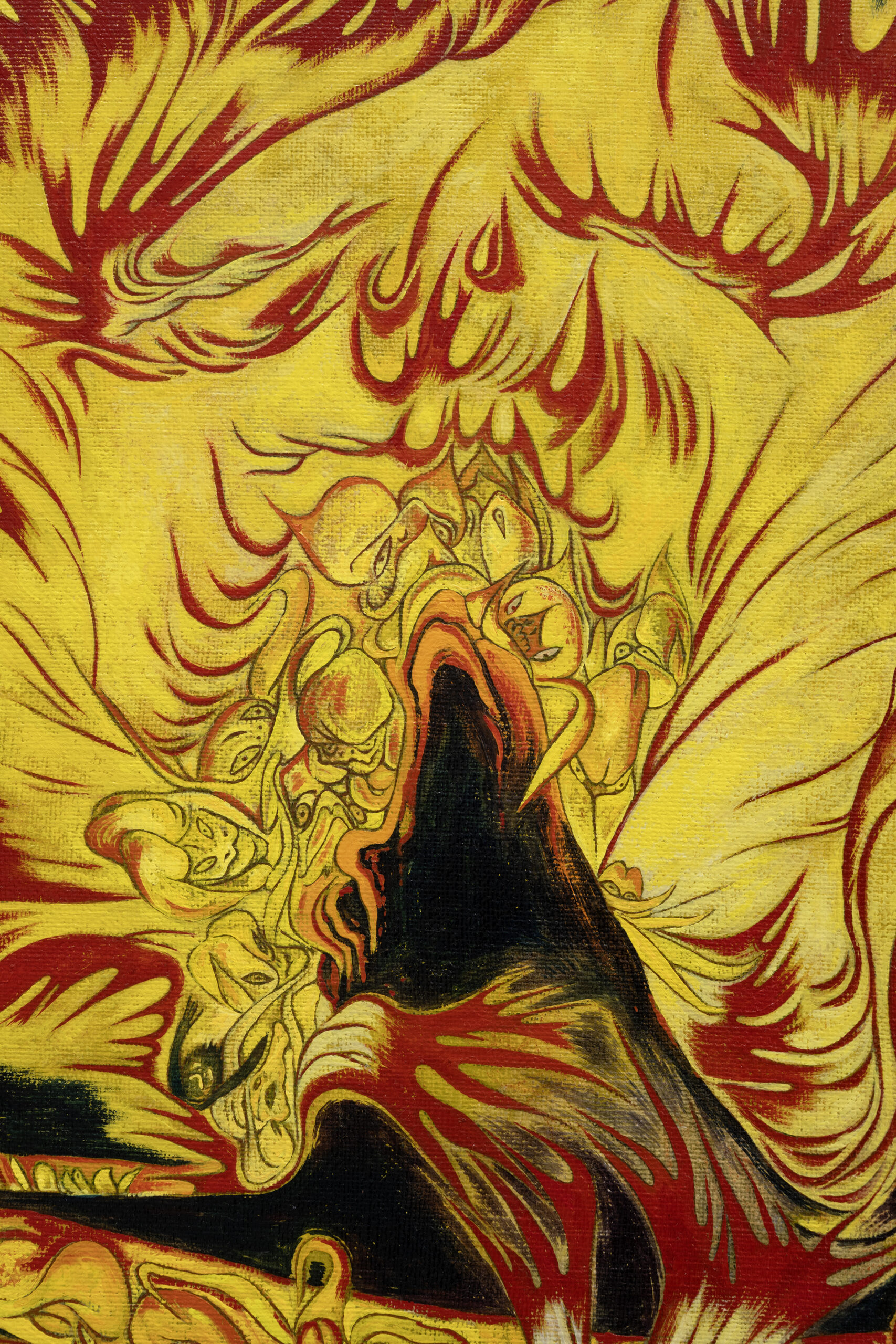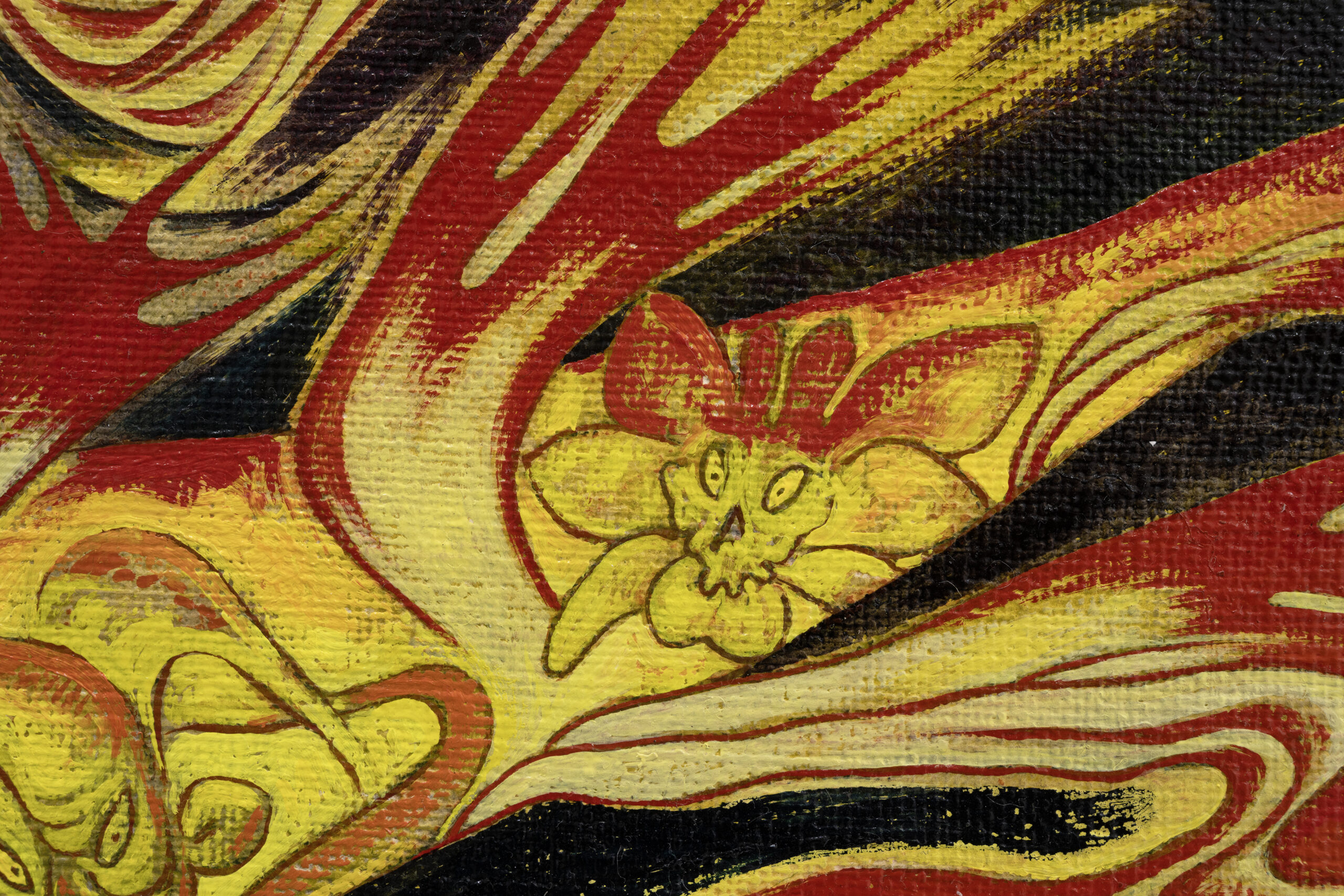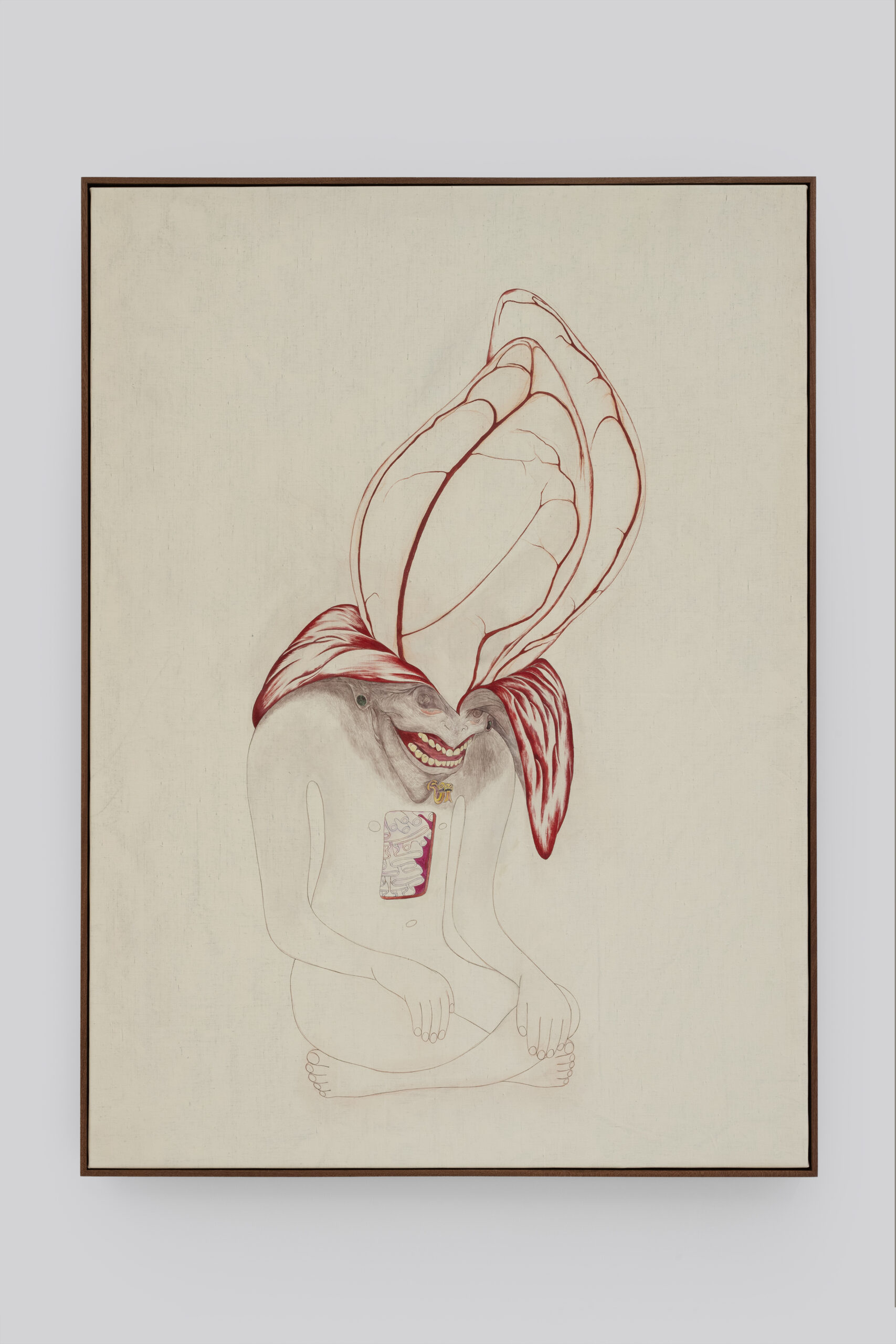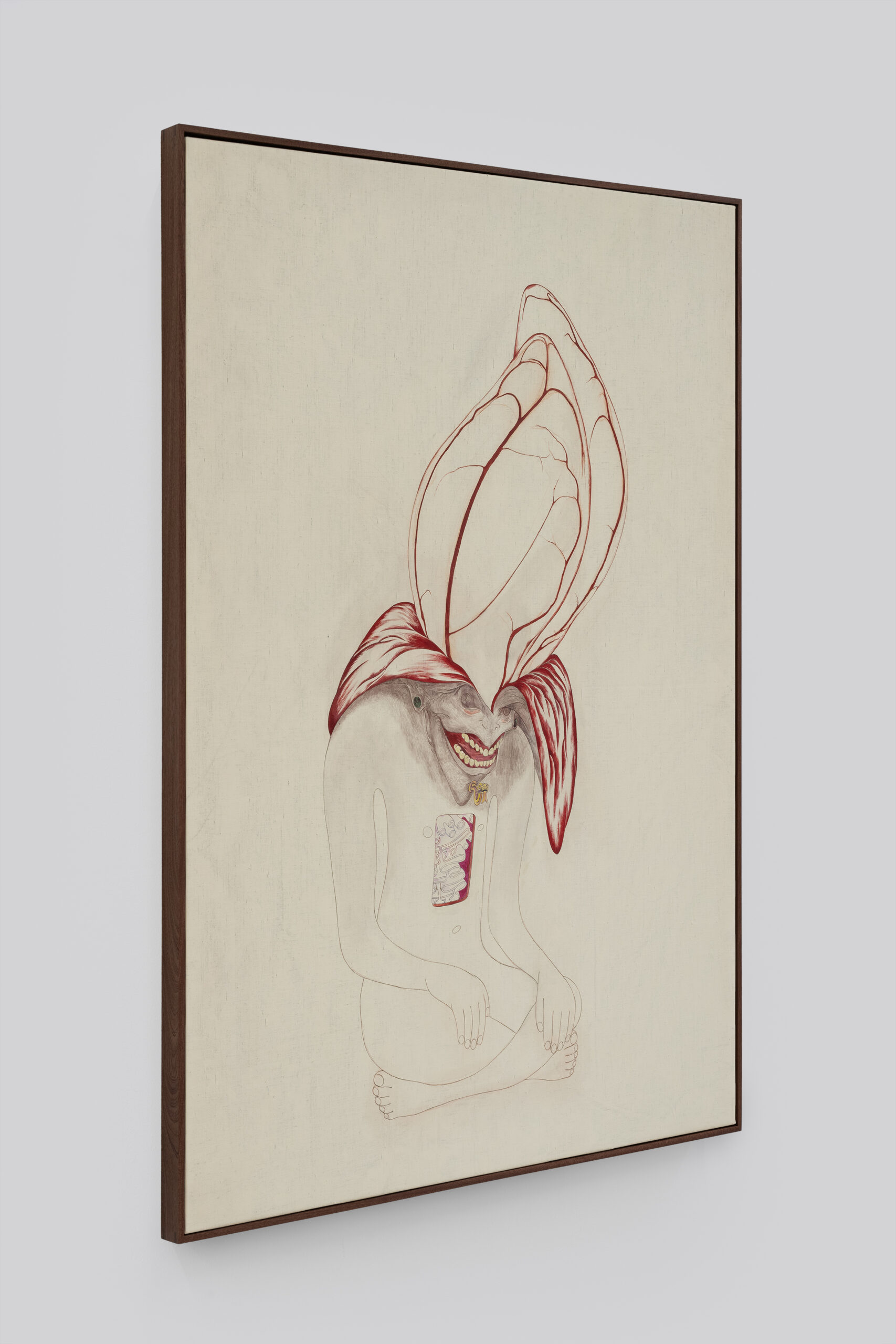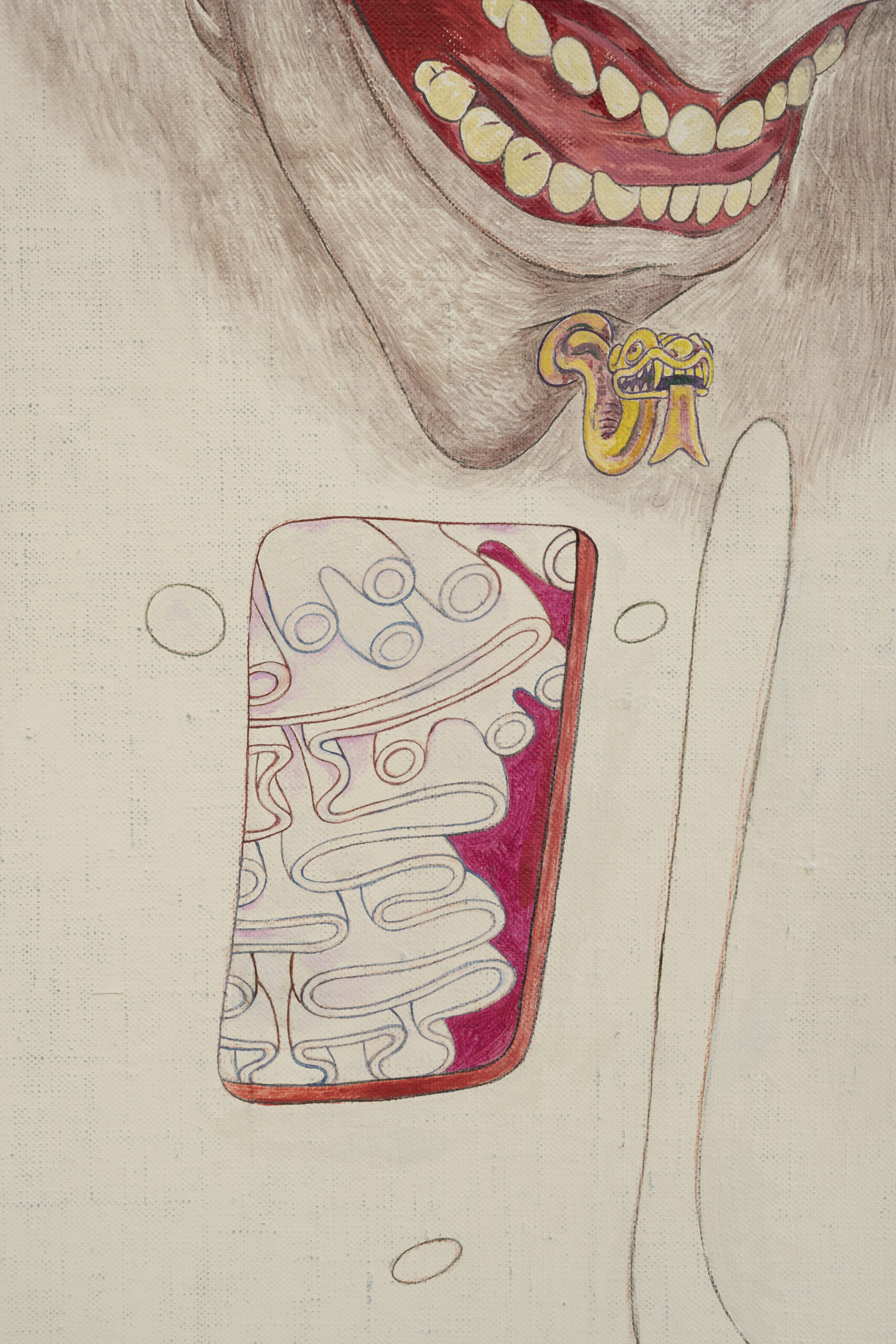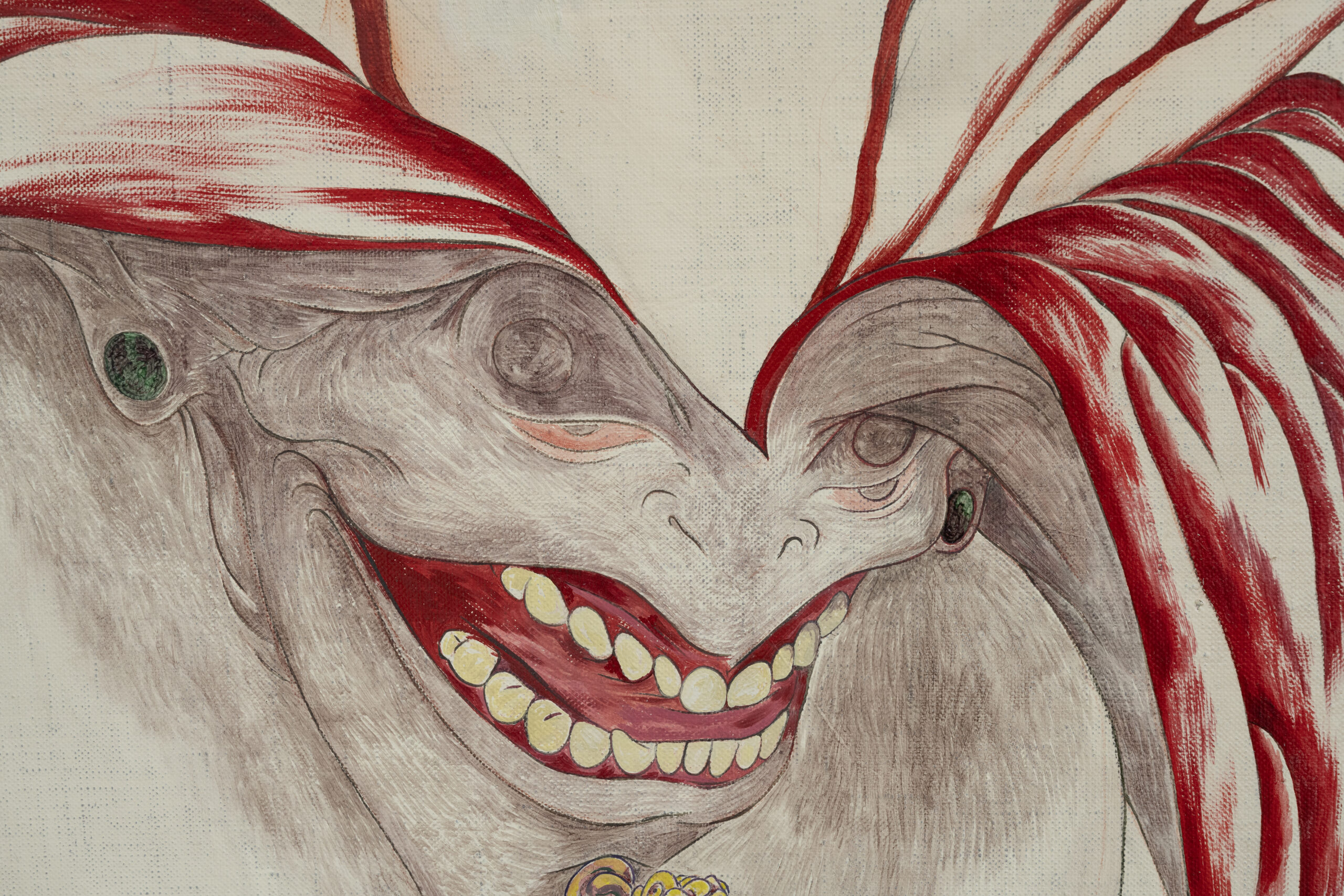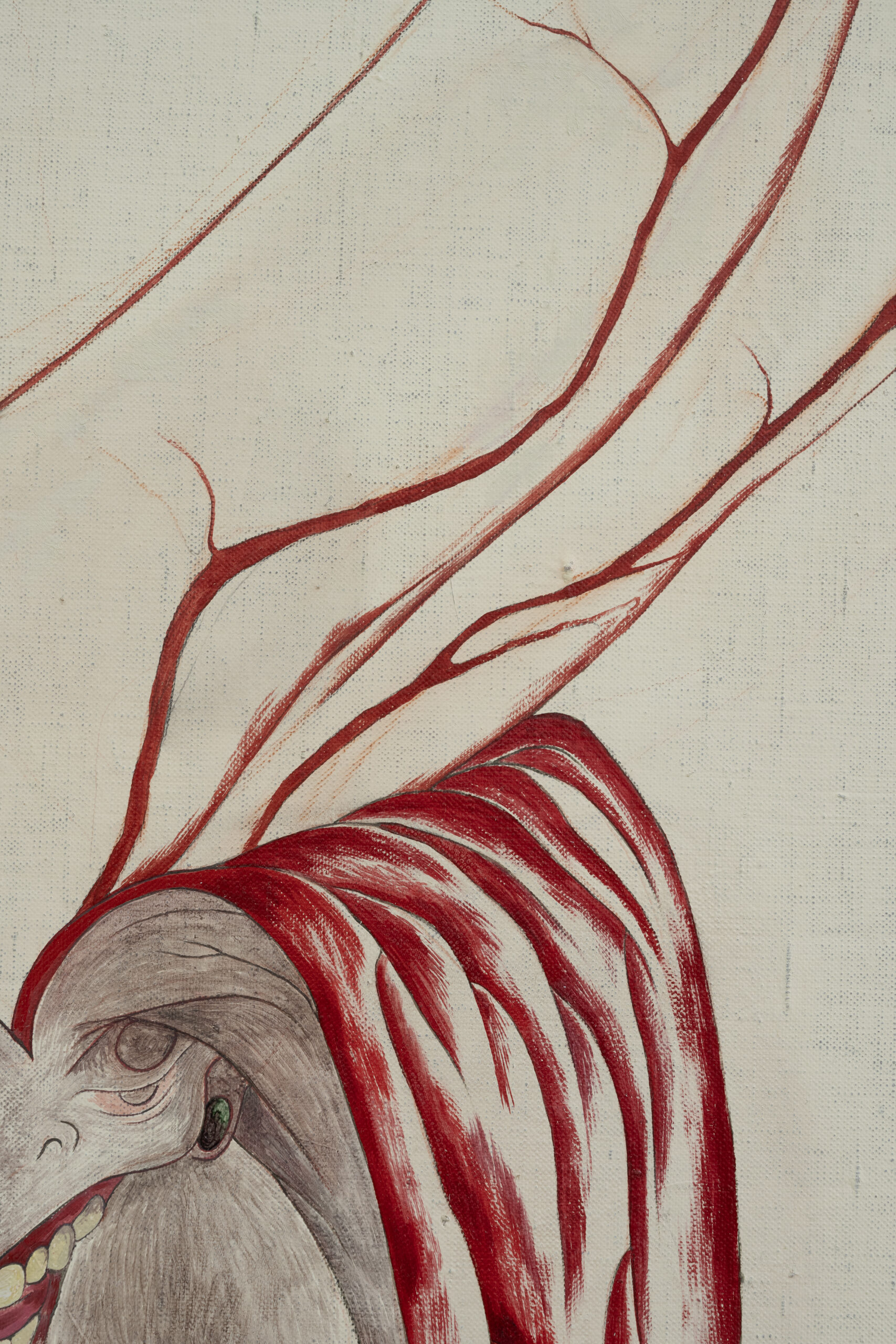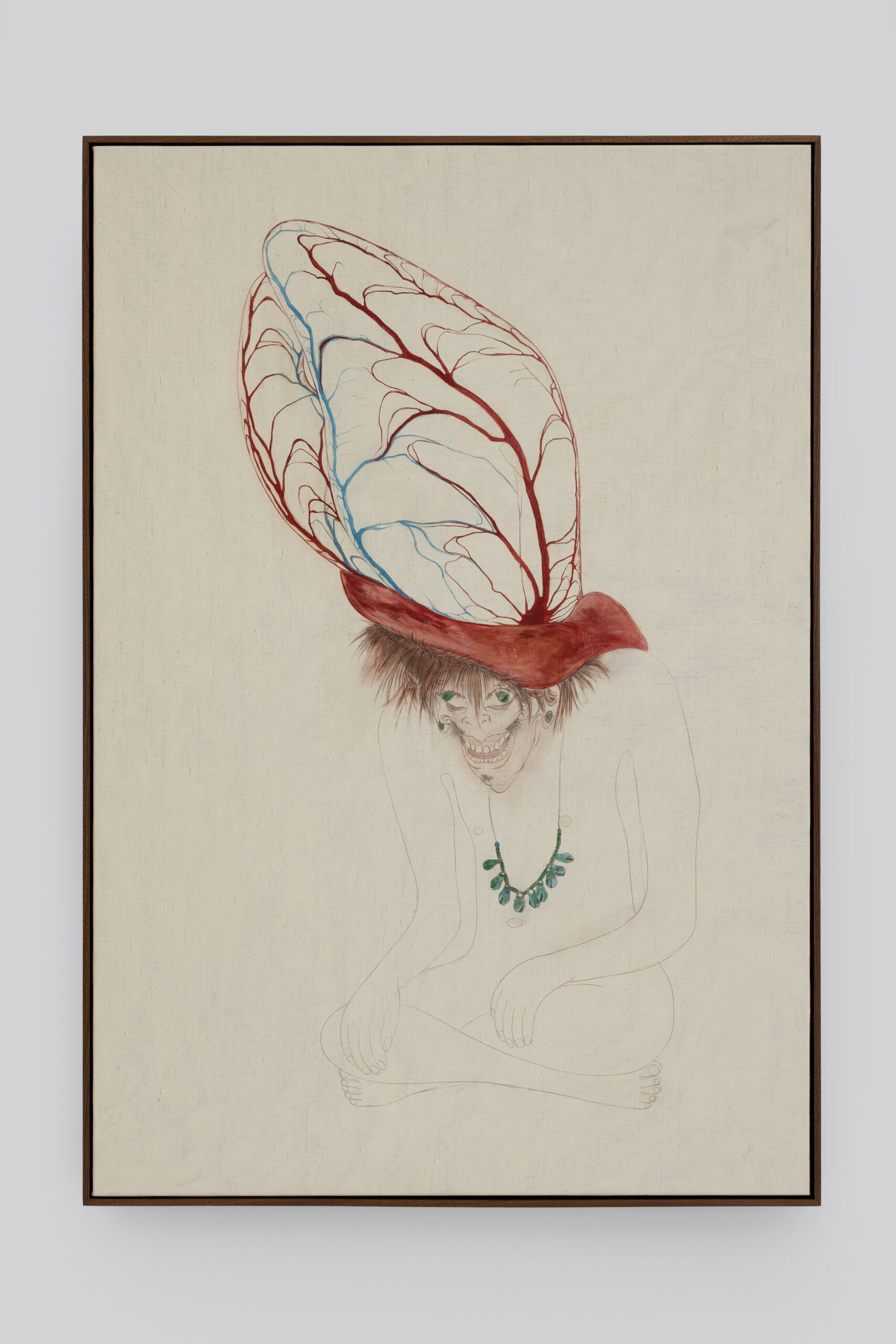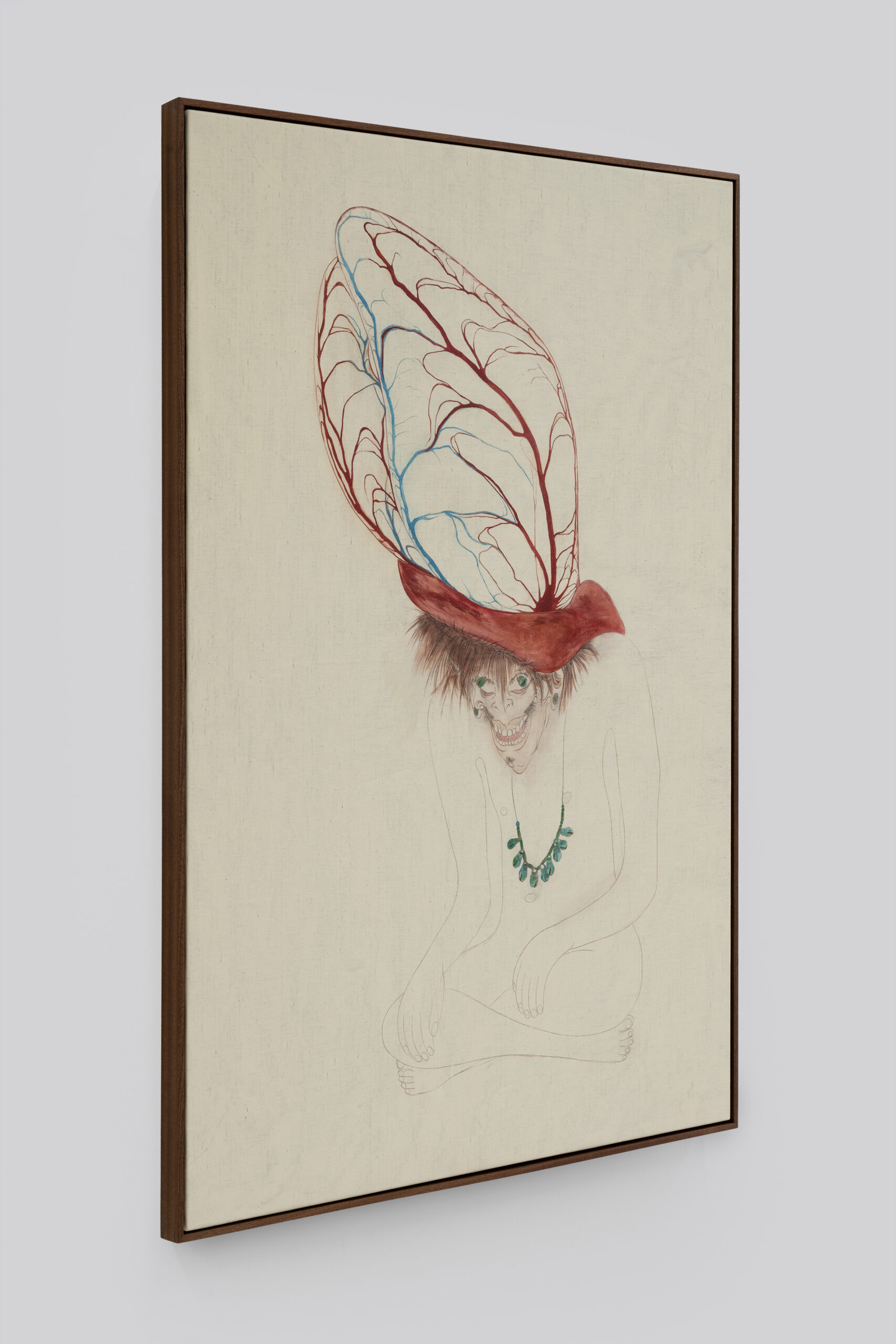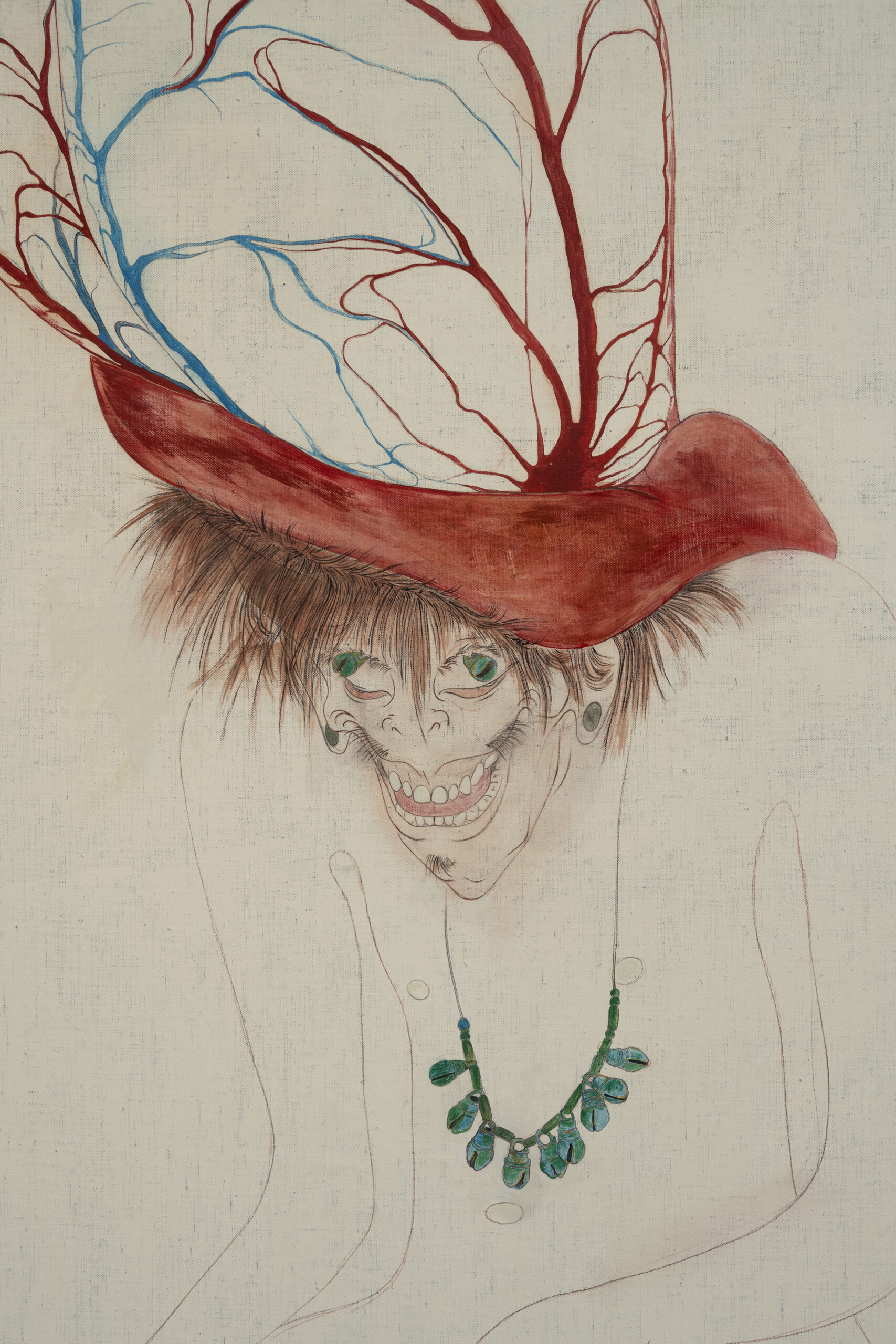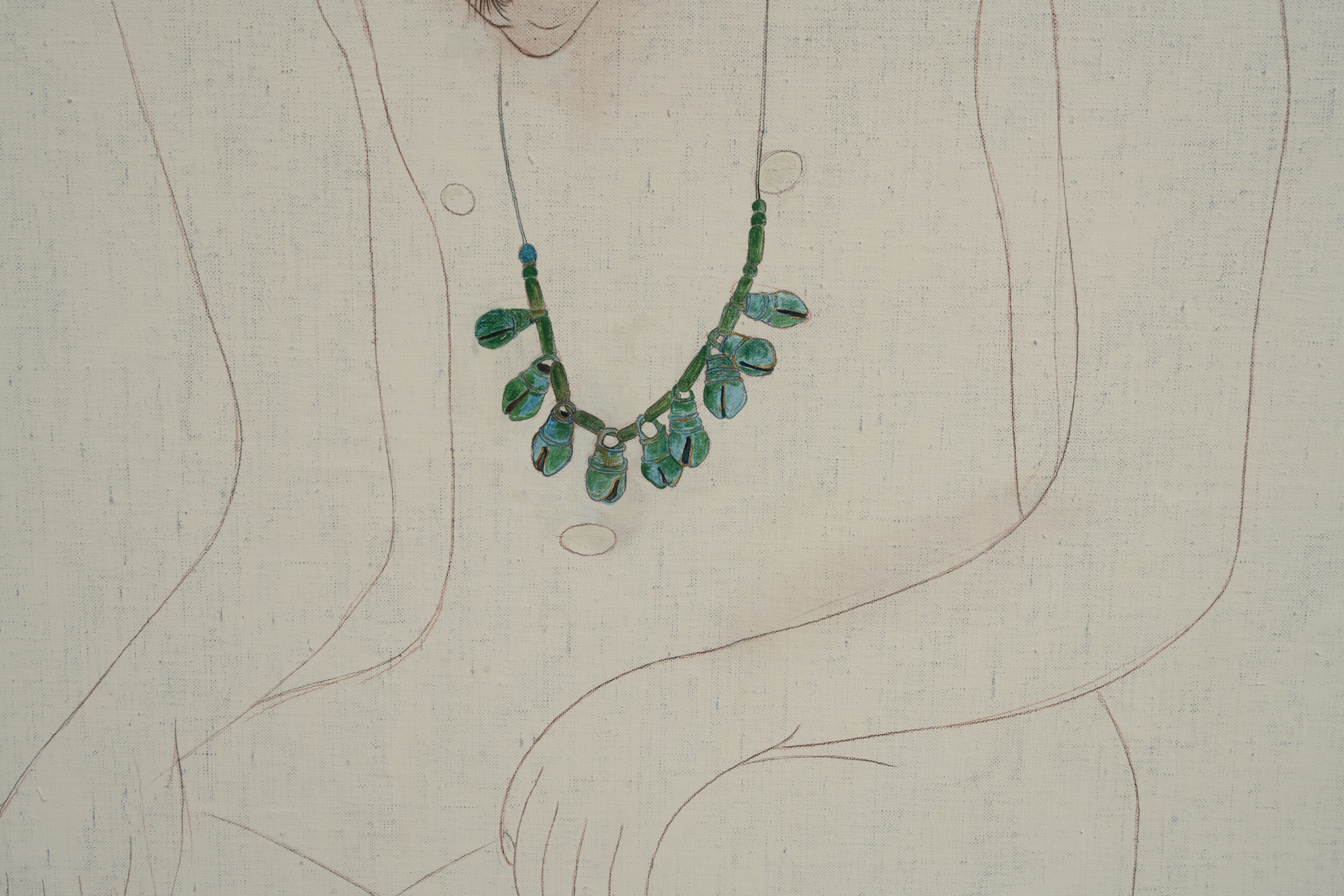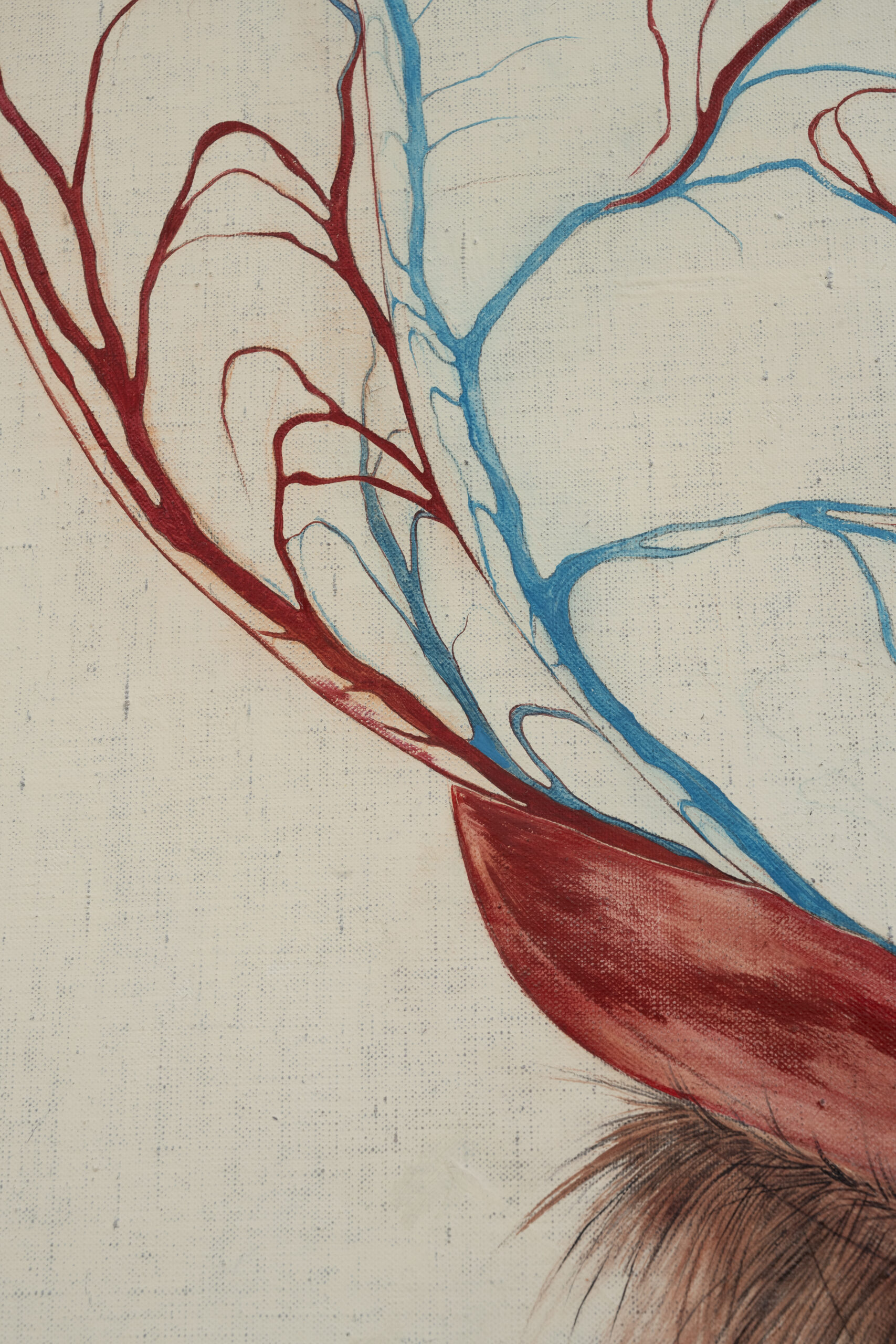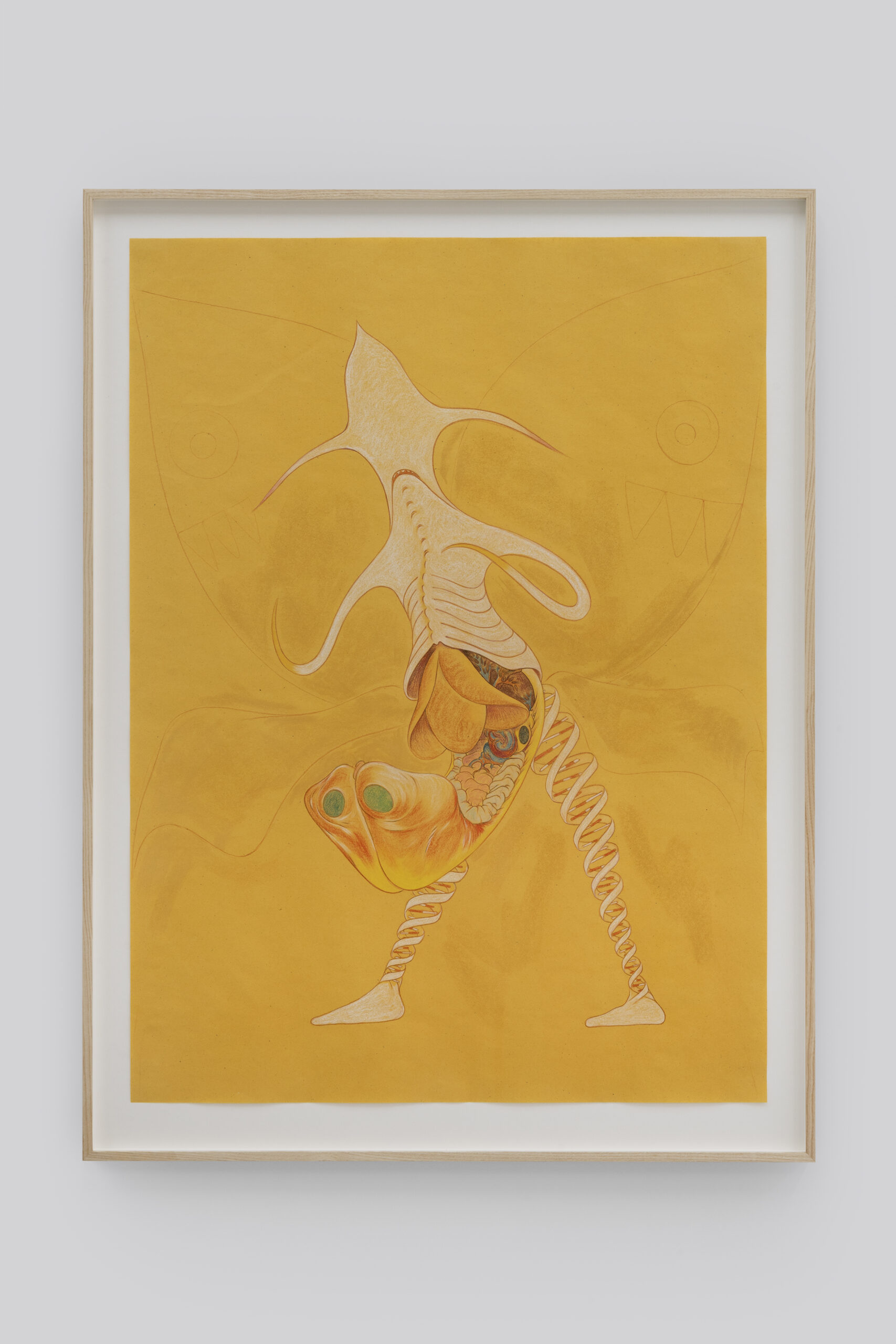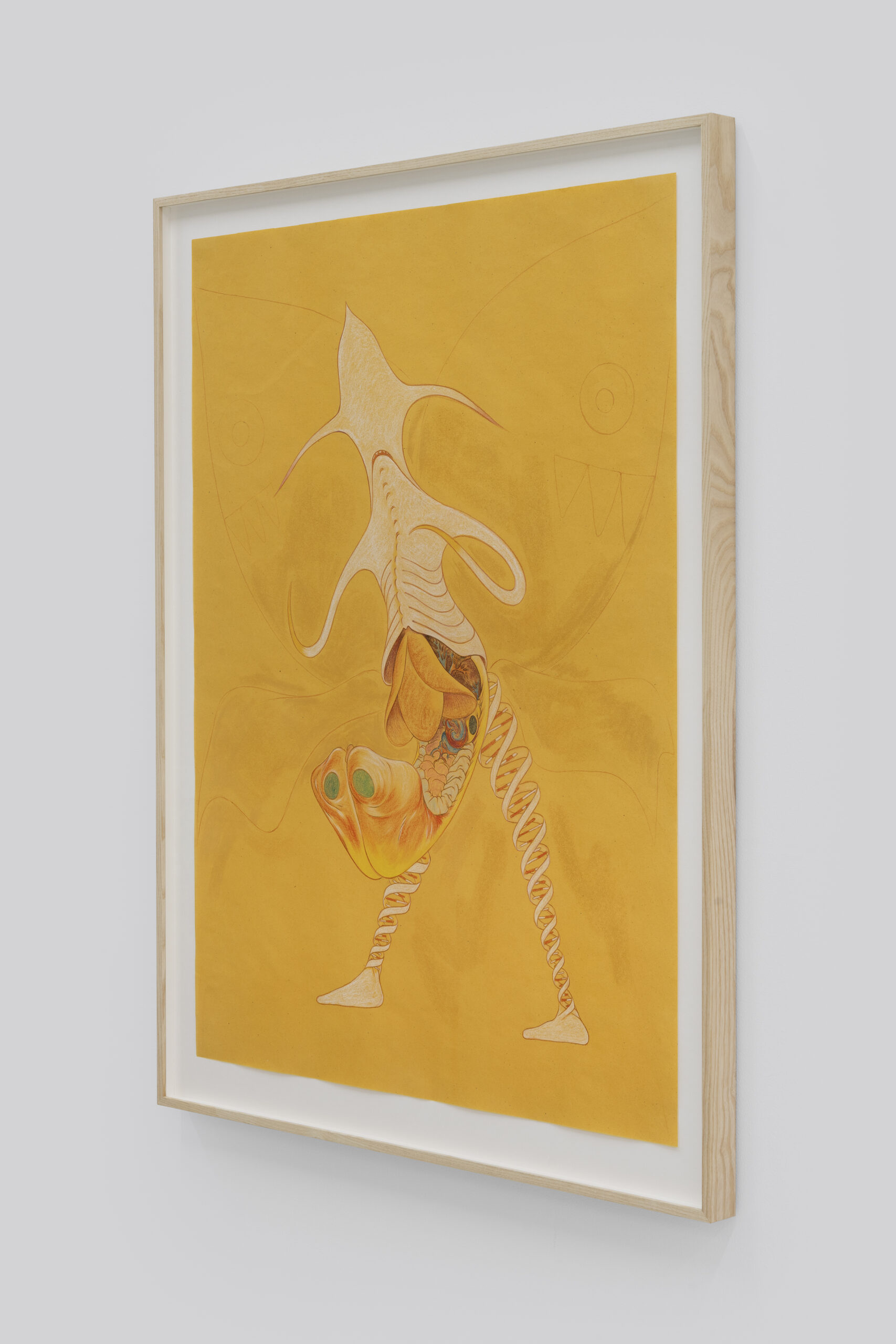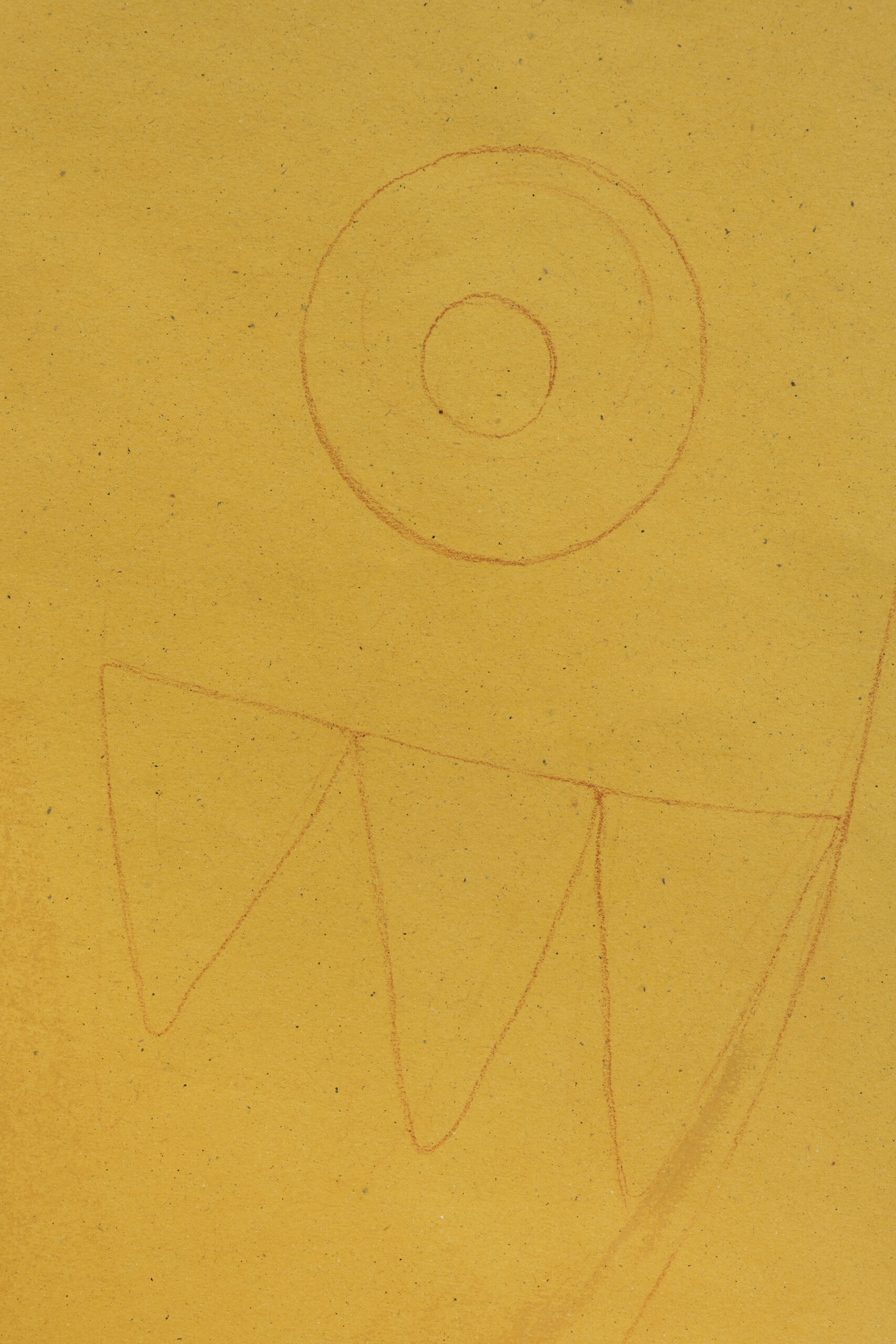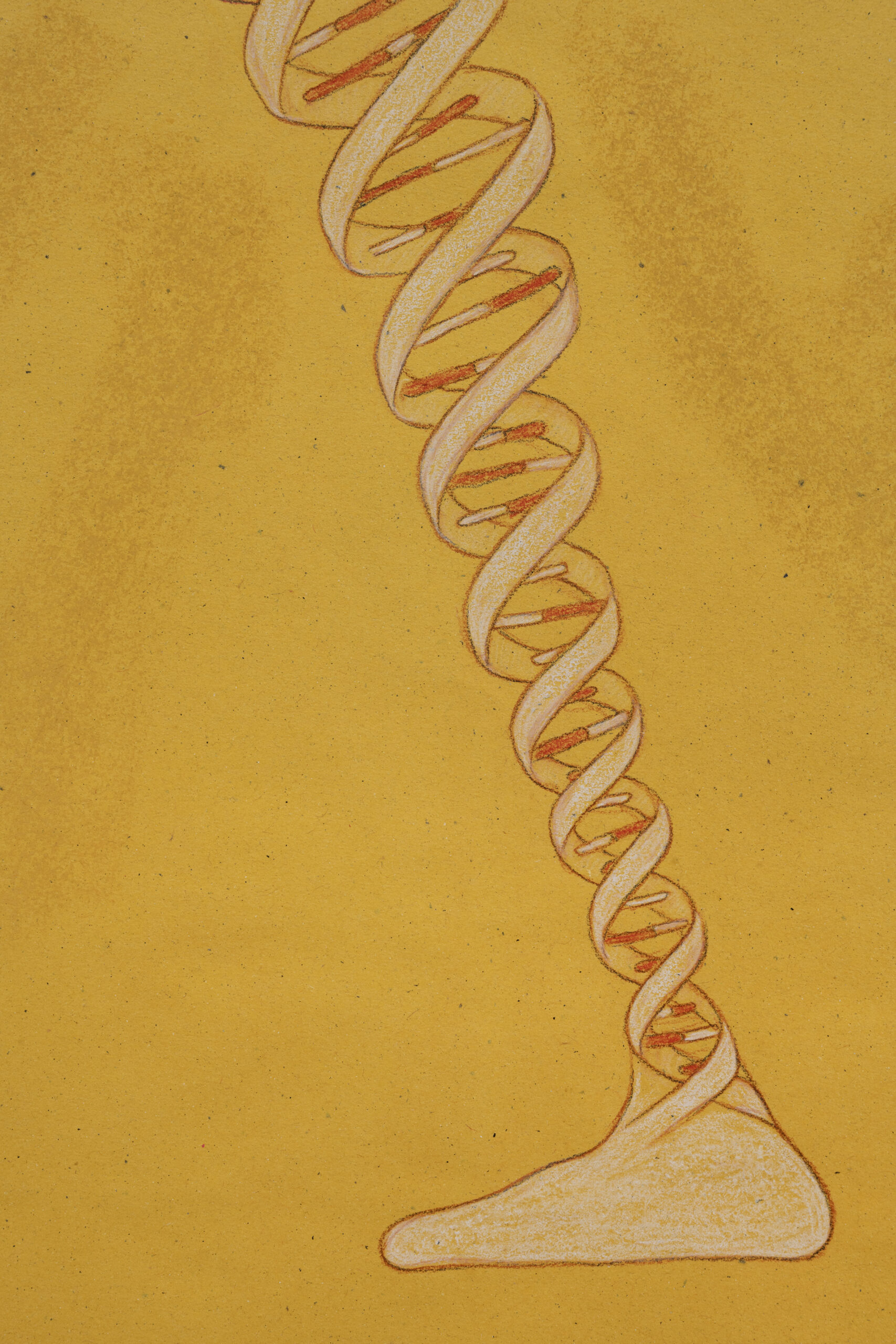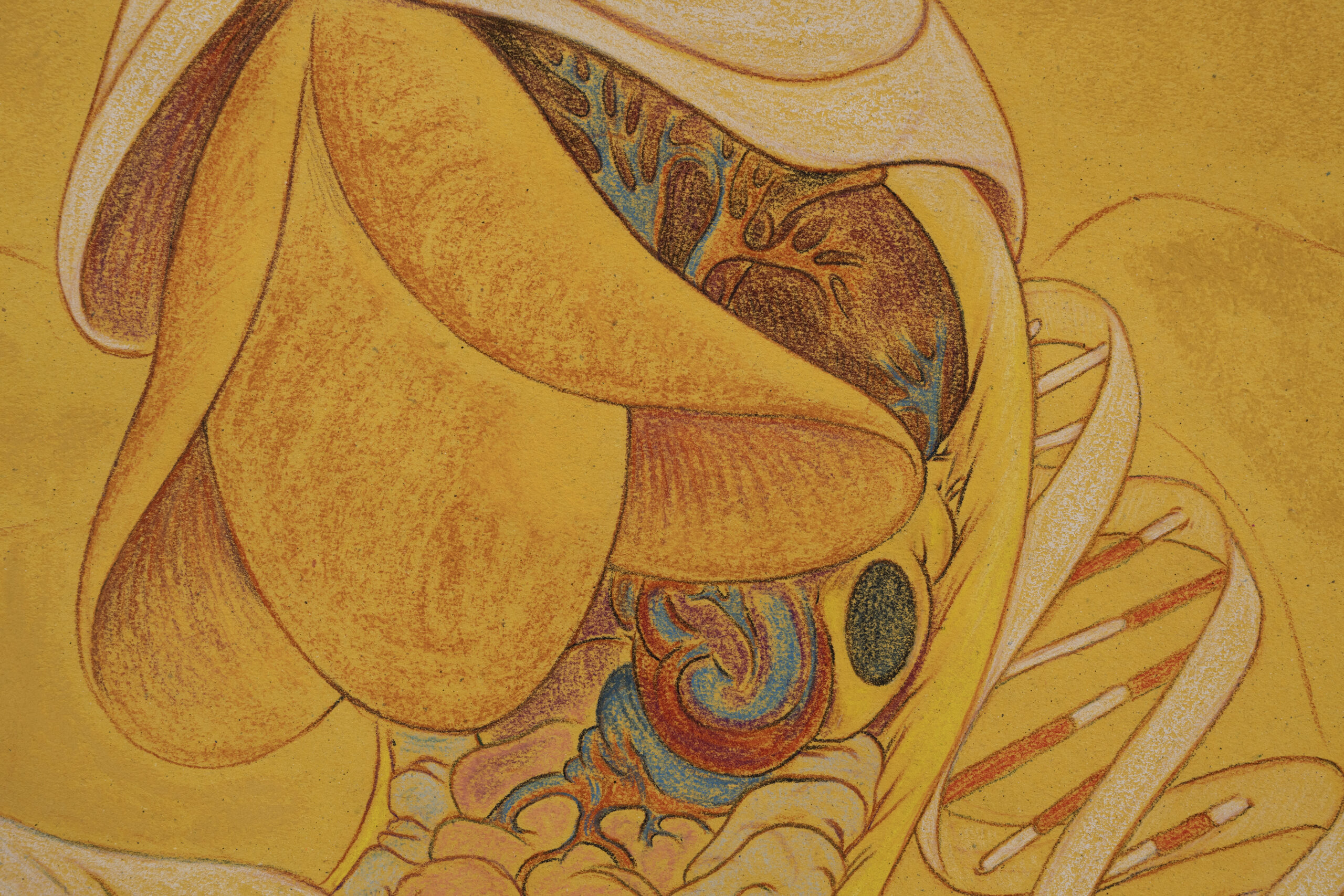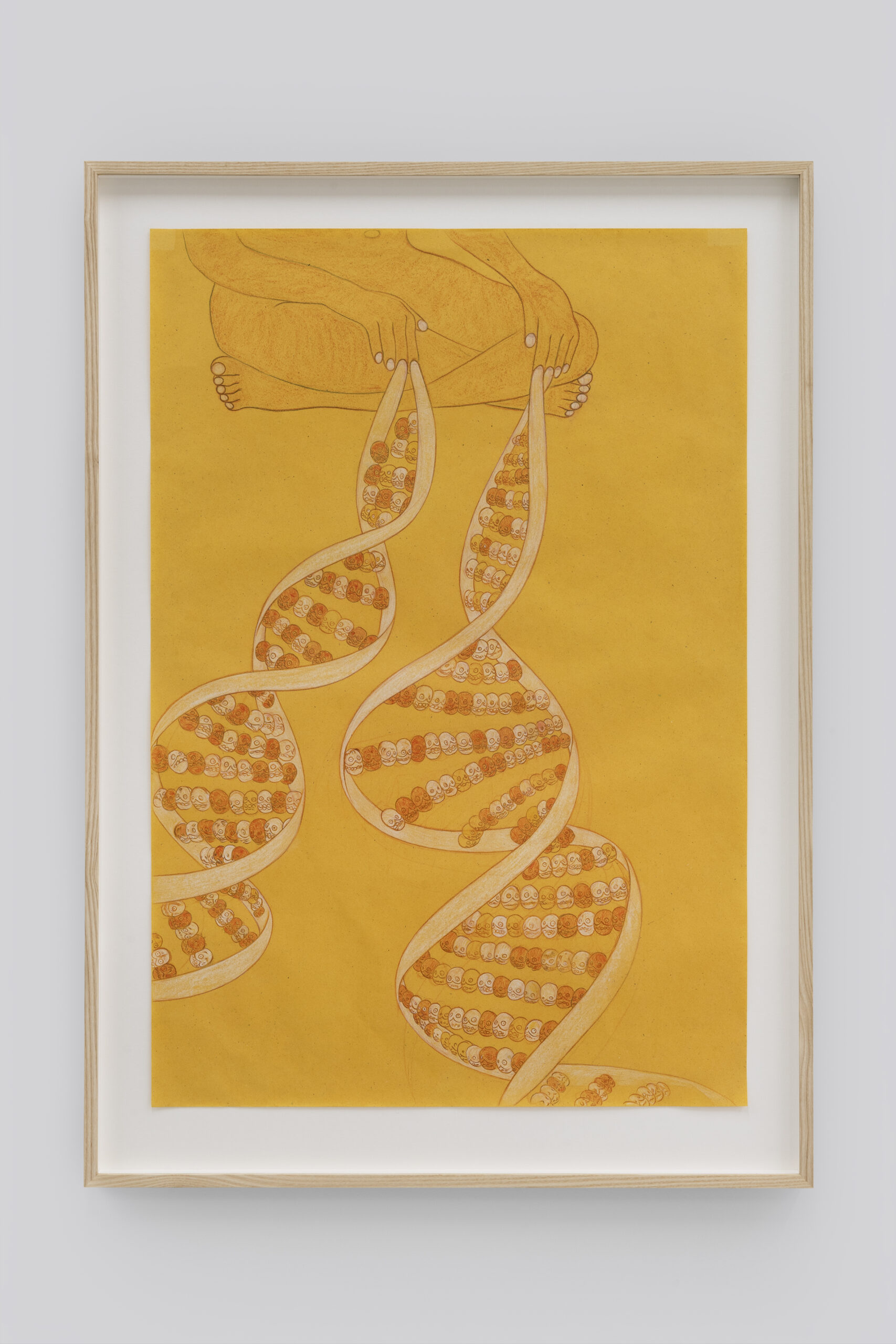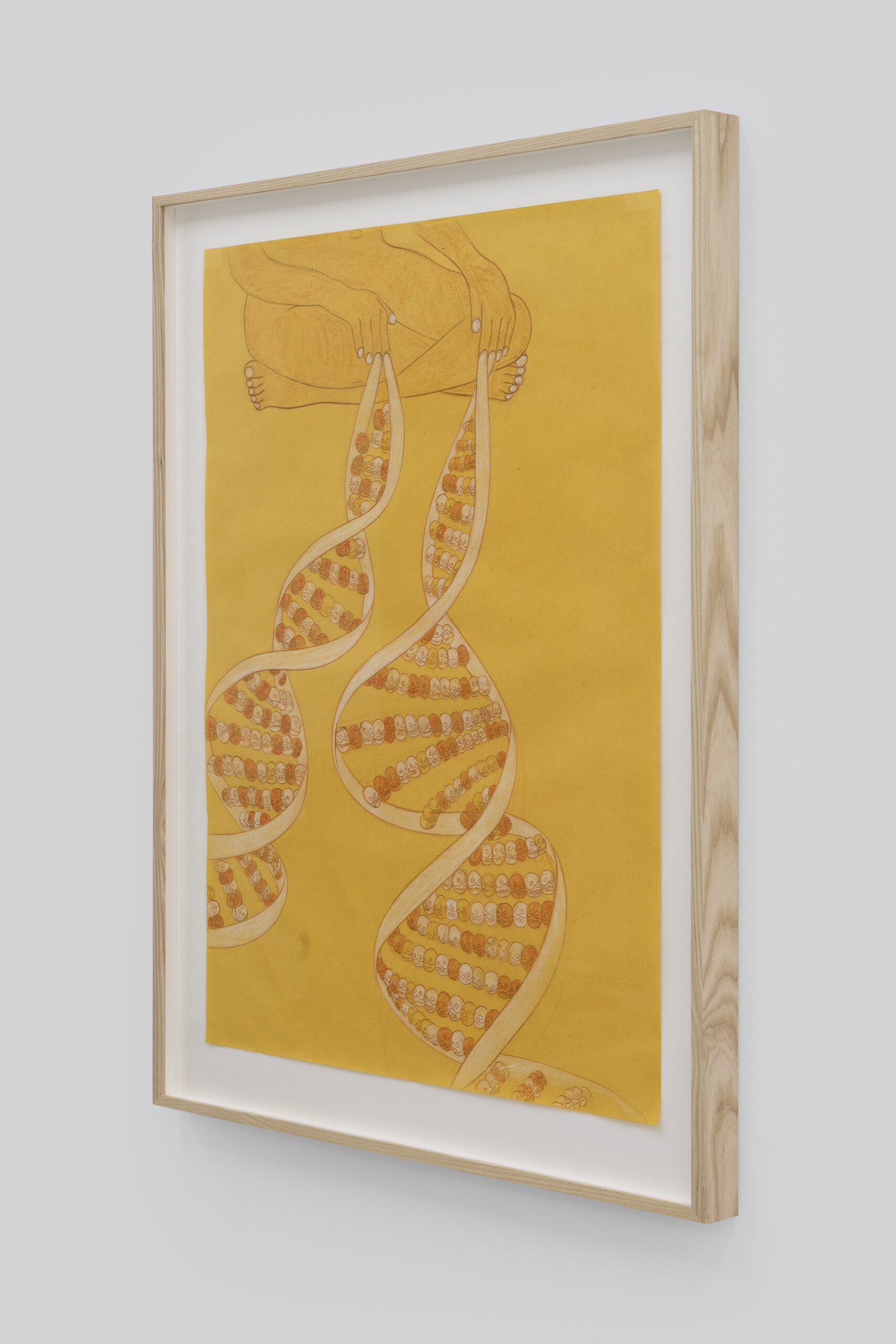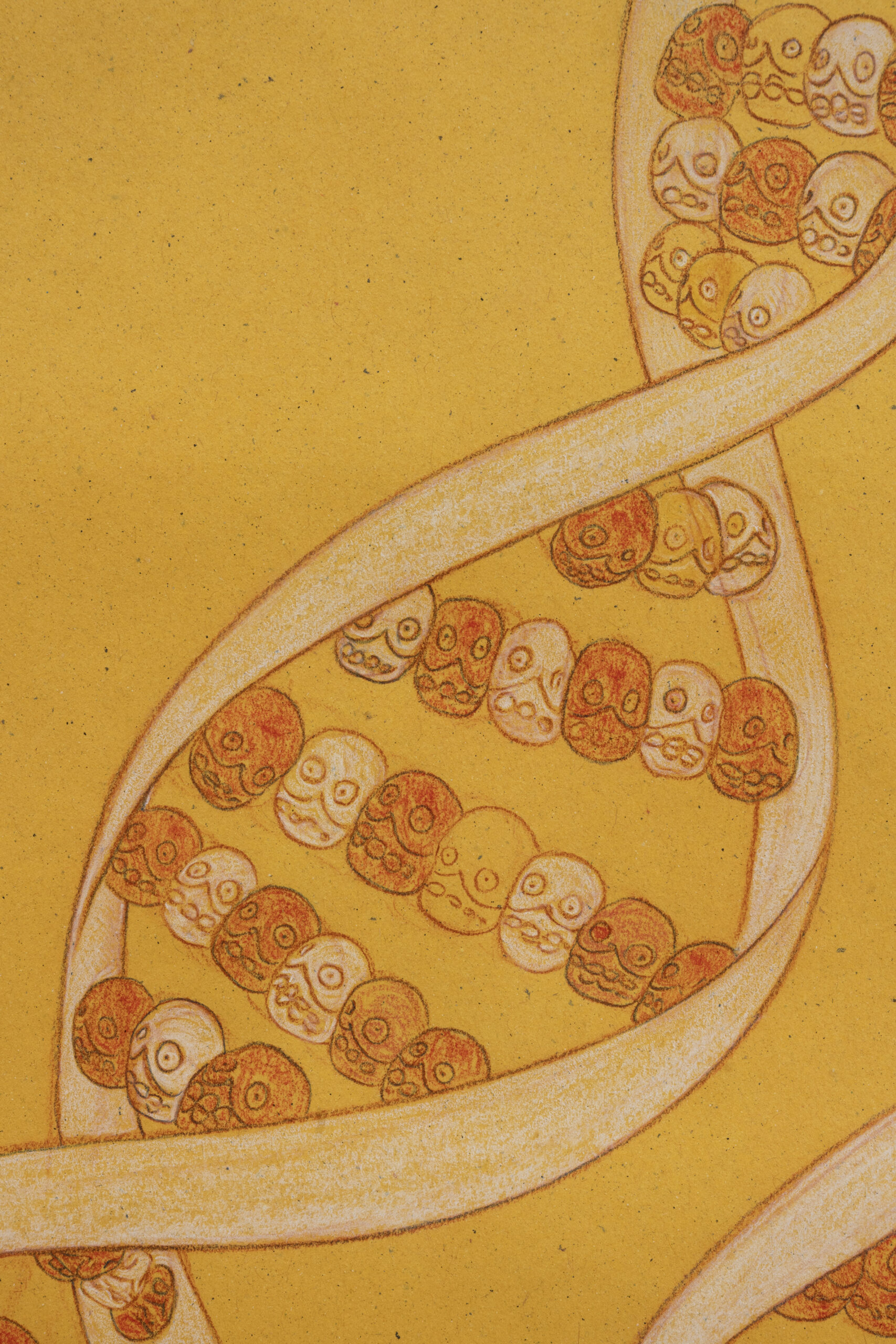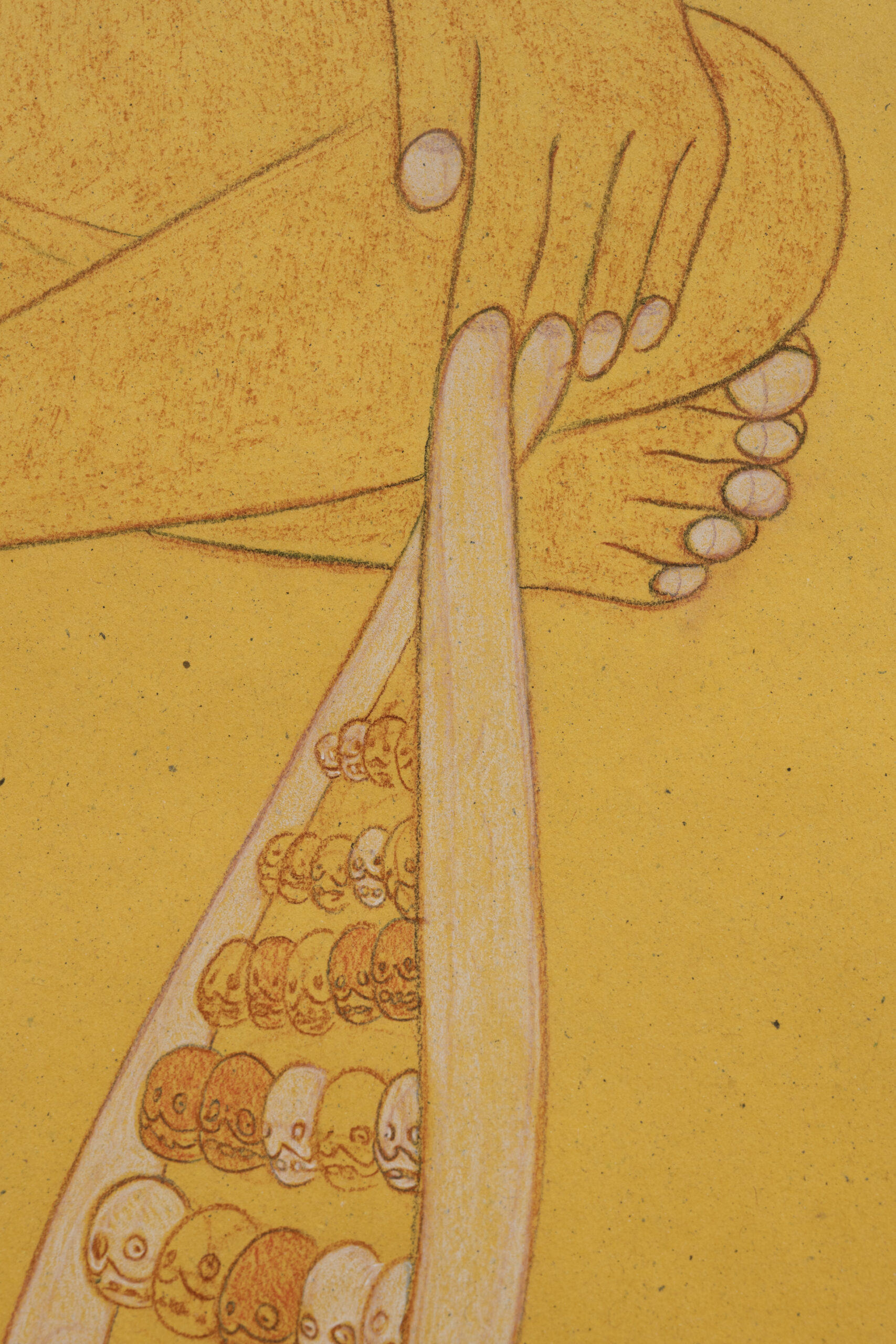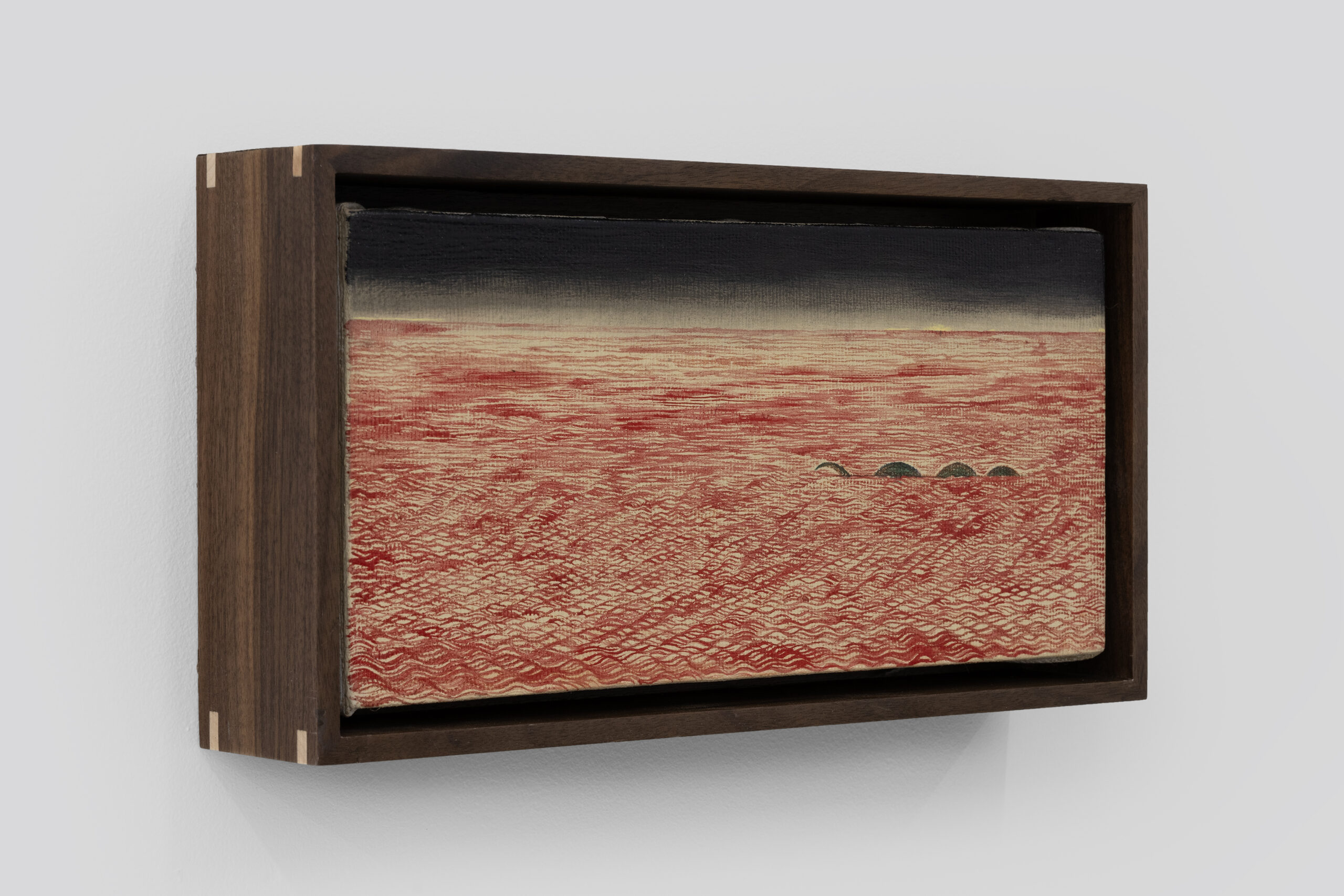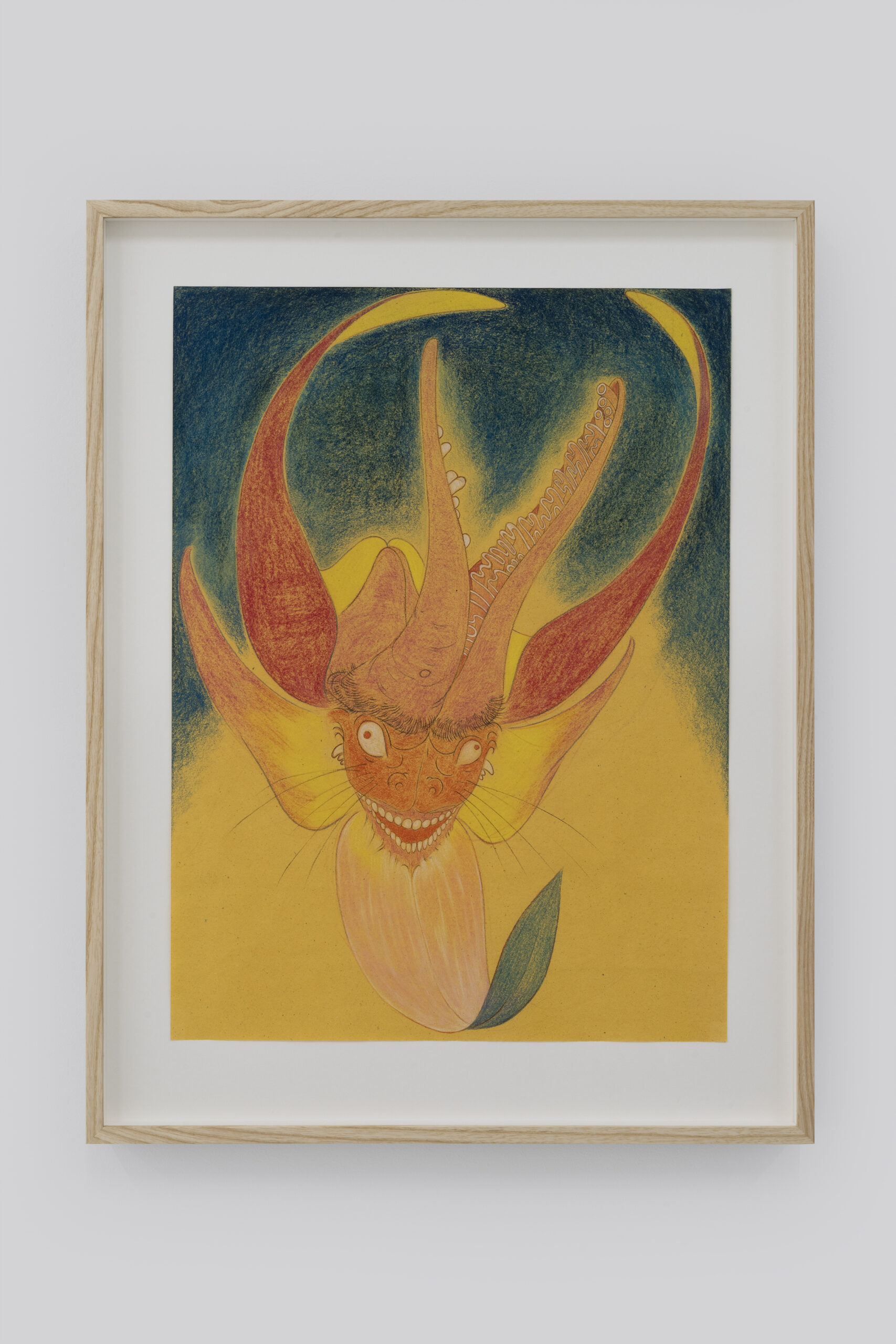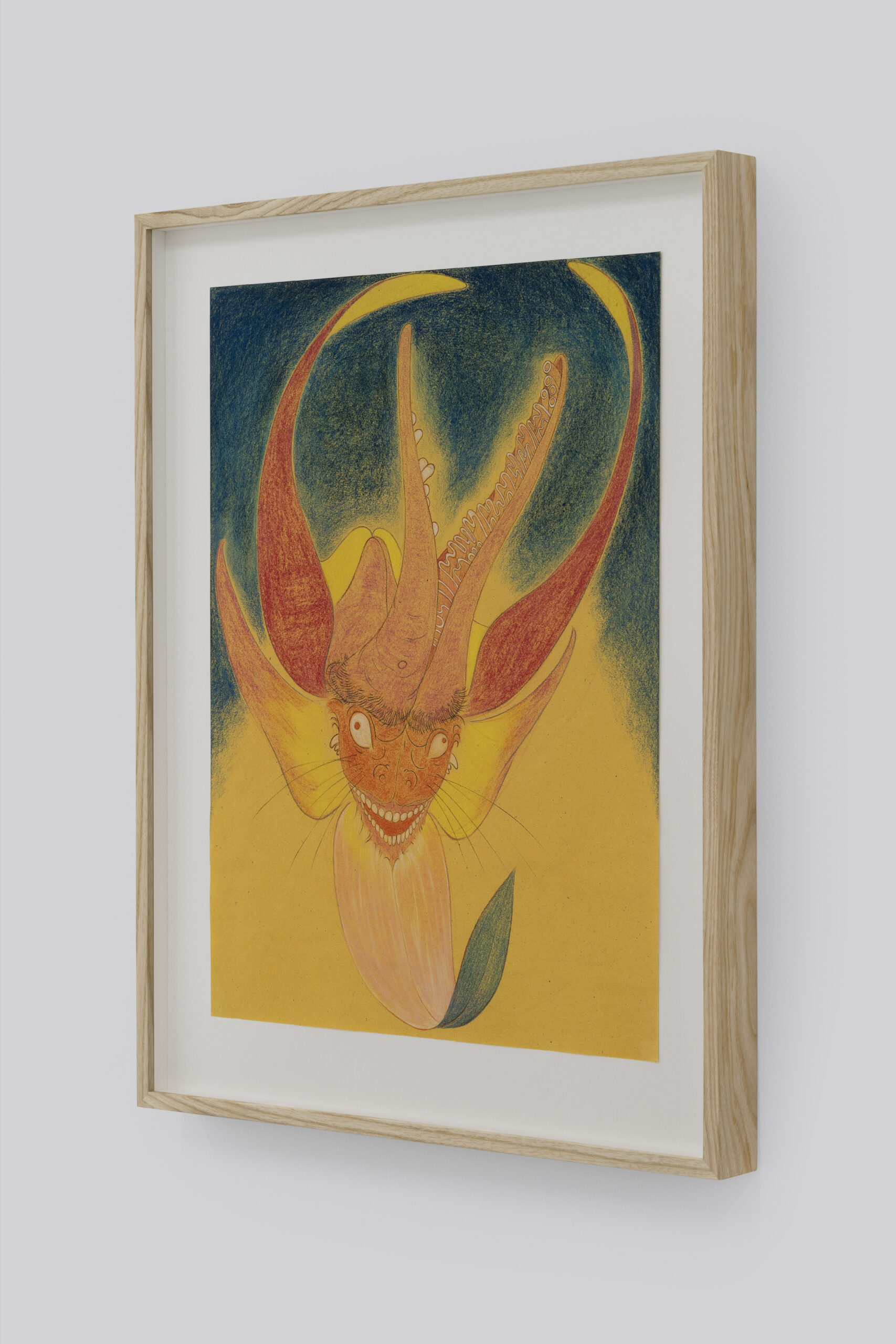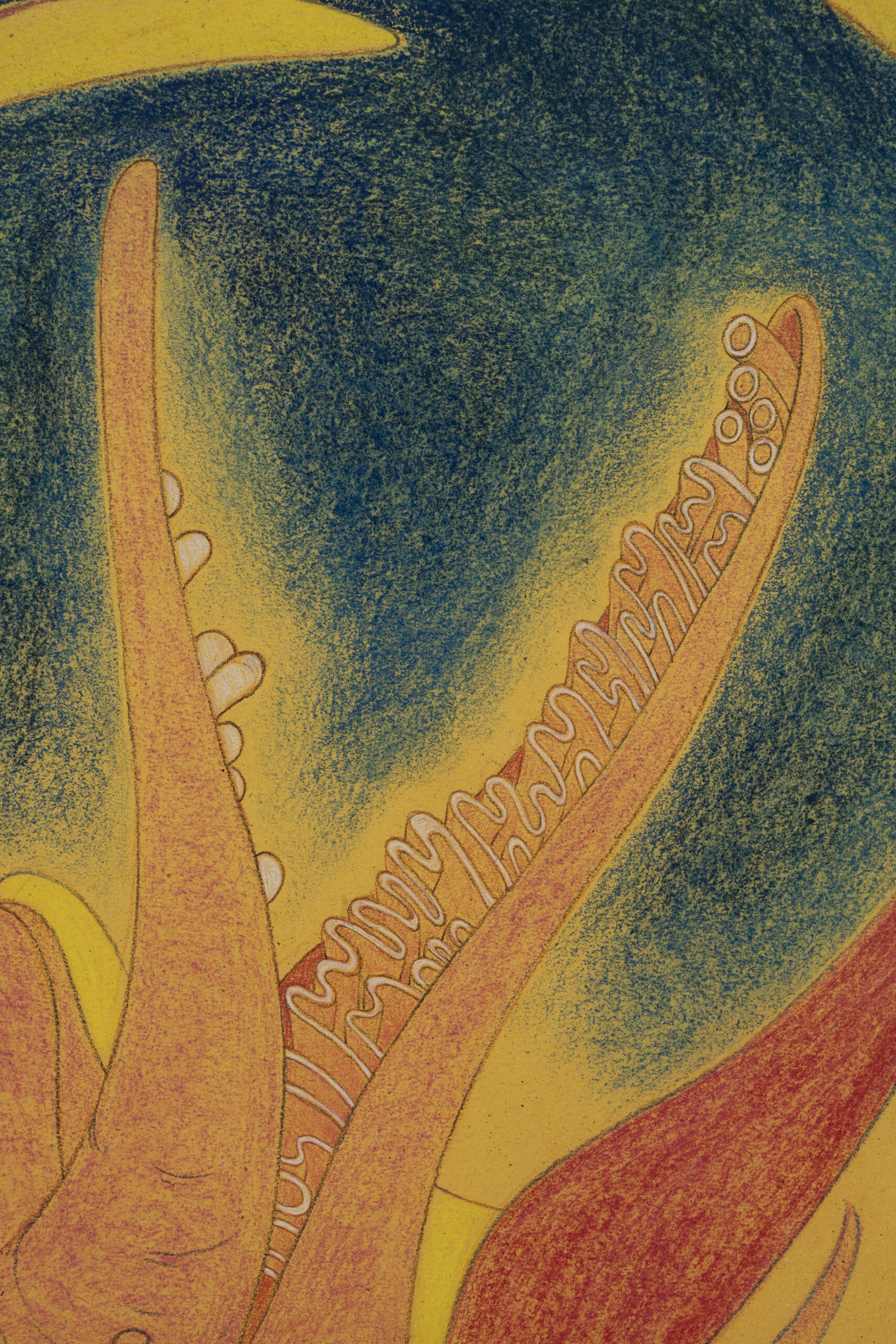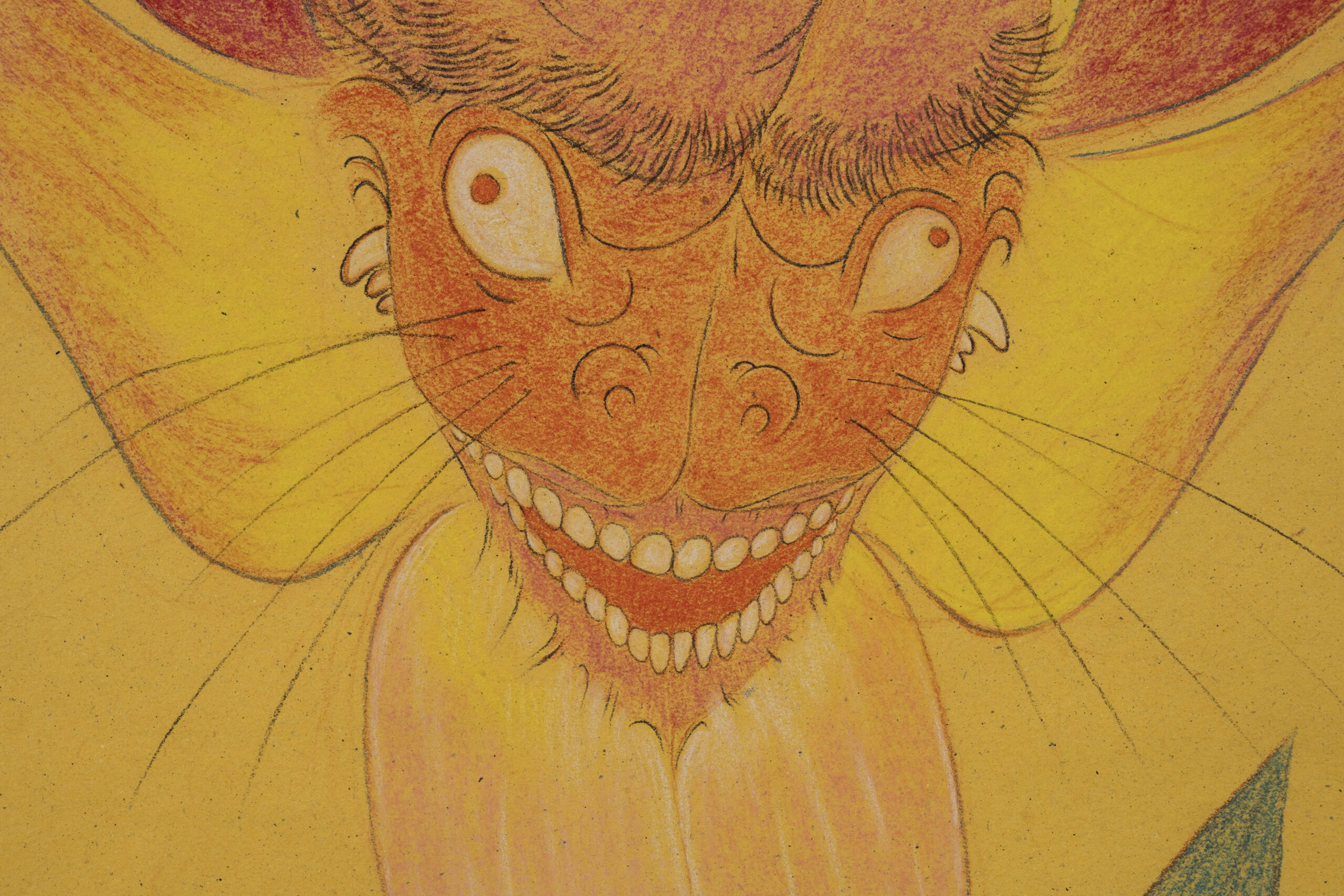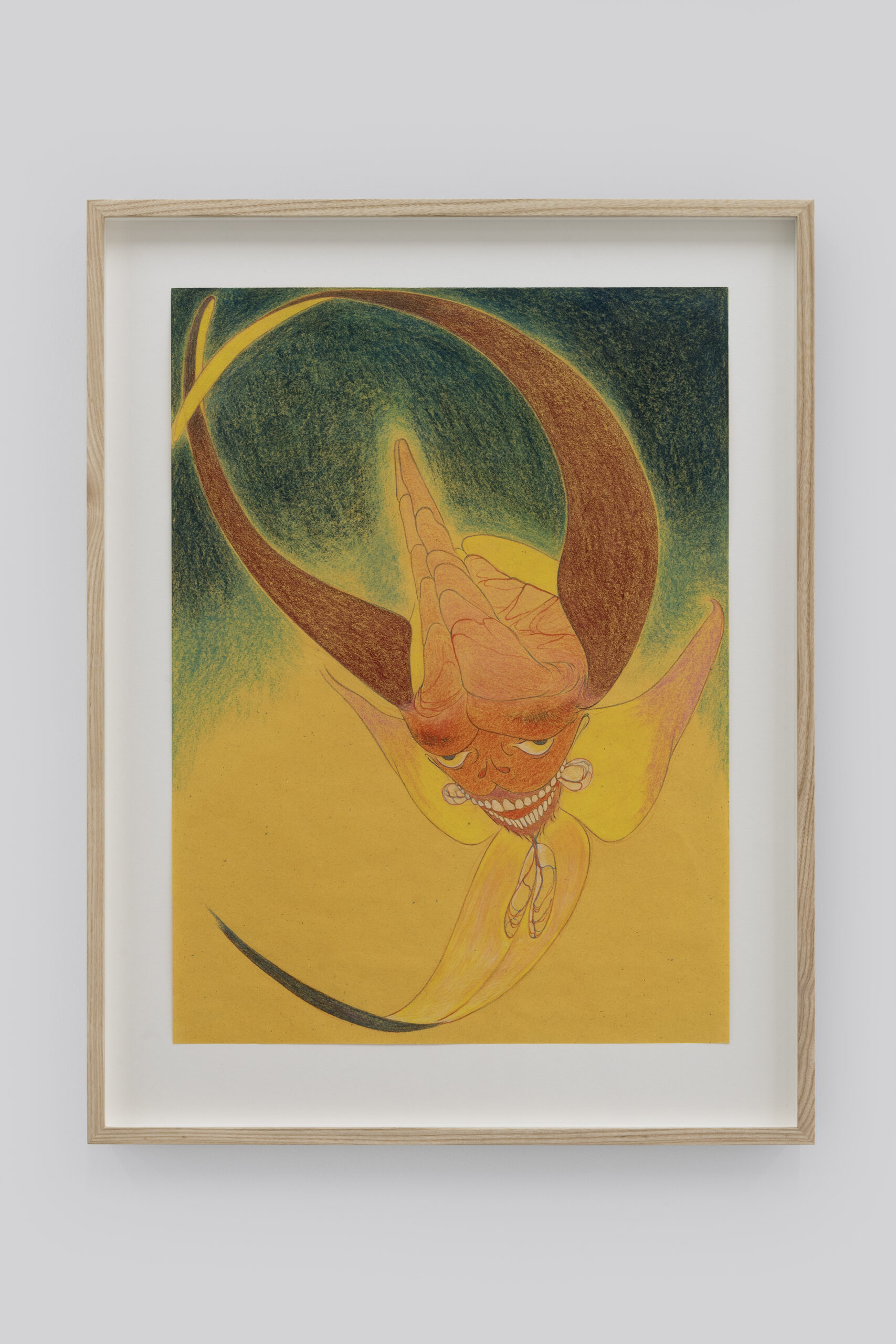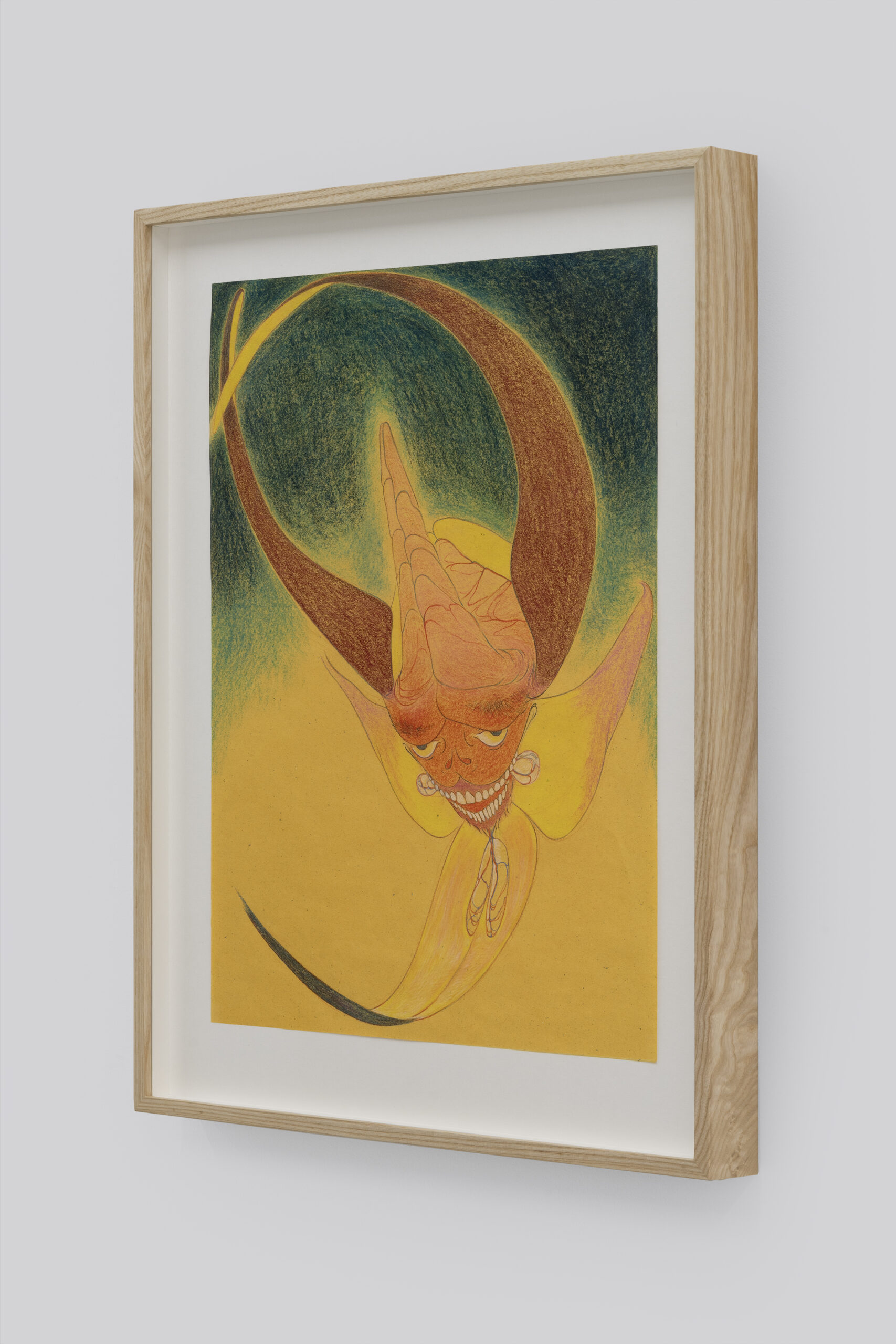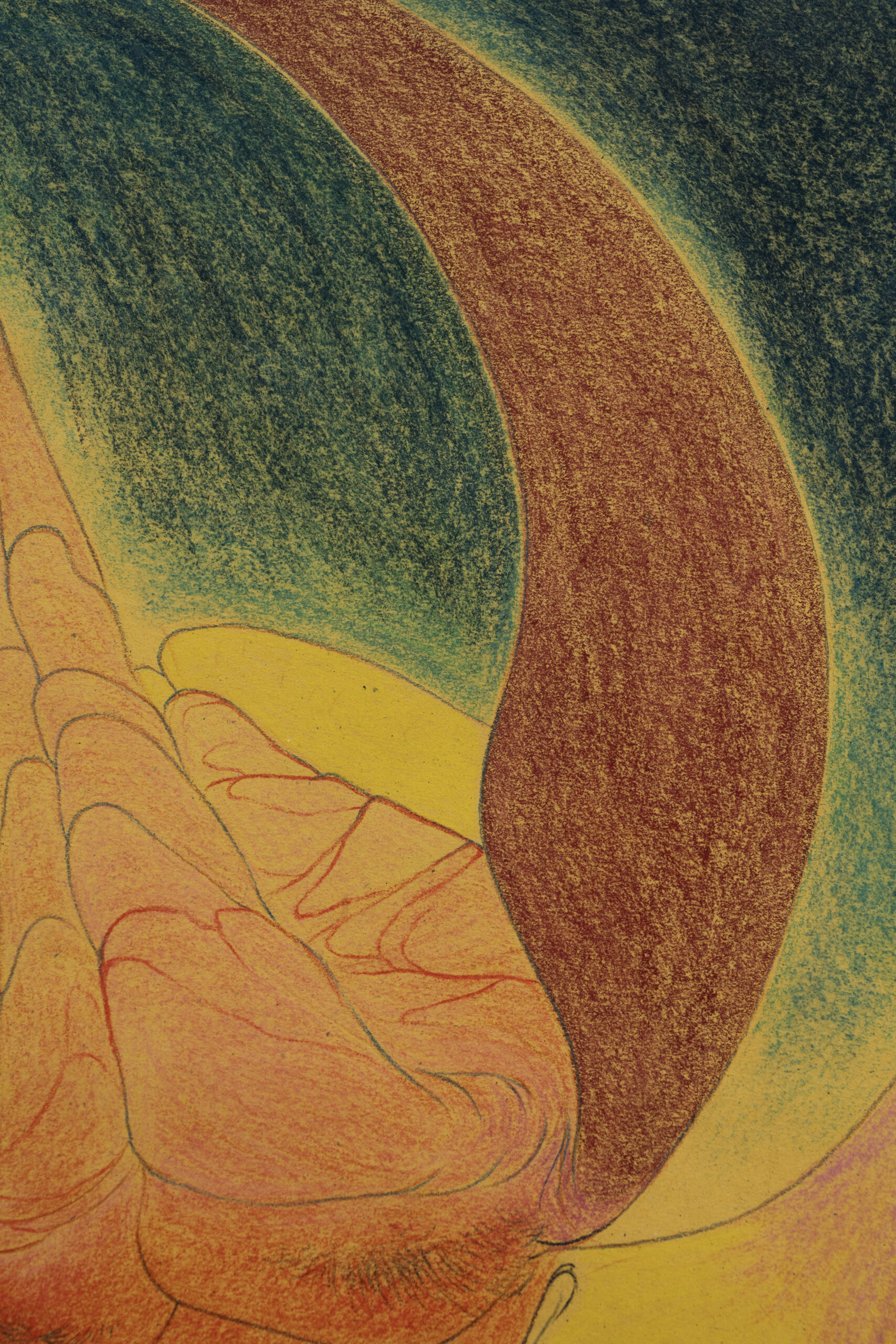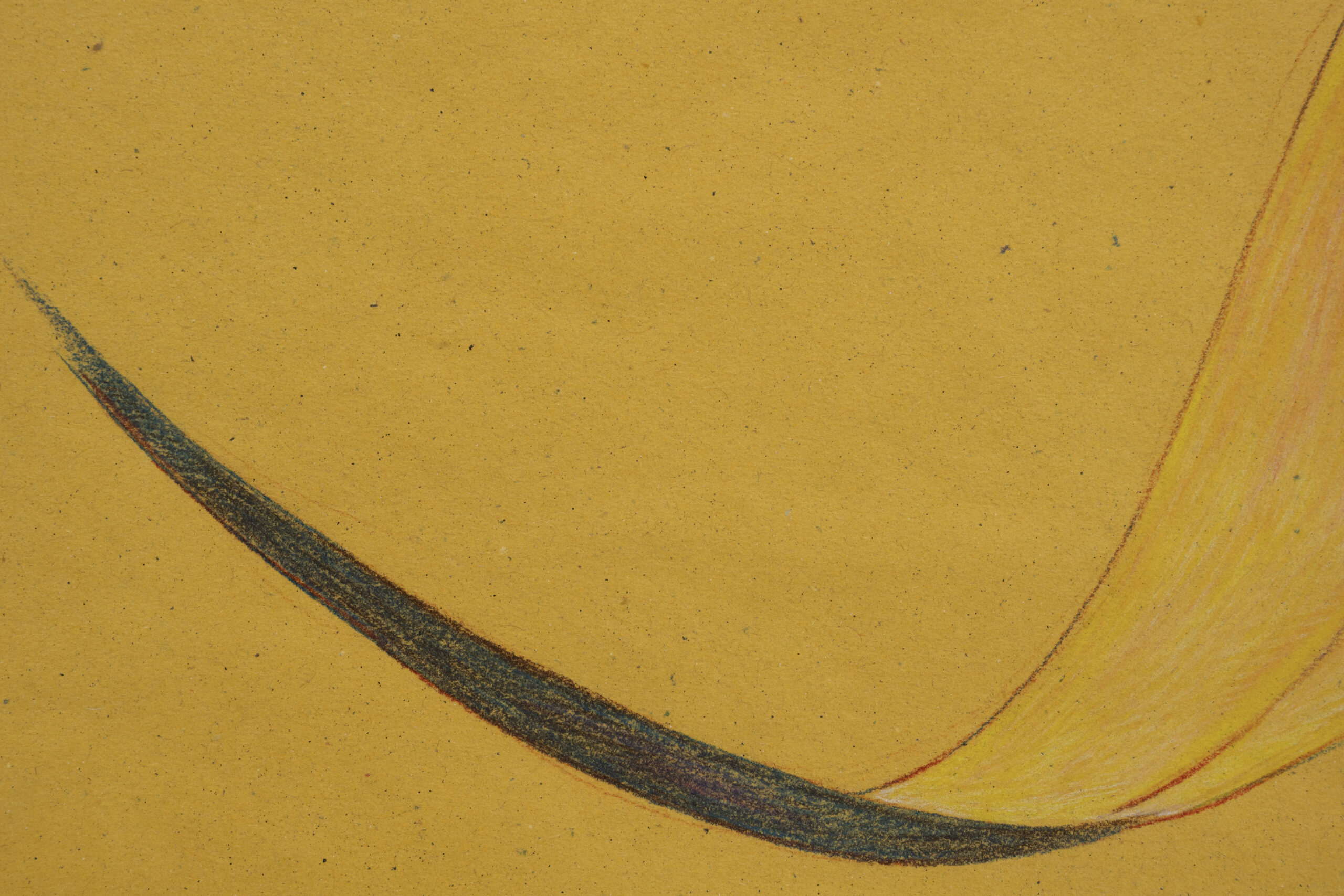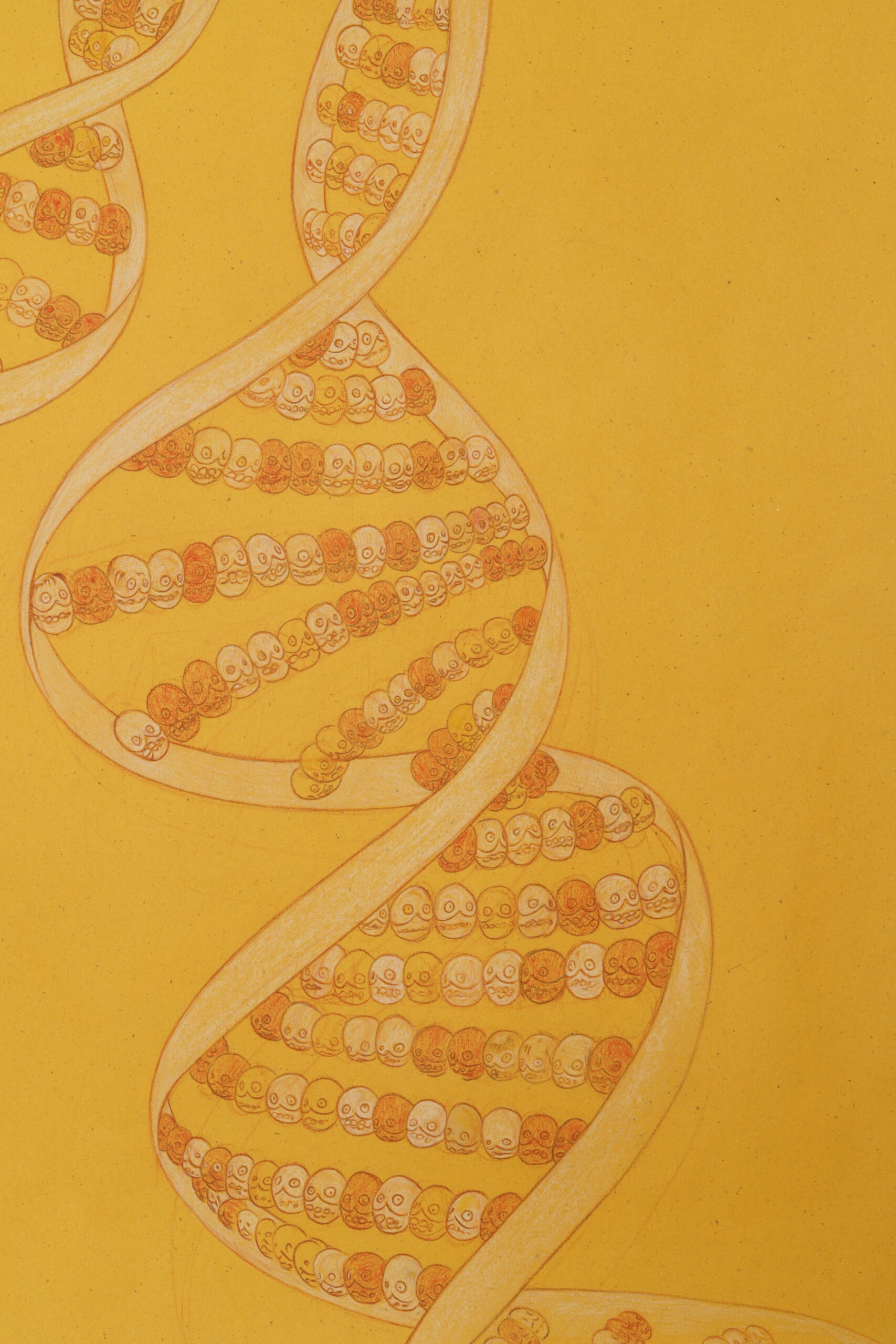
PRESS RELEASE
There are moments in the world when we need a willingness to be disturbed. To not avert our gaze from that which frightens us and which makes clear our finitude and powerlessness as human beings. Is it in the cramp of disturbance that we will find the strength to transmute the reality of our condemned bodies? What transformative potential do the aesthetics of the sinister offer? What is at stake when the sublime is suppressed? Contemporary societies are permeated by systematic anaesthetisation, leading to the proliferation of artistic practices that mobilise optimistic, harmless beauty. This conditions us to a nihilism that refuses to confront or be affected by the aesth(ethic) power of the trembling flesh and blood of the martyred.
I have a theory that we have embodied this sensory numbness since those times when the gaze domesticated flora and fauna through painting, a discipline promoted by the colonies that brutally spread throughout the world. The reciprocal and constitutive relationship between beauty and horror originates in landscape painting, ethnographic painting and still lifes. This relationship was triggered by colonial plundering, a system that included the extraction, exploitation and commercialisation of flowers that decorated millions of European homes. Since the 16th century, still lifes in particular—one of the oldest pictorial traditions in Western art—have turned the decay of flowers into a symbol of beauty. This established flowers as the centre of perception and the very embodiment of beauty in tension with death, at a time when Protestantism removed art from religious divinity as the subject of its imagery. Consequently, the representation of decaying flowers confined the idea of beauty to sensual and immediate pleasure, to objects pleasing to the senses, to moderation in proportions, to peaceful contemplation, and to serene emotions. It is in the motif of flowers that a key idea of what eventually became a cornerstone of coloniality is sustained: universality. With qualities such as clarity of hue, luminosity of surface, and softness and variety of colours, beauty through painting came to suspend the rotting of the plucked flower that dies submerged in the water of a vase. An instrumentalisation from the aesthetics of the reciprocal relationship between beauty and horror, veiled by pictorial technique to establish a moral sensibility that is incapable of recognising the horror that sustains and motivates it.
Faced with the historical colonial insistence on elevating flowers as symbols of moral goodness, Javier Barrios (Guadalajara, Mexico, 1989) through his drawings transmutes their representation—and the very meaning of beauty—into cosmic horror. This horror confronts us with the grandeur of something so vast and ancient that it is almost incomprehensible. Barrios’ drawings invite us to interpret scenes that break not only with the usual coordinates of reality, but also with imagination under monocultural regimes. Appropriating the aesthetics of botanical and animal illustration, and paying homage to both Zapotec art forms and Japanese and Chinese drawing, Barrios twists the Western representation of flowers to portray them as imposing monstrous deities and inhabitants of an infernal cosmos. These deities reveal themselves as strange, fearsome and omnipotent entities that seem to contain the primordial chaos where the vital force of existence is continually revolutionised.
Like exterminating angels, Barrios’ orchids—inspired by those that attract foul-smelling pollinators—stare at us with spidery eyes and smile at us with drooling fangs. Their petals seduce us with their reptilian skin patterns, the textures of their fur and sharp veins, to immerse us in their moist sexual organs, suggestive folds exposed like viscera whose juices give rise to sodomy. Suspended in the air, these angels seem to descend, opening their bulbs to reveal an aura that attracts with its mystery and horrifies with its cracking excess, giving us the opportunity to achieve a burning vision of “open life”. Could this be an opportunity to embrace the imposing, and fracture any presumption of human supremacy?
Halfway between extraterrestrial beings and deities, at once inhabitants of Earth and the universe, these flowers have unleashed the flames of the underworld to regain control of the chaos that constitutes the planet—thereby putting into perspective any presumption of power among our human and mortal societies. Barrios’ anomalous drawings recall the power of mythologies that express the ambivalence of the world, thus arousing a double feeling: curiosity and wonder at the unlimited mystery they offer, and horror at the lack of footholds, placing us before an indecipherable horror that will motivate our passions to escape reason and civilisational sanity. Only the wise scribes, whose molecules conceal the eternal cycle of death as a proliferation of life, have allowed themselves to be disturbed to the point of dispossession in order to experience the secret delight of terror and reach the strange, the undefined and the ineffable. The invitation is to gaze into the abyss — a necessary shock that will make us abandon all certainty and confront the sublime possibility of horror.
– Diego Del Valle Rios
SELECTED WORKS
Javier Barrios
Arrival, 2025
pastel on paper
framed: 106 x 80 x 4 cm
41 3/4 x 31 1/2 x 1 5/8 in
JB006
Javier Barrios
Angel exterminador, 2025
pastel on paper
framed: 106 x 80 x 4 cm
41 3/4 x 31 1/2 x 1 5/8 in
JB007
Javier Barrios
Portal al inframundo, 2025
oil on linen
framed: 62.5 x 47.5 x 5 cm
24 5/8 x 18 3/4 x 2 in
JB009
Javier Barrios
Deformación craneal I, 2025
oil on linen
framed: 132.5 x 97.5 x 5 cm
52 1/8 x 38 3/8 x 2 in
JB010
Javier Barrios
Deformación craneal II, 2025
oil on linen
framed: 132.5 x 91 x 5 cm
52 1/8 x 35 7/8 x 2 in
JB011
Javier Barrios
De las profundidades oscuras, de donde no hay ninguna luz, 2025
pastel on paper
framed: 106 x 80 x 4 cm
41 3/4 x 31 1/2 x 1 5/8 in
JB005
Javier Barrios
Tiras cósmicas, 2025
pastel on paper
framed: 81 x 58 x 4 cm
31 7/8 x 22 7/8 x 1 5/8 in
JB004
Javier Barrios
Paisaje primigenio, 2025
oil on canvas
framed: 15.5 x 29.5 x 5.8 cm
6 1/8 x 11 5/8 x 2 1/4 in
JB008
Javier Barrios
Botanical nightmare I (My organs exposed to the primal elements), 2025
pastel on paper
framed: 59 x 45.5 x 4 cm
23 1/4 x 17 7/8 x 1 5/8 in
JB012
Javier Barrios
Laughing bulbophyllum (The sounds of my laugh will haunt you all forever), 2025
pastel on paper
framed: 59 x 45.5 x 4 cm
23 1/4 x 17 7/8 x 1 5/8 in
JB013
